The 10 Best Places to Visit in Zimbabwe
:max_bytes(150000):strip_icc():format(webp)/DSC00412-5b73daf7c9e77c0057ca2198.jpg)
Wolfgang_Steiner/ Getty Images
For many years, Zimbabwe ’s reputation as a travel destination has been tainted by the specter of political unrest. However, the country is more stable now than it has been for decades, and slowly, tourism is returning. Most of Zimbabwe’s top attractions are found outside the main cities, and are therefore considered relatively safe. Those that decide to visit can expect breathtaking nature areas, exotic wildlife and ancient sites that offer a fascinating insight into the continent’s history. Best of all, Zimbabwe’s world-class game reserves and UNESCO World Heritage Sites remain incredibly uncrowded — giving you the truly thrilling sense of having stepped off the map. Here are 10 of the best places to visit on your Zimbabwe adventure.

Hwange National Park
Located to the west of the country on the border with Botswana , Hwange National Park is the oldest and largest of Zimbabwe’s game reserves. It covers a vast expanse of around 5,655 square miles/14,650 square kilometers and provides a refuge for over 100 species of mammal - including the Big Five . It is most famous for its elephants — in fact, the Hwange elephant population is thought to be one of the largest in the world. The park is also home to some of Africa’s rarest safari animals, including the African wild dog, the brown hyena and the critically endangered black rhino. Birdlife is abundant here, with over 400 species recorded within the park. Accommodation in Hwange National Park ranges from luxury lodges located in their own private concessions, to rustic camps that offer the chance to spend a night under canvas in the heart of the African bush.
Victoria Falls
In Zimbabwe’s far west corner, the Zambezi River marks the border with Zambia. At Victoria Falls , it plunges off a precipice measuring 354 feet/108 meters in height and 5,604 feet/1,708 meters in width. This is the largest sheet of falling water on the planet, and one of the Seven Natural Wonders of the World . In peak flood season (February to May), the spray thrown up by the plunging water can be seen from 30 miles/48 kilometers away. This magnificent spectacle gives the falls its indigenous name — Mosi-oa-Tunya , or "The Smoke That Thunders". On the Zimbabwean side, a path winds its way along the edge of the gorge. Viewpoints offer breathtaking panoramas of the plummeting water and the rainbows that hang suspended above the chasm. The sound is deafening and the spray soaks to the skin - but the spectacle is one that can never be forgotten.
Lake Kariba
Northeast of Victoria Falls, the Zambezi River feeds into Lake Kariba , another superlative body of water located on the Zambian border. Created after the construction of the Kariba Dam in 1959, Lake Kariba is the world’s largest man-made lake in terms of volume. It stretches for over 140 miles/220 kilometers in length, and measures 25 miles/40 kilometers across at its widest point. There are several lodges located along the lake shores, but the traditional way to explore is on a houseboat. Kariba is renowned as one of the best places in the world to catch tiger fish, a ferocious freshwater species prized by sport fishermen for its strength and tenacity. The lake’s islands also offer ample opportunities for game viewing. Perhaps the most rewarding wildlife area is Matusadona National Park , located on Kariba’s southern shore.
Mana Pools National Park
Mana Pools National Park is located in the far north of the country, and is renowned as one of the most pristine nature areas in Zimbabwe. It is recognized as a UNESCO World Heritage Site for its incredible concentrations of wildlife, including elephant, buffalo, leopard and cheetah . Mana Pools is also a haven for water-based wildlife, with large populations of hippo and Nile crocodile. They live in the four pools that give the park its name, each one created by the Zambezi River before it altered its course to flow northward. The largest of these is approximately 3.7 miles/6 kilometers long and provides a valuable source of water even in the height of the dry season . The abundance of water makes this park a prime spot for birders, too. It’s also the best destination in the country for walking safaris and self-sufficient camping trips.
If you find yourself craving urban culture, pay a visit to Bulawayo, Zimbabwe’s second-largest city (after the capital, Harare). Founded in the mid 19th-century by Ndebele king Lobhengula, the city came under the rule of the British South Africa Company during the Matebele War . As a result, much of the city’s present-day architecture dates back to the colonial era, and walking through the wide, jacaranda-lined streets feels a lot like stepping back in time. Top attractions in Bulawayo include the Natural History Museum , home of taxidermied safari animals and rarities including a dodo egg and a prehistoric coelacanth fish. It is possible to encounter living African animals at Chipangali Widlife Orphanage , located a short drive southeast of the city. Medieval replica Nesbitt Castle adds to Bulawayo’s atmosphere of eccentric history and doubles as a boutique hotel.
Great Zimbabwe National Monument
A four-hour drive south of Harare or east of Bulawayo will take you to the Great Zimbabwe National Monument , another UNESCO World Heritage Site. The site protects the remains of Great Zimbabwe, the capital of the historic Kingdom of Zimbabwe and the most important stone ruins south of the Sahara. Built between the 11th and 15th centuries, the ruins cover a vast area and include a hilltop acropolis that would once have housed kings and chiefs. The surrounding valley is littered with the ruins of more humble dwellings, all of which were built using granite blocks cut so perfectly that no mortar was needed to hold them together. Artifacts including Arab coins from the East African coast and porcelain from China have been discovered here, suggesting that Great Zimbabwe was once a wealthy and powerful center of trade.
Matobo National Park
Matobo National Park is located 25 miles/40 kilometers south of Bulawayo. The park’s name means “Bald Heads” in the local Ndebele language — a moniker that refers to its fascinating granite rock formations. Some of these rocks are impossibly balanced on top of one another, and many of them are marked with ancient rock art created by the San bushmen some 2,000 years ago. Cecil Rhodes , the controversial 19th-century imperialist, chose to be buried here, and his remains are marked by a brass plaque perched atop World’s View, the park’s most iconic viewpoint. Matobo National Park is a top destination for hikers and those hoping to see white and black rhino. Although there are no lion or elephant, it has one of the largest leopard populations in Southern Africa and is a great place to spot Verreaux’s eagles.
Chimanimani National Park
On the eastern border with Mozambique , mountainous Chimanimani National Park is a place of stunning natural beauty. The perfect destination for those wishing to hike, camp and lose themselves in the Zimbabwean wilderness, the park is defined by plunging gorges, lush valleys and soaring peaks. The highest summits reach over 7,990 feet/2,400 meters. The lower reaches of the park are covered by dense virgin forest, which in turn provides shelter for elusive wildlife including eland, sable and blue duiker antelope. Leopard roam free in the Chimanimani mountains and the birdlife is spectacular. This is also a good place to keep an eye out for Southern Africa’s smaller cat species . Amenities in the park include unpaved hiking trails, communal huts and a campsite with basic cooking and ablution facilities. Wild camping is also allowed throughout the park.
Christopher Scott/ Getty Images
Also located in the far east of the country, Mutare is Zimbabwe's fourth-largest city; yet has a laid-back atmosphere inspired by its scenic highland setting. It's known for its charming guesthouses and B&Bs, including popular budget option Ann Bruce Backpackers . Old-fashioned Mutare Museum is a must-visit for transport enthusiasts with a notable collection of vintage cars, motorbikes and steam engines. For nature lovers, Bvumba Botanical Reserve promises breathtaking views and walkways that give you the chance to look out for rare fauna including the Swynnerton's Robin and the endemic Samango monkey. For many people, Mutare's greatest worth is as a base for exploring the Bvumba Mountains or nearby Nyanga National Park. Overlanders appreciate its location a few minutes' drive from the Mozambique border post.
Chinhoyi Caves
Roger de la Harpe/ Getty Images
North central Zimbabwe is home to the mysterious Chinhoyi Caves. A subterranean system of limestone and dolomite caverns and tunnels, the caves are protected as park of Chinhoyi Caves National Park . Pottery and human remains uncovered here suggest that they have been inhabited since at least the 1st century. Most famously, they provided a refuge from raiding tribes for Mashona chief Chinhoyi and his people. The top attraction is the Wonder Hole, a collapsed cavern with sheer walls that drop into the crystalline Sleeping Pool. The glacial blue color of the lake's water makes for impressive photographs, and from here, visitors can enter the illuminated Dark Cave. Chinhoyi is a popular destination for technical scuba divers. Excursions can be arranged through Harare-based dive center Scubaworld & Universal Adventures .
Zimbabwe Travel Guide: Essential Facts and Information
Lake Kariba, Zimbabwe: The Complete Guide
Mana Pools National Park: The Complete Guide
The Best Time to Go on Safari
15 Animals to See on an African Safari
A Guide to Southern Africa's Four Corners Region
Top 10 Unmissable African Safari Destinations
Victoria Falls, Zimbabwe and Zambia: The Complete Guide
The Best Places to Go in Southern Africa
Akagera National Park, Rwanda: The Complete Guide
13 Amazing Trips to Take Before You Turn 40
The Top 12 Things to Do in Ethiopia
The Top 12 National Parks to Visit in Africa
Serengeti National Park, Tanzania: The Complete Guide
Hwange National Park: The Complete Guide
Africa Highlights: What to Do and Where to Go
THE 10 BEST Zimbabwe Sights & Historical Landmarks
Zimbabwe landmarks.
- Points of Interest & Landmarks
- Ancient Ruins
- Sacred & Religious Sites
- Churches & Cathedrals
- Historic Sites
- Architectural Buildings
- Monuments & Statues
- Scenic Walking Areas
- 5.0 of 5 bubbles
- 4.0 of 5 bubbles & up
- 3.0 of 5 bubbles & up
- Budget-friendly
- Good for Big Groups
- Good for Kids
- Good for Couples
- Good for a Rainy Day
- Good for Adrenaline Seekers
- Honeymoon spot
- Adventurous
- Hidden Gems
- Things to do ranked using Tripadvisor data including reviews, ratings, photos, and popularity.
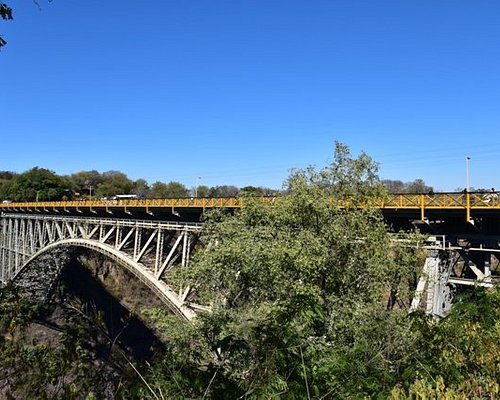
1. Victoria Falls Bridge
2. Great Zimbabwe National Monument

Recommended Sightseeing Experiences (467)
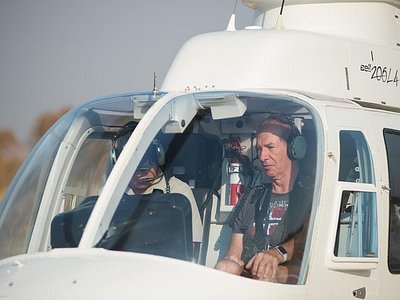
3. Matobo Hills

4. World's View
5. Cecil Rhode's Burial Place

6. Khami Ruins

7. Nesbitt Castle
8. Raintree Venue
9. Balancing Rocks
10. Bulawayo Town

11. Kariba Heights View Point
12. Tengenenge Farm

13. Prince of Wales View

14. National Heroes Acre

15. Catholic Cathedral
16. Wild Walks
17. Anglican Cathedral

18. St Marys Cathedral

19. Dananombe Ruins

20. Ngweshla Picnic Site
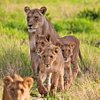
21. St Theresa Cathedral

22. Silozwane Cave Painting
23. Eastgate Centre
24. Naletale
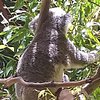
25. Birchenough Bridge
26. Holy Trinity Catholic Cathedral

27. Danamombe

28. Brennan Seward Art

29. Al Abbas Mosque

30. Bernard Mizeki Shrine
What travelers are saying.

- UNESCO World Heritage Sites In Zimbabwe
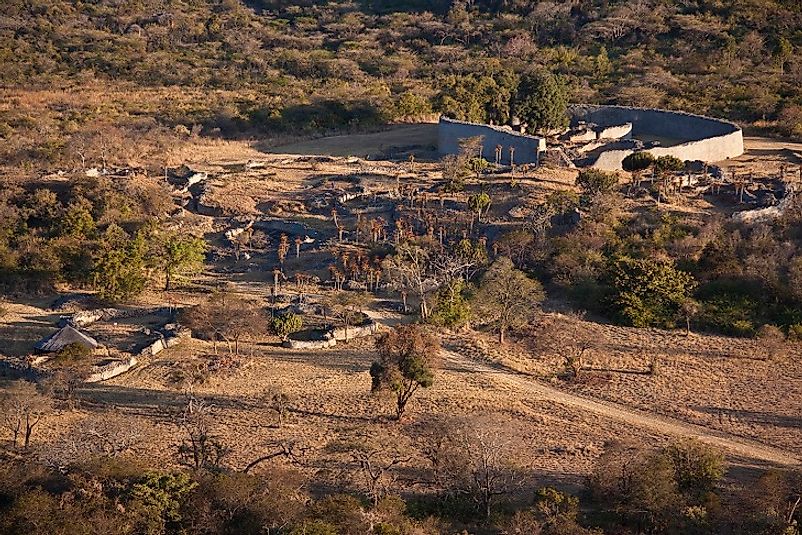
Zimbabwe is home to a number of landmarks with valuable cultural and historical importance. Several of these have been recognized by UNESCO as World Heritage Sites because of their uniqueness and importance to the collective interests of humanity.
Great Zimbabwe National Monument
"Zimbabwe" is a Shona word meaning "house of stone", and the imposing ruins of the Great Zimbabwe National Monument certainly live up to such a name. Once the royal home of the Queen of Sheba, at least according to legend, the large stone city flourished during the 11th through 15th Centuries. Built on the remains of a prehistoric settlement, Great Zimbabwe was a capital city and major trading center before it was abandoned for lack of food due to overpopulation and excessive deforestation. Notable artifacts found at the site have included beads and porcelain from China and Persia, Arabian coins, ancient soapstone figurines and a large granite cross. The area is still in use today as a local spiritual site.
Khami Ruins National Monument
Succulents and desert plants grow abundantly among the intricate stone walls of the Khami Ruins National Monument. The city of Khami was established after the fall of Great Zimbabwe and lasted until the 19th Century. It is one of the only Zimbabwe sites that was not destroyed by treasure hunters. Archaeological remains include Spanish and Chinese porcelain, German stoneware and Portuguese trading goods, as well as a monumental granite cross.
Although the area is in a relatively stable condition, natural factors such as vegetation encroachment and flooding must continue to be monitored. Because the area is still an active sacred site for the local population, tourism development must be regulated appropriately.
Sapi and Chewore Safari Areas
On the banks of the Zambezi river, enormous cliffs overhang the floodplains along a steep escarpment rising thousands of feet from the valley floor. Huge herds of elephant, buffalo, zebra, antelope and predators such as lion and hyena migrate here during the dry winter months. The river is also home to record numbers of hippopotamus and Nile crocodile, as well as more than 450 species of resident and migratory birds. While the endangered black rhino has since disappeared from the area, the property still protects important populations of threatened and near-threatened species including elephant, hippopotamus, lion, cheetah, leopard, hyena, and wild dog.
Natural barriers created by the Zambezi River and the escarpment have protected the property from damage and development. Controlled hunting is allowed on a limited basis. However, the area may one day be threatened due to development from the hydroelectric and oil industries.
Matobo Hills
Twenty one miles south of Bulawayo, a profusion of densely-packed granite landforms rise from the earth in a sea of hills, caves, and boulders. The rock faces are covered with prehistoric paintings of humans, animals and birds dating back at least 13,000 years, illustrating evolving artistic styles and socio-religious beliefs. Archaeological evidence indicates that the site has been occupied for at least 500,000 years. The Matobo Hills still have strong cultural and religious associations, particularly for the Mwari religion. Dating back to the Iron Age, Mwari is the most powerful oral tradition in Southern Africa. The site hosts a three-week-long ceremony each August, where more than a thousand pilgrims gather to dance and perform rituals among the rocks and terraces.
Mosi-oa-Tunya (Victoria Falls)
Victoria Falls is one of the most spectacular waterfalls in the world. A curtain of falling water over a mile wide, the Zambezi river plunges noisily through a series of spectacular basalt gorges, sending up iridescent plumes of mist, spray and rainbows that can be seen up to thirty miles away. The area is also a breeding ground for four species of endangered birds. A major tourist attraction for both Zimbabwe and Zambia, urban infrastructure and tourism facilities must be carefully managed in order to preserve the area's exceptional beauty.
More in Travel

13 Most Underrated Towns In New York To Take A Trip To

Tales in Transit: The Twists & Turns of World Travel

13 Most Underrated Towns In Massachusetts To Take A Trip To

9 Most Underrated Towns In Washington To Take A Trip To

Riding The Rails Across Europe: A Haphazard Adventure

An American's Guide for the Camino de Santiago

13 Most Underrated Towns In Upstate New York To Take A Trip To

Explore The Most Charming Spots To Visit Around Lake Constance
Top Historical Sites In Zimbabwe

Zimbabwe’s history is a captivating tapestry woven with threads of ancient civilizations, archaeological wonders, and vibrant oral traditions that resonate through time. Rooted in a deep connection to its past, Zimbabwe proudly preserves its heritage through remarkable historical sites. From the whispers of ages past to the echoes of monumental legacies, join us as we unveil seven of the most compelling historical sites that showcase Zimbabwe’s enduring cultural and historical richness. Did you know – Culture Trip now does bookable, small-group trips? Pick from authentic, immersive Epic Trips , compact and action-packed Mini Trips and sparkling, expansive Sailing Trips .
The great zimbabwe ruins.
The Great Zimbabwe Ruins are one of the best-known artifacts of African civilization formed in the centuries and millenia before the Industrial Revolution. Appealing to history buffs and thrill-seekers alike, these ruins are truly a wondrous spectacle to behold. Dating back to a great kingdom in the 11th century, these ruins are made entirely of hewn stone, and are held together with no mortar or other visible mechanisms at all. Instead the whole structure remains upright seemingly through nothing but the sheer force of gravity and balance, with rock assembled upon rock fascinatingly. To behold the magnificent remains of this once great civilization, head on over to the Zimbabwean southern city of Masvingo, where the ruins lie a short way outside the center.
The Matopos Hills
The Matopos Hills/ Matobo Hills are famous for their ancient rock paintings, generally attributed to ancient cave dwellers who lived in the land some 2000 years back. These paintings depict a civilization that left little in the way of written records, but some aspects of life in that era may be gleaned from the artwork itself. The Hills themselves have been enclosed in a stunning national park, a place which houses the remains of the great explorer Cecil Rhodes, too.
Watch out for: Wildlife nearby in Matobo National Park

Become a Culture Tripper!
Sign up to our newsletter to save up to 500$ on our unique trips..
See privacy policy .
Victoria Falls

The Smoke that thunders
One of the “Seven Wonders of the World”, the Victoria Falls form one of the most spectacular World Heritage Sites, a spectacle which is found in the heart of Zimbabwe. The falls are monumental to behold; they are about 1.7 kilometres wide and gush thousands upon thousands of liters of water into the gigantic chasm below every minute. The falls have garnered much attention over the centuries, and have been marveled at by a diverse range of figures including early Zimbabwean missionaries and ancient tribes who conducted worship rituals at the site, as well as leading modern figures such as David Livingstone.
Watch out for: A fantastic location for a selfie
Khami National Monument
Found near Bulawayo, Zimbabwe’s second largest city, the Khami ruins and National Monument are relics of a civilization in many ways similar to the one remembered at the Great Zimbabwe location. It features the stone walls enclosures of an ancient civilization and the cultural hallmarks of a great “mambo”, or king. The stone structures are terraced into multiple levels, albeit less well-preserved than those at the Masvingo-based Great Zimbabwe. However they remain unmissable, as they are made of complex and intricate stone-work, and their study has led to much progression of knowledge regarding the Stone-Age civilizations of old.
Watch out for: mysterious stone artifacts
The BaTonga Community Museum
According to historical archives, the BaTonga peoples arrived in Zimbabwe in about AD 300. The BaTonga Community Museum contains historical and educational information about the culture and life of the BaTonga people. The museum is located in Binga on the shores of Lake Kariba. The BaTonga tribe had a culture focused around fishing and growing crops, along with hunting and gathering. This traditional way of life was largely disrupted by the construction of the grand Lake Kariba, the nation’s largest lake, in 1956. The museum showcases the ways and life of this ancient group of people through the centuries.
Watch out for: the BaTonga smoking pipe
Chimanimani Mountains
The Chimanimani Mountains are noted for their huge volcanic rock formations and their picturesque peaks, carved from quartzite blocks. The nearby Chimanimani village was founded by Thomas Moodie in 1892. Alot of Zimbabwean folklore centers around the mysterious Chimanimani mountains and their forboding breadth and height. This area, with its ragged mountain ranges and dramatic landscapes, was used as a corridor during the Zimbabwe liberation struggle for transporting guerilla fighters in and out of the country. The Chimanimani National Park is ideal for exploring the mountain ranges and this historic area.
Watch out for: the Chimanimani caves
Danamombe Ruins

A complex of ruins dating back to the 17th or 18th Century, the Danamombe Ruins serve as a reminder of the ancient civilizations that used to inhabit Zimbabwe. In particular they showcase the village life that existed in the country immediately following the Khami civilization. Significantly, the architecture here involves the use of traditional stone walling combined with a more modern feature of mud-reinforced huts, a type of house which can still be seen in many Zimbabwean villages today.
Watch out for: Patterned stone decorations of the city wall

KEEN TO EXPLORE THE WORLD?
Connect with like-minded people on our premium trips curated by local insiders and with care for the world
Since you are here, we would like to share our vision for the future of travel - and the direction Culture Trip is moving in.
Culture Trip launched in 2011 with a simple yet passionate mission: to inspire people to go beyond their boundaries and experience what makes a place, its people and its culture special and meaningful — and this is still in our DNA today. We are proud that, for more than a decade, millions like you have trusted our award-winning recommendations by people who deeply understand what makes certain places and communities so special.
Increasingly we believe the world needs more meaningful, real-life connections between curious travellers keen to explore the world in a more responsible way. That is why we have intensively curated a collection of premium small-group trips as an invitation to meet and connect with new, like-minded people for once-in-a-lifetime experiences in three categories: Culture Trips, Rail Trips and Private Trips. Our Trips are suitable for both solo travelers, couples and friends who want to explore the world together.
Culture Trips are deeply immersive 5 to 16 days itineraries, that combine authentic local experiences, exciting activities and 4-5* accommodation to look forward to at the end of each day. Our Rail Trips are our most planet-friendly itineraries that invite you to take the scenic route, relax whilst getting under the skin of a destination. Our Private Trips are fully tailored itineraries, curated by our Travel Experts specifically for you, your friends or your family.
We know that many of you worry about the environmental impact of travel and are looking for ways of expanding horizons in ways that do minimal harm - and may even bring benefits. We are committed to go as far as possible in curating our trips with care for the planet. That is why all of our trips are flightless in destination, fully carbon offset - and we have ambitious plans to be net zero in the very near future.

See & Do
A sustainable guide to victoria falls, zimbabwe.

Zimbabwe Prepares for a Social Media-Led Election

5 Books You Have to Read Before Visiting Zimbabwe

Guides & Tips
When’s the best time of year to visit zimbabwe.

The Top Art Galleries in Zimbabwe

Food & Drink
A brief history of mopane worms, a famous delicacy from zimbabwe.

The Best Things to Do Outdoors in Zimbabwe

An Introduction to Zimbabwe's Shona People

These Are Zimbabwe's Most Dangerous Animals

How Managing Matabeleland Is About Finance as Much as Football

How To Navigate Transport In Zimbabwe

Health & Wellness
Zimbabwe has just legalized marijuana, here’s why, winter sale offers on our trips, incredible savings.

- Post ID: 483269
- Sponsored? No
- View Payload
Take advantage of the search to browse through the World Heritage Centre information.
Share on social media
Unesco social media, khami ruins national monument.
- Description
Khami, which developed after the capital of Great Zimbabwe had been abandoned in the mid-16th century, is of great archaeological interest. The discovery of objects from Europe and China shows that Khami was a major centre for trade over a long period of time.
Description is available under license CC-BY-SA IGO 3.0
Ruines de Khami
Khami, qui se développa après l'abandon de la capitale du Grand Zimbabwe au milieu du XVI e siècle, présente un grand intérêt archéologique. Les objets originaires d'Europe et de Chine qu'on y a découverts montrent que la ville fut de longue date un carrefour commercial important.
تتسم خامي التي نمت بعد هجر عاصمة زيمبابوي الكبيرة في منتصف القرن السادس عشر بأهمية أثرية جمة حيث تشير الأغراض المستقدمة من أوروبا والصين والتي تم اكتشافها ان المدينة شكلت لفترة طويلة ملتقى طرق تجاري هام.
source: UNESCO/CPE Description is available under license CC-BY-SA IGO 3.0
卡米曾经是大津巴布韦的首都,并一度得到繁荣发展;在16世纪中叶被遗弃。而今卡米一跃成为重要的考古胜地。从来自欧洲以及中国的发掘物中可以推断,卡米拥有悠久的贸易史。
Monumento nacional de las ruinas de Khami
La ciudad de Khami, que cobró un gran auge tras el abandono de la capital del Gran Zimbabwe a mediados del siglo XVI, presenta un gran interés arqueológico. El descubrimiento de objetos procedentes de Europa y China ha puesto de manifiesto que esta ciudad fue un importante centro de intercambios comerciales durante mucho tiempo.
source: NFUAJ
Nationaal monument Khami ruïnes
De Khami ruïnes liggen op een 1.300-meter hoge heuveltop, ten westen van de rivier de Khami, 22 kilometer vanaf de stad Bulawayo. Het gebied heeft een oppervlakte van ongeveer 108 hectare, verspreid over een afstand van ongeveer 2 kilometer. Khami is ontstaan nadat de hoofdstad van Groot-Zimbabwe was achtergelaten halverwege de 16e eeuw. De stad is van groot archeologisch belang vanwege de ontdekking van voorwerpen uit Europa en China. Hieruit blijkt dat Khami gedurende een lange periode een belangrijk handelscentrum is geweest. Verder tonen de architectuur en archeologie van de plek aan dat men uitzonderlijke kennis had van vroegere beschavingen.
Source: unesco.nl

Outstanding Universal Value
Brief synthesis
Khami Ruins National Monument is located to the west of the Khami River, 22 km from the City of Bulawayo. The property, located on a 1300 m hilltop downstream from a dam built during 1928-1929, covers an area of about 108 ha, spread over a distance of about 2 km from the Passage Ruin to the North Ruin.
The property was the capital of the Torwa dynasty, which arose from the collapse of the Great Zimbabwe Kingdom between 1450 -1650 and was abandoned during the Ndebele incursions of the 19th century. It is composed of a complex series of platforms of dry-stone walled structures, emulating a later development of Stone Age culture. The chief’s residence (Mambo) was located towards the north on the Hill Ruin site with its adjacent cultivation terraces. The population lived in daga huts of cobwork, surrounded by a series of granite walls. These structures display a high standard of workmanship, a great number of narrow passageways and perambulatory galleries and impressive chevron and chequered wall decorations. Khami conforms to Great Zimbabwe in a number of archaeological and architectural aspects but it possesses certain features particular to itself and its successors such as Danangombe and Zinjanja. Revetments or retaining walls found expression for the first time in the architectural history of the sub-region at Khami, and with it were elaborate decorations; it still has the longest decorated wall in the entire sub-region.
The architecture of the site and the archaeological artefacts provide evidence for an exceptional understanding of strong, united, early civilizations. They also offer information on the property’s complex socio-economic, religious and spiritual significance for the local communities and for the overall chronological development of Zimbabwe tradition; initiated in Mapungubwe (South Africa), extending to Great Zimbabwe, and through the emergence of later states. The archaeological remains are also a testament to long-distance historic trade links with the Portuguese, and the wider world, the diverse range of imported artefacts provide evidence of 15th and 17th century Spanish porcelain, Rhineland stoneware and Ming porcelain, many of which are on display in the Museum of Natural History in Bulawayo. There is also a monumental granite cross which illustrates the contact with missionaries at a traditionally revered and sacred spiritual site.
Khami is the second largest stone built monument in Zimbabwe. Its historical importance lies in its position at the watershed between the history of Great Zimbabwe and the later Zimbabwe period. It is one of the few Zimbabwe sites that were not destroyed by treasure hunters and its undisturbed stratigraphy is scientifically important in providing a much clearer insight into the history of the country. The climate supports a natural vegetation of open woodland, dominated by Combretum and Terminalia trees. Being close to the Kalahari Desert , the area is also vulnerable to droughts, and rainfall tends to vary considerably. The property has suffered some degradation due to variations in temperature, ground water, tourism, encroaching vegetation and applied preservation techniques.
Criterion (iii): The property is a unique and exceptional testimony to a civilization which has disappeared.The architecture and archaeological artefacts of the site provide important scientific and historical evidence critical for the understanding of the full chronological development of the Zimbabwe tradition from the Stone Age to the Iron Age era.
Criterion (iv): The property is an outstanding example of a type of building and architectural ensemble which illustrates a significant stage in history. It has yielded an exceptional long evidence related to human evolution and human environment dynamics, collectively extending from 100 000 years ago to date and demonstrates testimonial to the long distance trade with the outer world.
Over its area of 108 ha, the property is relatively intact and appropriately maintains the diverse cultural and traditional processes, functions and interactions of the local communities. Dispersed over 2 km, extending from the Passage Ruin to the North Ruin, an appropriate degree of indigenous cultural processes remain for the property to be sufficiently well protected from environmental pressures and alternative land uses. The boundaries are also sufficient in size to fully capture the natural and aesthetic values. In addition to the established boundaries, the property has a buffer zone to retain the natural characteristics of the area. However, some negative effects on the relationship between the site and its setting are being caused by the expansion of the suburbs of Bulawayo (10 km distant), and the polluting discharge from the city’s effluent into the Khami River. The buffer zone needs to be carefully monitored so that this relationship does not erode any further.
The ruins have been subjected to some natural erosion, veld fires, burrowing animals, encroaching vegetation, and the effects of tourism. Rain induced ground creepage down the site slopes has increased the incidence of wall cracks, bulges and collapses, adding to the deterioration of the structures, ornamental features and architectural coherence. Conservation and maintenance actions are needed to maintain the existing integrity of the historic fabric.
Authenticity
The authenticity of the historic evidence is unquestionable. The ruins generally follow the pattern and style of the Great Zimbabwe ruins but are considered to be a later development of that culture. It remains an undisturbed, non-functional, archaeological site whilst also still being used by contemporary communities for spiritual purposes. The dry-stone building traditions enhance the sacredness of the area, where human presence is traceable over 100,000 years. Acknowledging huts made of cobwork (daga) enhanced by decorative friezes, and surrounded by a series of granite walls, and with a great number of passage ways and uncovered perambulatory galleries, the current population maintains the historic traditions of the site.
Khami has retained its authenticity largely in part due to the minimal interventions that have been carried out. All restorations have used traditional methods and no new materials have been added. Restorations nowadays are by anastylosis which ensures that no new materials are introduced to the fabric of the site and promotes use of traditional methods of construction.
Protection and management requirements
The archaeological zone was protected as a ‘Royal Reserve’ until the death of King Lobengule in 1893. In recognition of the historic, cultural and architectural significance of the site, it was scheduled as a National Monument in 1937. Currently the National Museums and Monuments Act Cap. 25:11 legally protect the property and its resources.
Khami Ruins National Monument is managed by National Museums and Monuments as overall responsible Agency. At local level Khami falls under the Western Region administrative unit and a project manager, who liaises with the Regional Director and Executive Director on administrative and policy issues and is responsible for conservation and development.
The government of Zimbabwe partly funds conservation work and also makes available funds for capital improvements through its Public Sector Investment Programme (PSIP). National Museums and Monuments provide some funds raised through entrance fees, filming fees, etc. for conservation. International cooperation has existed for financial support, including assistance for the development of a conservation and site management plan.
A management plan, which derives from a master plan for resource conservation and development, exists and is currently being implemented in accordance with National Museums and Monuments Act. However, there are challenges for implementation because the community was not adequately involved in the nomination of the property and, therefore, do not fully understand the implications of its status. The management plan needs to be periodically updated to respond to new conditions as they arise.
Although the well-defined and buffered boundary is not physically marked, a system of regular monitoring is in place but there are challenges in enforcing restrictions to regulate further developments, particularly from tourism development, and to maintain the conditions of integrity. Larger cooperation is needed to ensure the adequate management of the buffer zone and the conservation of its characteristics.
A regular and well resourced conservation programme is required to maintain stone walls and landforms and to address factors that contribute to deterioration, such as water infiltration and pollution. An appropriate visitor use strategy, including the development of facilities, is needed to regulate visitation at the site and to adequately present and interpret its significance.
State of Conservation (SOC)

- Australia & Asia Pacific
- Central America & Caribbean
- Middle East
- North America
- South America
- Sustainable Tourism
- Inspiration
- Travel Tips
UNESCO World Heritage Sites in Zimbabwe
Zimbabwe is home to 5 UNESCO World Heritage Sites. Of those, there are 3 cultural sites, 2 natural sites and 0 mixed sites. Zimbabwe shares 1 of those sites with other countries.
The World Heritage Sites in Zimbabwe are:
Mana pools national park, sapi and chewore safari areas, great zimbabwe national monument, khami ruins national monument, mosi-oa-tunya / victoria falls.
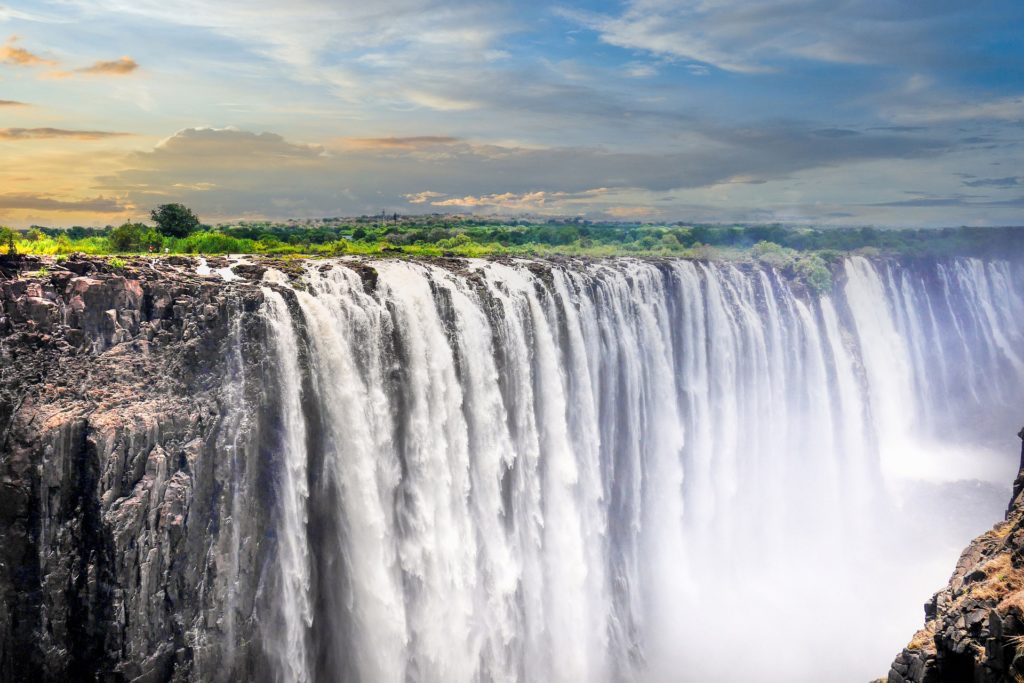
Matobo Hills
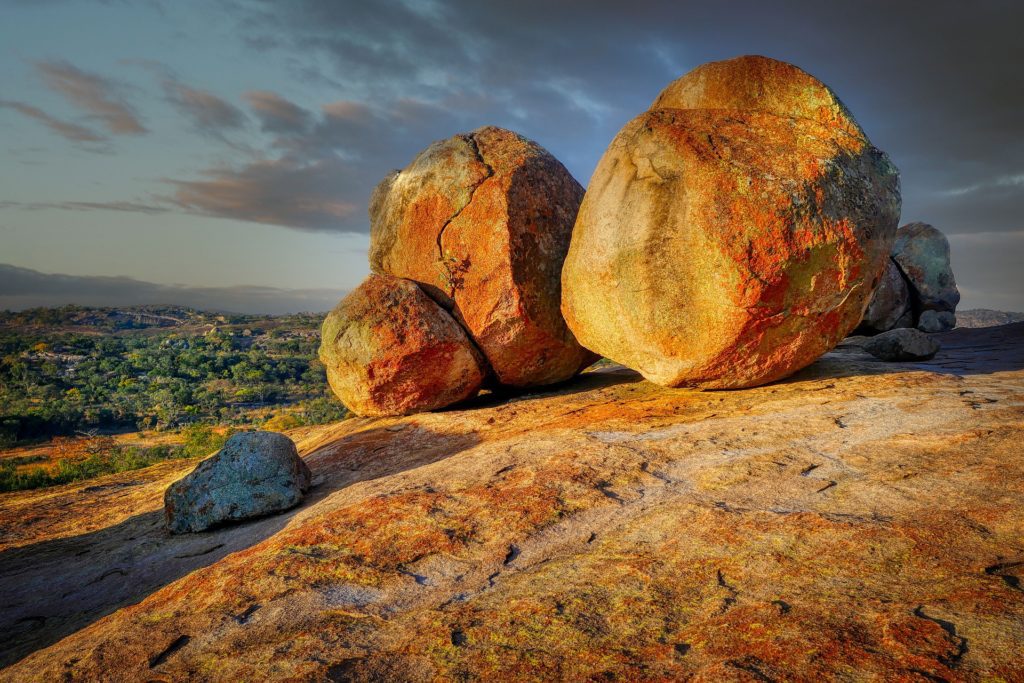
Find it on the map
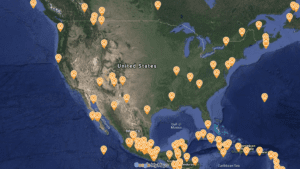
Top Stories
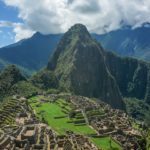
Subscribe to our mailing list
Advertisement.
Last updated: June 04, 2017
McCadams Creative, LLC (“us”, “we”, or “our”) operates the https://www.globalheritagetravel.com website (the “Service”).
This page informs you of our policies regarding the collection, use and disclosure of Personal Information when you use our Service.
We will not use or share your information with anyone except as described in this Privacy Policy.
We use your Personal Information for providing and improving the Service. By using the Service, you agree to the collection and use of information in accordance with this policy.
Information Collection And Use
While using our Service, we may ask you to provide us with certain personally identifiable information that can be used to contact or identify you. Personally identifiable information may include, but is not limited to, your email address, name (“Personal Information”).
We collect this information for the purpose of providing the Service, identifying and communicating with you, responding to your requests/inquiries, servicing your purchase orders, and improving our services.
We may also collect information that your browser sends whenever you visit our Service (“Log Data”). This Log Data may include information such as your computer’s Internet Protocol (“IP”) address, browser type, browser version, the pages of our Service that you visit, the time and date of your visit, the time spent on those pages and other statistics.
In addition, we may use third party services such as Google Analytics that collect, monitor and analyze this type of information in order to increase our Service’s functionality. These third party service providers have their own privacy policies addressing how they use such information.
Cookies are files with a small amount of data, which may include an anonymous unique identifier. Cookies are sent to your browser from a web site and transferred to your device. We use cookies to collect information in order to improve our services for you.
You can instruct your browser to refuse all cookies or to indicate when a cookie is being sent. The Help feature on most browsers provide information on how to accept cookies, disable cookies or to notify you when receiving a new cookie.
If you do not accept cookies, you may not be able to use some features of our Service and we recommend that you leave them turned on.
Behavioral Remarketing
McCadams Creative, LLC uses remarketing services to advertise on third party web sites to you after you visited our Service. We, and our third party vendors, use cookies to inform, optimize and serve ads based on your past visits to our Service.
- GoogleGoogle AdWords remarketing service is provided by Google Inc.You can opt-out of Google Analytics for Display Advertising and customize the Google Display Network ads by visiting the Google Ads Settings page: http://www.google.com/settings/ads Google also recommends installing the Google Analytics Opt-out Browser Add-on – https://tools.google.com/dlpage/gaoptout – for your web browser. Google Analytics Opt-out Browser Add-on provides visitors with the ability to prevent their data from being collected and used by Google Analytics.For more information on the privacy practices of Google, please visit the Google Privacy & Terms web page: http://www.google.com/intl/en/policies/privacy/
For more information on the privacy practices of Facebook, please visit Facebook’s Data Policy: https://www.facebook.com/privacy/explanation
Service Providers
We may employ third party companies and individuals to facilitate our Service, to provide the Service on our behalf, to perform Service-related services and/or to assist us in analyzing how our Service is used.
These third parties have access to your Personal Information only to perform specific tasks on our behalf and are obligated not to disclose or use your information for any other purpose.
Communications
We may use your Personal Information to contact you with newsletters, marketing or promotional materials and other information that may be of interest to you. You may opt out of receiving any, or all, of these communications from us by following the unsubscribe link or instructions provided in any email we send.
Compliance With Laws
We will disclose your Personal Information where required to do so by law or subpoena or if we believe that such action is necessary to comply with the law and the reasonable requests of law enforcement or to protect the security or integrity of our Service.
The security of your Personal Information is important to us, and we strive to implement and maintain reasonable, commercially acceptable security procedures and practices appropriate to the nature of the information we store, in order to protect it from unauthorized access, destruction, use, modification, or disclosure.
However, please be aware that no method of transmission over the internet, or method of electronic storage is 100% secure and we are unable to guarantee the absolute security of the Personal Information we have collected from you.
International Transfer
Your information, including Personal Information, may be transferred to — and maintained on — computers located outside of your state, province, country or other governmental jurisdiction where the data protection laws may differ than those from your jurisdiction.
If you are located outside United States and choose to provide information to us, please note that we transfer the information, including Personal Information, to United States and process it there.
Your consent to this Privacy Policy followed by your submission of such information represents your agreement to that transfer.
Links To Other Sites
Our Service may contain links to other sites that are not operated by us. If you click on a third party link, you will be directed to that third party’s site. We strongly advise you to review the Privacy Policy of every site you visit.
We have no control over, and assume no responsibility for the content, privacy policies or practices of any third party sites or services.
Children’s Privacy
Only persons age 18 or older have permission to access our Service. Our Service does not address anyone under the age of 13 (“Children”).
We do not knowingly collect personally identifiable information from children under 13. If you are a parent or guardian and you learn that your Children have provided us with Personal Information, please contact us. If we become aware that we have collected Personal Information from a children under age 13 without verification of parental consent, we take steps to remove that information from our servers.
Changes To This Privacy Policy
This Privacy Policy is effective as of June 04, 2017 and will remain in effect except with respect to any changes in its provisions in the future, which will be in effect immediately after being posted on this page.
We reserve the right to update or change our Privacy Policy at any time and you should check this Privacy Policy periodically. Your continued use of the Service after we post any modifications to the Privacy Policy on this page will constitute your acknowledgment of the modifications and your consent to abide and be bound by the modified Privacy Policy.
If we make any material changes to this Privacy Policy, we will notify you either through the email address you have provided us, or by placing a prominent notice on our website.
If you have any questions about this Privacy Policy, please contact us.

- what is NMMZ?
- Organisational Structure
- NMMZ Core Objectives
- Services & Products
- Introduction
- Nothern Region,Harare
- Eastern Region, Mutare
- Southern Region, Masvingo
- Western Region, Bulawayo
- Central Region, Gweru
- National Monuments of Zimbabwe
- Site Museums
- Community Museums
World Heritage Sites
- National Monuments Mgt Programme
- Heritage And Tourism
- Liberation Heritage
- Historic Buildings
- Liberation Heroes/Heroines
- Ethno- Archaelogical Assessments
- Geology And Paleontology
- Ornithology
- Herpetology
- Photo gallery
- Heritage Educational Outreach

You are here
Error message, victoria falls/mosi-oa-tunya.
The smoke that thunders is the most spectacular waterfall in the world. It is the largest curtain of falling water in the world, it is 1 708m wide and with up to 500 million
liters per minute descending at 61m (Devil’s Cataract), 83m (main falls), 99m(Rainbow falls), 98m(Eastern Cataract).
Victoria Falls/Mosi-oa-Tunya Year of Inscription: 1989 Natural property inscribed under Criteria: (vii), (viii)
- Great Zimbabwe National Monument
Great Zimbabwe is a unique testament to the Bantu civilization of the Shona, which existed between the eleventh and fifteenth centuries AD. It is the largest and most impressive of the more than 300 Zimbabwe type dry stone walled structures scattered all over Zimbabwe and Southern Africa.
Great Zimbabwe National Monument Year of Inscription: 1986 Cultural property inscribed under Criteria: (i), (iii), (iv)
- Matobo Hills
The property is a cultural landscape with both natural and cultural attributes of the exceptional aesthetic, scientific and educational value. Its diverse cultural value span a
period of more than 500 000 years, with continual settlement over at least 100 000 years from the early iron age to the present. Matobo Hills Year of Inscription: 2003 Mixed property inscribed under Criteria: (iii), (v), (vi)
- Khami Ruins national Monument
It is located 15km west of Bulawayo. The architecture of the site and the archaeological artefacts provide evidence for an exceptional understanding of a strong early civilization. They also offer information on the property’s complex socio-economic, religious and spiritual significance for the local communities and for the chronological developments of Zimbabwe civilization initiated in mapungubwe (South Africa) extending to Great Zimbabwe and through the emergence of a complex state system.
Khami Ruins national Monument Year of Inscription: 1986 Cultural property inscribed under Criteria: (iii), (iv)
Regional Museums
- Northern Region
- Eastern Region
- Southern Region
- Western Region
- Central Region
National Museums & Monuments
- Heritage and Tourism
- Victoria Falls/Mosi-oa-Tunya
107 Rotten Row Penrose Hill Building Harare PO Box CY 1485 Causeway +263 242 774208/752876 Email: [email protected]

- Deprecated function : Required parameter $module_name follows optional parameter $state in require_once() (line 341 of /home/nmmzco/public_html/includes/module.inc ).
- Deprecated function : Required parameter $component follows optional parameter $state in require_once() (line 341 of /home/nmmzco/public_html/includes/module.inc ).
- Warning : Cannot modify header information - headers already sent by (output started at /home/nmmzco/public_html/includes/common.inc:2807) in drupal_send_headers() (line 1501 of /home/nmmzco/public_html/includes/bootstrap.inc ).
- Error : Call to undefined function create_function() in features_remove_recursion() (line 1093 of /home/nmmzco/public_html/sites/all/modules/features/features.export.inc ).

Search form
Great zimbabwe, a unesco world heritage cultural site.
- A UNESCO World Heritage Site since 1986 and one of Zimbabwe's main tourist attractions.
- The stone structures at Great Zimbabwe are the largest in sub-Saharan Africa.
- Centrally located, easy access on good roads and convenient to for overnight or longer stays.
- A large number of attractive and inspiring views of the ruins and set in a scenic location.
- Open throughout the year.
From Masvingo take the A4 towards Beit Bridge. Directions are from the railway line, immediately before the Masvingo / Great Zimbabwe Publicity Association. 1.42 KM proceed directly over the road junction, 4.31 KM turn left at signpost for Great Zimbabwe, 27.30 KM turn right at National Monuments sign for Great Zimbabwe, 28.2 KM reach entrance.
GPS reference: 20⁰16′08.84″S 30⁰55′42.70″E
Great Zimbabwe is undoubtedly sub-Saharan Africa’s largest and most imposing early dry-stone monument and over the years it has attracted much controversy over its purpose and the origin of its builders. The theories pre-1930 tended to favour an ancient and foreign origin; but as more and more scientific archaeology has taken place it has become much clearer that its builders were local and African in origin.
Unfortunately early excavations were completely unscientific as the ruins became associated with gold finds and much early exploration at Zimbabwe was done by adventurers simply fossicking for gold and “treasure.” Consequently, the stratification of the Great Zimbabwe site, and many others, was completely disturbed and many artefacts of great archaeological value, but with little intrinsic value, such a ceramics and pottery, weapons, ornaments and household items were simply discarded by these treasure hunters. Early well-meaning conservators rebuilt the walls which had largely collapsed, but paid little attention to the underlying deposits; consequently in 1958 the Historical Monuments Commission prohibited all further excavations for the next twenty-five years, although much damage had already been done.
Another problem, referred to by Peter Garlake in Great Zimbabwe regarding the origins of Great Zimbabwe, which muddied the waters still further, was that many of the early archaeologists has little experience of working in Africa and took little account of the wealth of local historical, traditional and anthropological data available locally.
Background and Excavations
Portuguese traders heard about the remains of an ancient city in the early sixteenth Century and records survive of interviews and notes made by them, linking Great Zimbabwe to gold production and the long-distance trade. Antonio Fernandes, the first European explorer in Zimbabwe, travelled too far north to have encountered Great Zimbabwe, although he probably heard accounts and rumours of it.
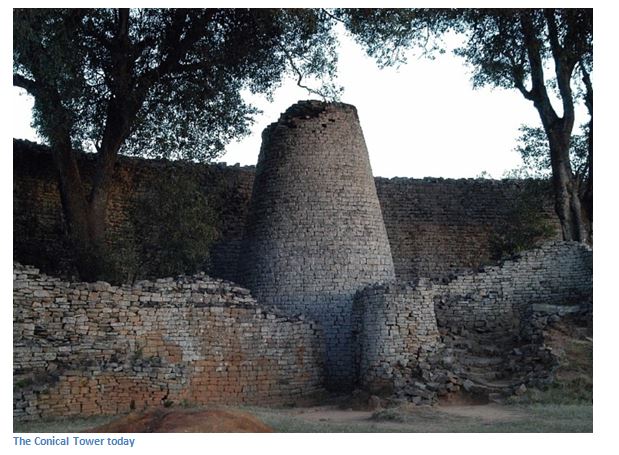
The earliest known written mention of Great Zimbabwe is by the Portuguese Vicente Pegado in 1531 who wrote: “Among the gold mines of the inland plains between the Limpopo and Zambezi rivers there is a fortress built of stones of marvellous size, and there appears to be no mortar joining them…. This edifice is almost surrounded by hills, upon which are others resembling it in the fashioning of stone and the absence of mortar, and one of them is a tower more than 12 fathoms (22 metres) high. The natives of the country call these edifices Symbaoe, which according to their language signifies court.”
Much later Adam Render, a hunter, trader and prospector, in 1867 was on a hunting expedition from his home in the Soutspanberg across the Limpopo River in South Africa and was the first European to see Great Zimbabwe. Render soon after deserted his wife and children in 1868 and moved north of the Limpopo and lived about 20 kilometres south-east of Great Zimbabwe with the daughter of a local chief for the rest of his life. In 1871, the German explorer and geographer Karl Mauch, who had heard rumours of Great Zimbabwe, came to the area and stayed with Render for nine months and together they visited the ruins several times. Mauch sent descriptions of the site to colleagues and German newspapers, so initially many believed it was he and not Render, who found Great Zimbabwe.
In a letter written in September 1871 to the Rev. Mr. Gruetzner, Mauch describes Zimbabwe in these terms: “The western side of this mountain is covered from top to bottom by the ruins. As they are for the most part fallen in and covered with rubbish, it is at present impossible to determine the purpose the buildings were intended to serve; the most probable supposition is that it was a fortress impregnable in those times, with the many passages— now, however, walled up…all the walls, without exception, are built without mortar, of hewn granite, more or less about the size of our bricks…best preserved of all is the outer wall of an erection of rounded form, situated in the plain, and about 150 yards in diameter. It is at a distance of about 600 yards from the mountain, and was probably connected with it by means of great outworks, as appears to be indicated by the mounds of rubbish remaining...Inside, everything excepting a tower nearly 30 feet in height, and in perfect preservation, is fallen to ruin, but this, at least, can be made out: that the narrow passages are disposed in the form of a labyrinth.”
Karl Mauch began the speculation about a possible Biblical link with King Solomon and the Queen of Sheba, an explanation which had been suggested by earlier writers such as the Portuguese Dominican Missionary João dos Santos. Mauch claimed a wooden lintel at the site must be Lebanese cedar, brought by Phoenicians and promoted the legend that Great Zimbabwe was built to replicate King Solomon’s temple in Jerusalem.

Theodore Bent, a rich English traveller and antiquarian who had travelled very widely in Arabia, Greece and Asia Minor, with his wife worked at Great Zimbabwe in 1891 with a surveyor R.M.W. Swan. He stated in the first edition of his book The Ruined Cities of Mashonaland (1892) that the ruins had been built by either the phoenicians, or the Arabs, as builders in ancient times. By the third edition of his book in 1902 he was more specific, saying the builders were "a Semitic race and of Arabian origin" of "strongly commercial" traders living within a client African city, but he did not link them positively with the Queen of Sheba.
However, other contemporary authors such as Hall and Neal had every reason to play down the fact that many of the everyday domestic objects found in the ruins were still in use by contemporary Shona, as indicted by the title of their book, The Ancient Ruins of Zimbabwe. The legend of King Solomon's Mines and the Queen of Sheba grew steadily from this academic source, although many writers had already pointed to modern day Zimbabwe as the only possible source in the ancient world of the large quantities of gold required for the First Temple in Jerusalem whose construction is credited to King Solomon.
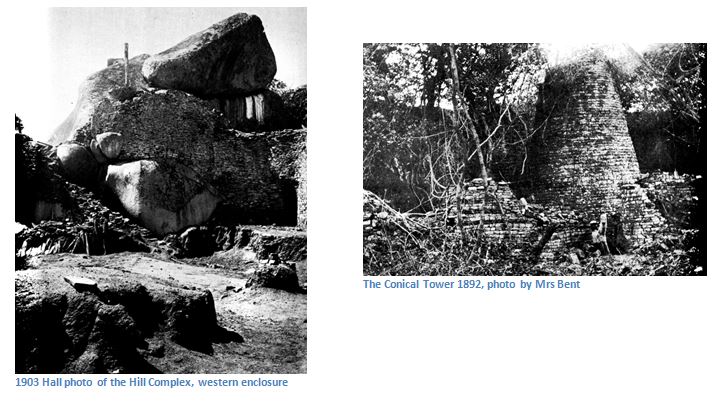
In 1905 Archaeologist David Randall-Maclver in Medieval Rhodesia claimed the dwellings were “unquestionably African in every detail” and there was a storm of protest from those who had based their belief in a more ancient origin. Amongst the greatest barriers to the truth at the time were the following:
- Raiders and amateur archaeologists removed and damaged important artefacts which added an extra barrier to archaeological research, especially after Bent found gold beads and crucibles bearing traces of gold.
- The appointment of R.N. Hall as first Curator of Great Zimbabwe when in two years of continuous and indiscriminate digging, sometimes twelve feet deep, he destroyed much of the site stratified archaeological deposits. Contemporary archaeologists described his “reckless blundering” as “indescribable” and his “field work…worse than anything I have ever seen.”
- The Mfecane with its successive waves of invaders in the 1830’s completely muddled the collective memory of the local Shona living in the area. Early travellers to the site constantly record that local Shona had no knowledge of the early builders.
Early visitors to Zimbabwe comment on the almost impenetrable jungle that engulfed the ruins, now completely cleared away, so that the shape and form of Great Zimbabwe may be seen clearly. About 1912, it became necessary to take steps to prevent further disintegration of the buildings; the work of reconstruction was carried on for many years by Mr St C. A. Wallace, Curator of Great Zimbabwe.
In 1929 Gertrude Caton-Thompson was invited “to undertake a further examination of the ruins at Zimbabwe or any monument or monuments of the same kind in Rhodesia, which seems likely to reveal the character, date and source of the culture of the builders.” Her first test pits on the Hill Complex uncovered domestic pottery and ironwork. Further test trenches in the Great Enclosure and Valley Complex revealed more domestic pottery and ironwork, imported items and a gold bracelet. Her excavation work found foreign imported South Indian and Malayan glass beads of the eighth and ninth centuries, which were found below the original floors. On the original floor level of the buildings were found Persian porcelain of the thirteenth century, Chinese porcelain of the thirteenth, fourteenth and fifteenth centuries, and Arab glass, plain, enamelled and engraved, of the thirteenth and fourteenth centuries. Local African made items were found both below and above the original floors.
She thus confirmed Dr Randall-MacIver's argument that the stone buildings of Zimbabwe were the work of Africans. In 1958, Robinson excavated on the western enclosure of the Hill Complex finding undisturbed deposits which revealed daga hut bases, glass beads and potsherds reaching the very lowest deposits which revealed a layer of pole-impressed daga hut bases, thus confirming all of Caton-Thompson’s conclusions
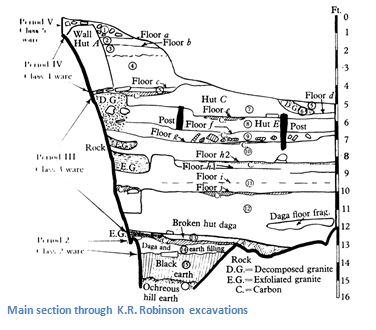
In 1971 Roger Summers wrote Ancient Ruins and Vanished Civilizations of Southern Africa and in 1973, Zimbabwe’s most eminent and locally born archaeologist Peter Garlake published Great Zimbabwe. Both authors reviewed all the evidence and agreed that the builders of Great Zimbabwe were a pastoral people who probably came from Mapungubwe in the Limpopo River valley. Major Construction started around 1100 and continued until 1450 AD. At the high point of Great Zimbabwe’s existence, it is said that more than ten thousand people lived here in mud and thatch huts in and around the massive stone walls. They raised cattle, mined for gold and copper, hunted elephants for ivory and traded with Swahili merchants on the East African coast, using the Save River route, as is evidenced by the artefacts of Asian and Arab origin that were discovered within the site.
A brief summary of the history as revealed by the Archaeological record
Evidence that Early Iron Age communities (400 to 900 AD) lived at Great Zimbabwe are found in the remains located in the lowest levels; ceramics, pottery figurines and pole-impressed daga from their hut remains.
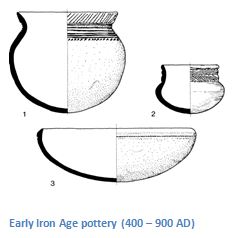
From 1000 AD, with the advent of cattle, Great Zimbabwe developed from a few scattered pole and dhaka huts amongst the granite boulders of the Hill Complex into an increasingly large village with a Ruler who had power over the community and who commanded a skilled labour force capable of building the granite walls. The introduction of cattle and the development of trade around Great Zimbabwe enabled wealth to be accumulated and with it came a concentration of power. Although this development also took place elsewhere in Zimbabwe, Great Zimbabwe very probably also developed:
- As a major religious centre, indicated by the conical tower, monoliths, altars, soapstone birds and figurines.
- As a major trading centre from its central location. It lay on the edge of the major gold-producing areas of the Midlands and Matabeland and in a direct line with the East African coast through the Save River valley.
Between 1200 and 1300 AD a rapid expansion of wealth takes place and the focus of building moves into the Valley Complex and Great Enclosure. Great Zimbabwe appears to establish a virtual monopoly within Zimbabwe of this new found prosperity in the form of imports of ceramics, glass objects and beads with skilled craftsmen on site producing gold, copper and bronze ornaments and weaving and spinning.
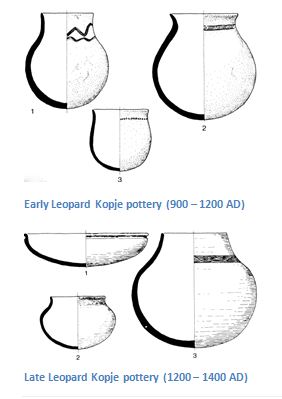
The capital was abandoned in 1450, apparently due to overpopulation and deforestation; the kingdom split and moved west to establish the Torwa State around Khame and North to establish the Mutapa state.
All the radiocarbon dates are in support of occupation dates for Great Zimbabwe between 1100 and 1450, with the bulk of the dates in the latter period. The people living here spoke a Shona language and are descended from what is called the Gokomere culture and probably related to the Mapungubwe culture from the Limpopo River valley.
Great Zimbabwe site
Spread over 720 hectares, it is an impressive array of dry stone structure made of hand carved granite blocks featuring chevron, herringbone and other intricate patterns. Most traces of the mud and thatch huts are gone, apart from the thick dhaka floors. The structures divide into three groups: -
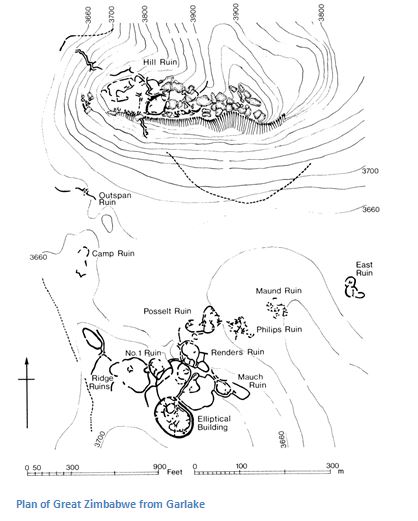
The Hill (or Acropolis) Complex , a series of stone walled enclosures set among boulders at the top of an eighty metre high hill. Early architecture of the Hill Complex differs dramatically from later developments, showing progress of building style and technique and continual human settlement from 1000 to 1400 AD. Separate walled enclosures are accessed by narrow, partly covered passageways. The western enclosure was probably the residence of successive Rulers, their closest family and advisers and the eastern enclosure where six upright steatite posts topped with birds were found, probably served a ritual purpose.
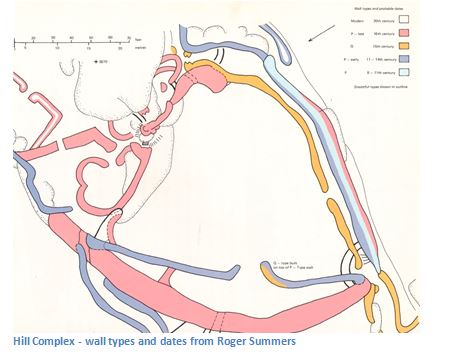
The Great Enclosure - a massive wall in the form of an ellipsis, 255 metres in circumference, ten metres high and five metres wide in parts which surrounds the Conical Tower. The Tower is eleven metres tall and absolutely solid, its function is unknown, but some believe it to be a symbol of a granary. The walls are built of granite blocks, laid in regular courses and contain the remains of dhaka hut foundations, divided into separate living quarters by dividing walls. Here the wives of the Ruler resided, along with his counsellors and prestige items including fragments of soapstone bowls, porcelain, Arab glass and gold were found here.
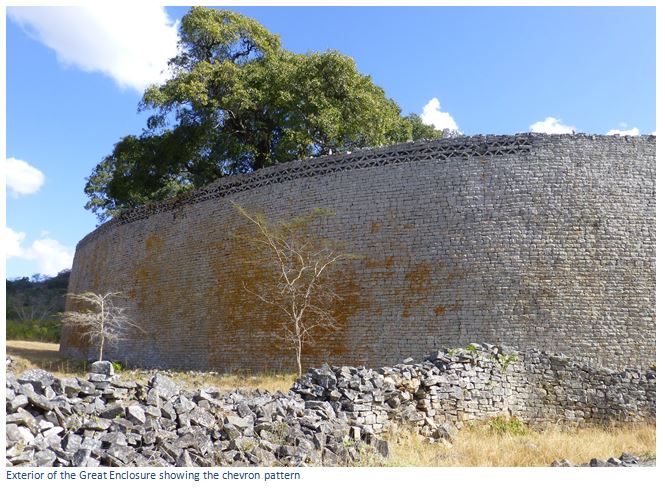
The Valley Complex is where the Zimbabwe Bird was found by Harry Posselt, the only soapstone bird discovered outside the Hill Complex and which may have been a royal totem and has been adopted as Zimbabwe's emblem and is now on display at the Site Museum. The ordinary people rather than the elite lived in this area of Great Zimbabwe. They comprise the numbered ruins one to three, the Maund, Phillips, Posselt, Renders and Mauch Ruins. Some were much robbed for stone and subject to the diggings of Hall and Sir John Willoughby; the Maund Ruins were excavated by Caton-Thompson and much knowledge gleaned on building techniques. An excavation by Elizabeth Goodall in 1943 revealed a great quantity of glass and gold beads, possibly the stock in trade of a Swahili merchant. Roger Summers states these Valley Ruins have not been as thoroughly restored as the Hill Complex and Great Enclosure, thus revealing more about building techniques as a result of this apparent neglect.
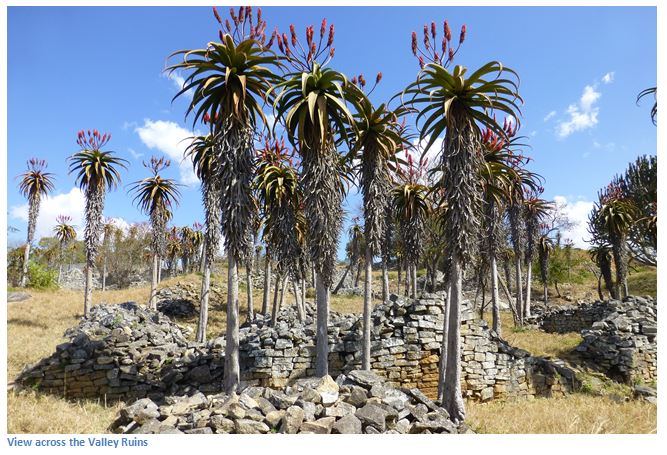
The Great Zimbabwe Site Museum on site displays some of the artefacts unearthed by archaeologists including the soapstone Zimbabwe birds which serve as the national emblem of Zimbabwe, although the poor lighting and very intrusive security presence somewhat lessens their impact.
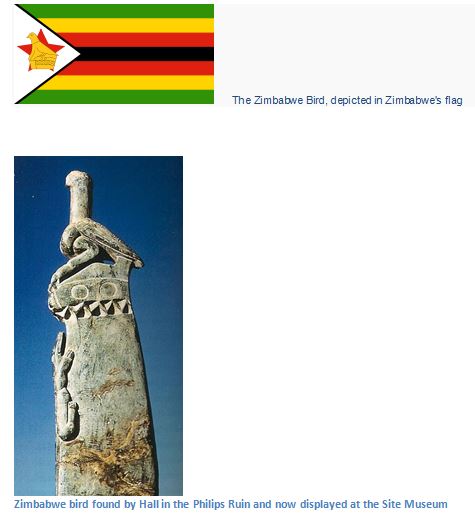
Acknowledgements
K. Mauch. Edited and translated by F.O. Bernhard. African explorer. Struil 1971.
J.T. Bent. The Ruined Cities of Mashonaland. London 1893.
D. Randall-Maclver. Medieval Rhodesia. London 1906.
G. Caton-Thompson. The Zimbabwe Culture. Oxford 1931.
R. Summers. Ancient Ruins and Vanished Civilizations of Southern Africa. Cape Town 1971.
P.S. Garlake. Great Zimbabwe. Thames and Hudson 1973.
Copyright © 2024,
Site by 3 Degrees

No results found
Select Category first
{[{item.label}]}
- {[{data.title}]}
Events in Zimbabwe
Filter Events by Sub-Category
- This Weekend
- August 2024
- September 2024
- October 2024
Please select a Date first.

3 Must-Visit World Heritage Sites in Zimbabwe
Book top experiences and tours in zimbabwe:, from kasane: victoria falls day trip (zimbabwe side), chobe day trip from victoria falls, zimbabwe, victoria falls: dinner cruise on the zambezi river, victoria falls: guided walking tour.
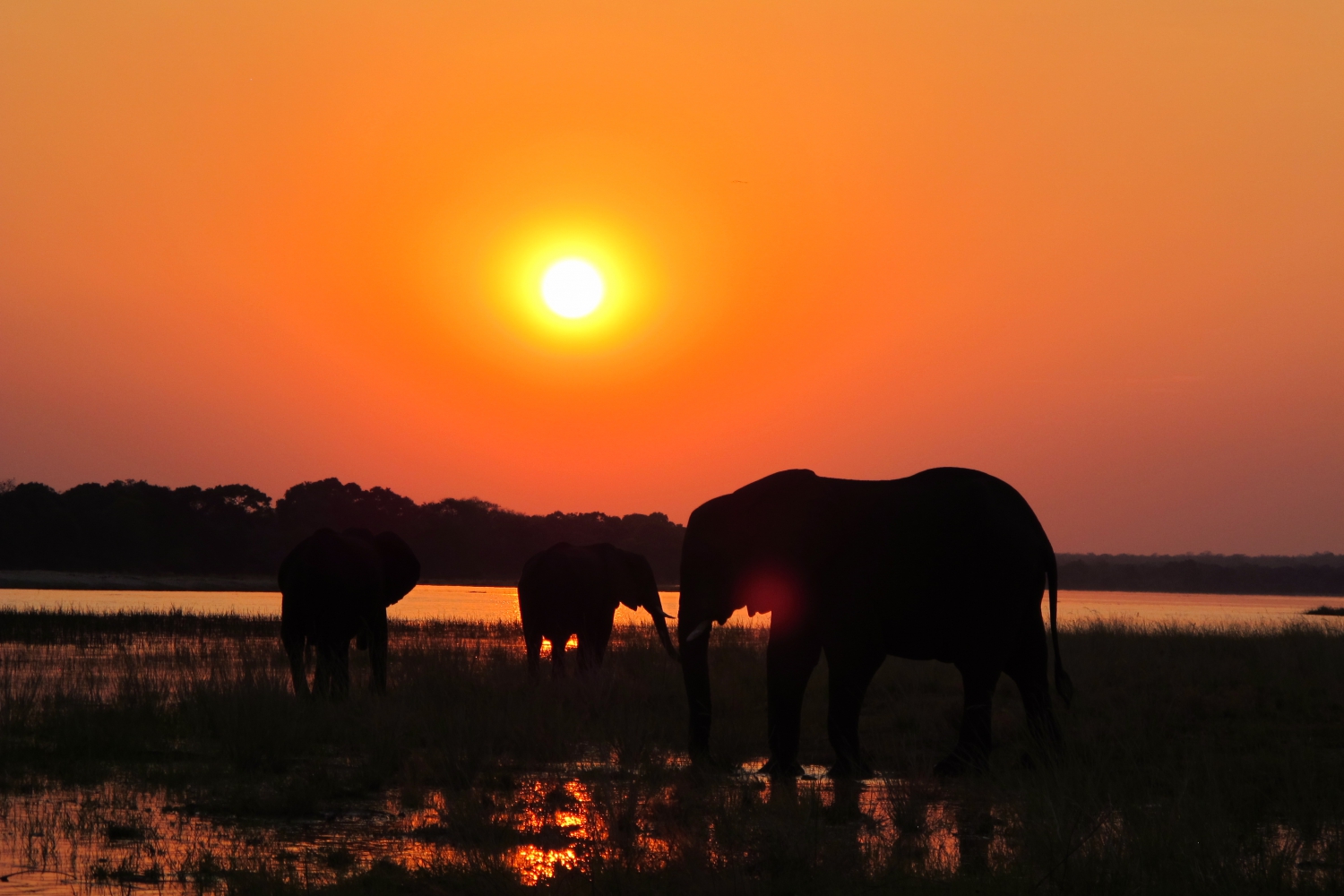
Create New Guide
Mini guides.
Login to create your guides for Zimbabwe.
Add to My Guide
- Add to New Guide
Recommended Experiences in Zimbabwe
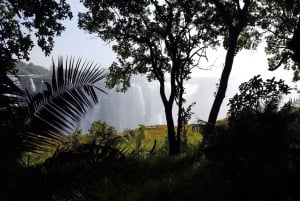
Nothing is quite like the heart-pounding sensation of actually standing on the edge of Victoria Falls, under the guidance of a professional whose knowledge about the falls is very vast and extensive.
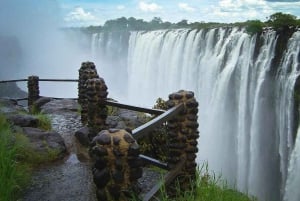
Discover one of the Seven Natural Wonders of the World, Victoria Falls, on a day trip from Kasane. Appreciate why locals call the falls "The Smoke That Thunders" as you visit different viewpoints. Explore local markets and the Victoria Falls Rainforest.

On this full-day tour you’ll go on a boat trip on the Chobe River and a game drive in Chobe National Park. The park is well known for its elephants and variety of animal species.
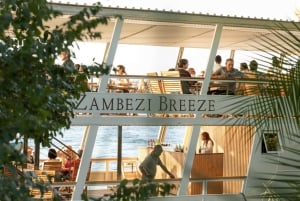
Embark on the Zambezi River with a dinner cruise and take in the glorious sunset color palette, surrounded by a wildlife paradise. Savor a unique 4-course meal on board as you admire the beauty of the setting sun.
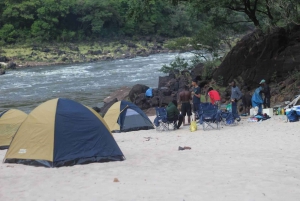
Zambezi River: 3-Day Rafting Experience
A thrilling three-day Whitewater rafting adventure to discover the captivating charm of the Zambezi River. Navigate through exhilarating rapids and experience enchanting high class rapids
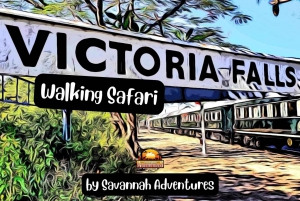
Victoria Falls: Bush Walk + Tour of Victoria Falls Town
Learn about the fascinating history of Victoria Falls on an insightful walking tour. See the local craft market, pass by iconic buildings, and take a scenic path through Victoria Falls National Park.
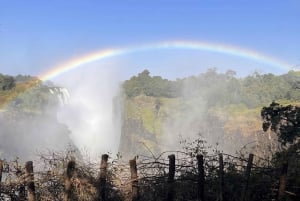
Zimbabwe & Zambia: Guided Tour of the Falls from Both Sides
Witness the Victoria Falls from both the Zimbabwean and Zambian sides on this guided day trip. Get the best views of the falls from various lookout points and visit a local market for souvenirs.

Zambezi National Park Game Drive in a Small Group
Take part in an exhilarating game drive riding an open four-wheel vehicle. Depart from Victoria Falls and enjoy a short ride to the gorgeous Zambezi National Park, where your guided journey begins.

Zambezi National Park Full Day Safari
Explore the Zambezi National Park habitats , flora and fauna .The park is an emerging game viewing hot spot around Victoria Falls area
Local News & Articles
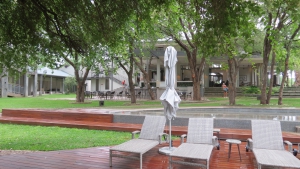
Our Visit To Palm River Hotel In Victoria Falls
On our latest trip to the resort town of Victoria Falls, we had the pleasure of visiting the recently opened Palm River Hotel. Palm River is a 4-star facility that is a sister property to Ilala Lodge. We were completely impressed by the hotel itself and the ex...
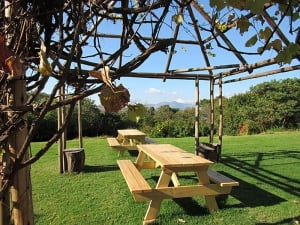
Proteas Of The Eastern Highlands
The Eastern Highlands region of Zimbabwe is one of the most beautiful areas in the country. Well known for its stunning landscapes, it has a lot to offer the nature lover who is hungry to explore. The area has a wide vegetation profile due to its rich soils, h...
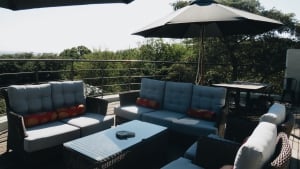
528 I Victoria Falls
528 I Victoria Falls is a family-run Bed and Breakfast located in Vic Falls. We were privileged to visit earlier this month to get a first-hand impression of the lodge. It is just a short drive from the heart of Victoria Falls, within easy reach of ...

Our Visit To Matopo National Park
It was 5 pm and we were headed toward the Whovi Wild Area exit and back to the campsite, we were to sleep in. Whovi is part of the Matopo Hills National Park in Zimbabwe’s Matebeleland province. There, in a slashed fire-break with the golds of those perfect ...
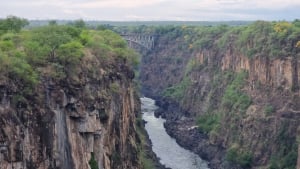
Our Unforgettable Experience At The Elephant Camp
What an amazing weekend we experienced at the Elephant Camp in Victoria Falls. The moment we landed at the Vic Falls International airport, the safari adventure began. An Elephant Camp shuttle was already waiting for us, a very friendly driver called Ben dropp...
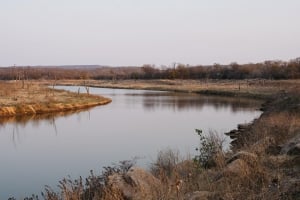

Gorgeous Indigenous Forests In Chizarira National Park
“Stop! Buck, Look! Ground hornbills.” I pointed out the passenger window to three blackbirds, striding through the charred ashes, beaks tucked in, three masks, and bulbous throats flashing red amongst a landscape of burnt black. They were on the lookout fo...
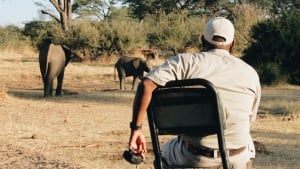
A Memorable Stay At Matetsi Victoria Falls
Matetsi Victoria Falls is a dreamy safari location that offers an extraordinary experience. We recently had the chance to stay at this luxury lodge. They provide a complimentary transfer and are located about 35 minutes drive from Victoria Falls,...
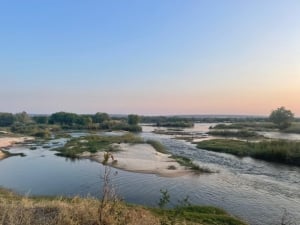
Our Weekend Getaway To Sian Simba River Lodge In Victoria Falls
Our trip began at Harare Domestic Airport, where we boarded the Kuva Air Flight to Victoria Falls. The flight took approx. 1hr 15 mins, was comfortable and we were served a light pastry snack accompanied by a soft drink. On arrival at Victoria Fall...
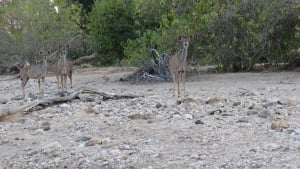
Kavinga Safari Camp - Mana Pools - A Memorable Experience
Kavinga Safari Camp is an exceptional wildlife destination that offers a remarkable experience for nature enthusiasts and wildlife lovers. Situated in a pristine wilderness area of Mana Pools, Kavinga Safari Camp provides a perfect combination of luxurious acc...
Create & Share your own Guide to Zimbabwe with friends and family!
Add your recommended places to visit by browsing the website and pressing the icon.
Create your own guide of favourite 'must see' places
Earn your Local Expert badge by Sharing your guides with others
Get your guide seen by submitting it to the Mini Guides section
Best Honeymoon/Romantic Getaway Locations
Handpicked by a Local Expert
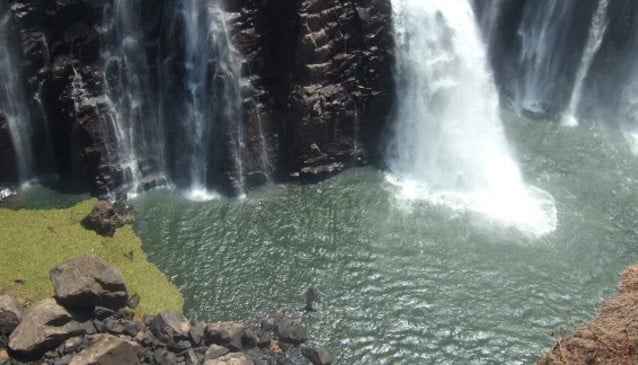
Top 5 Things To Do in Zimbabwe
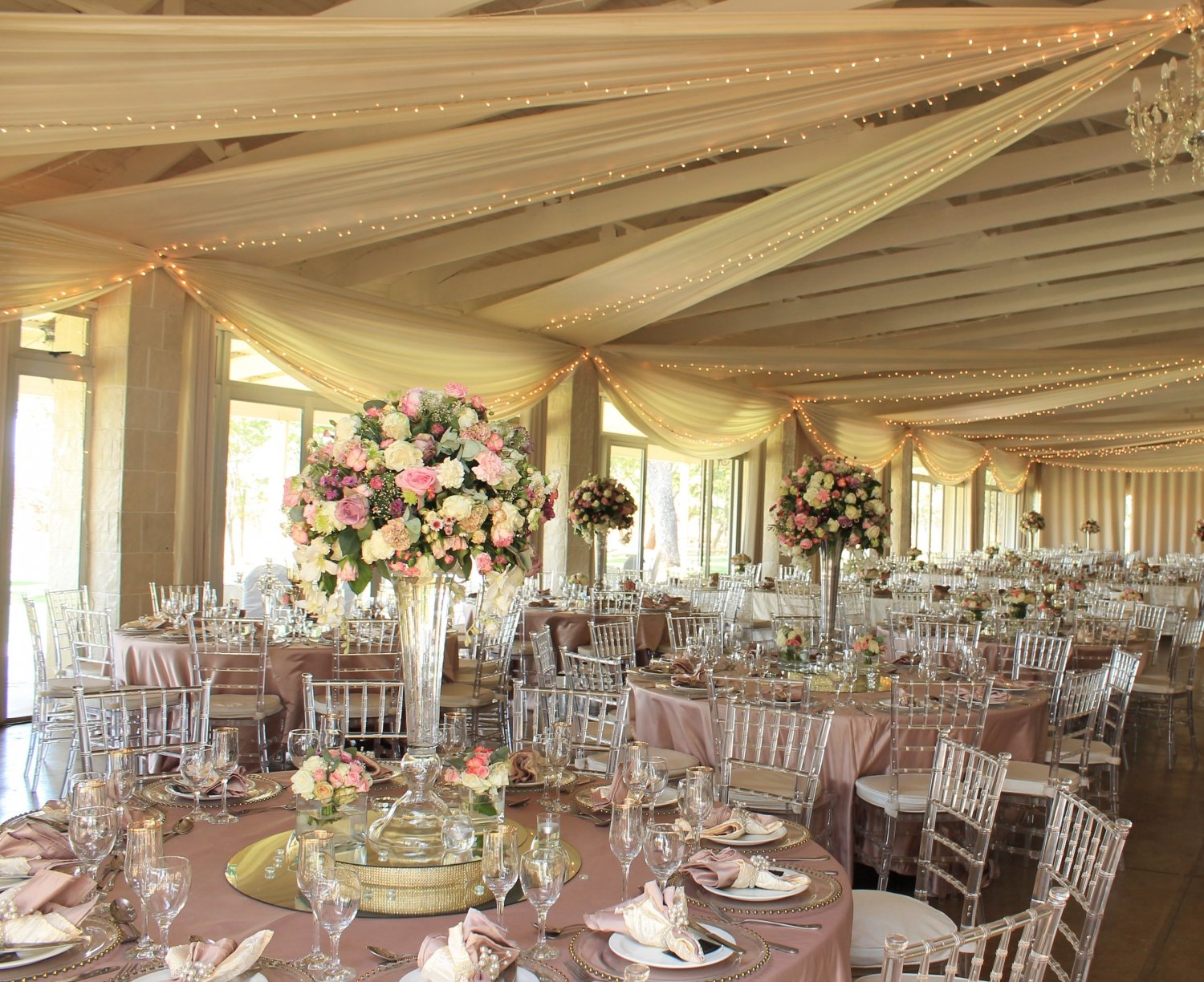
Best Wedding Venues in Zimbabwe
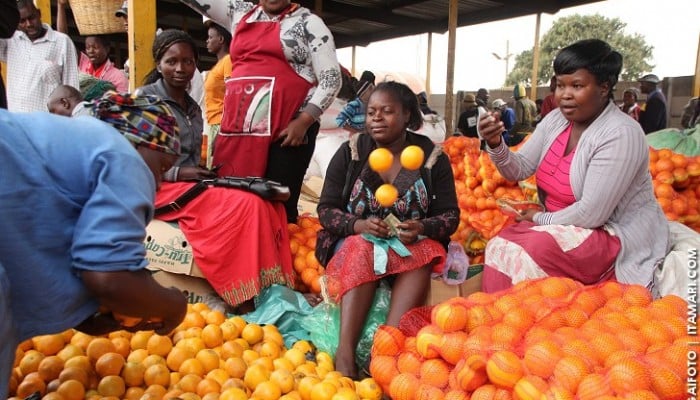
Top 5 Places For Curio Shopping
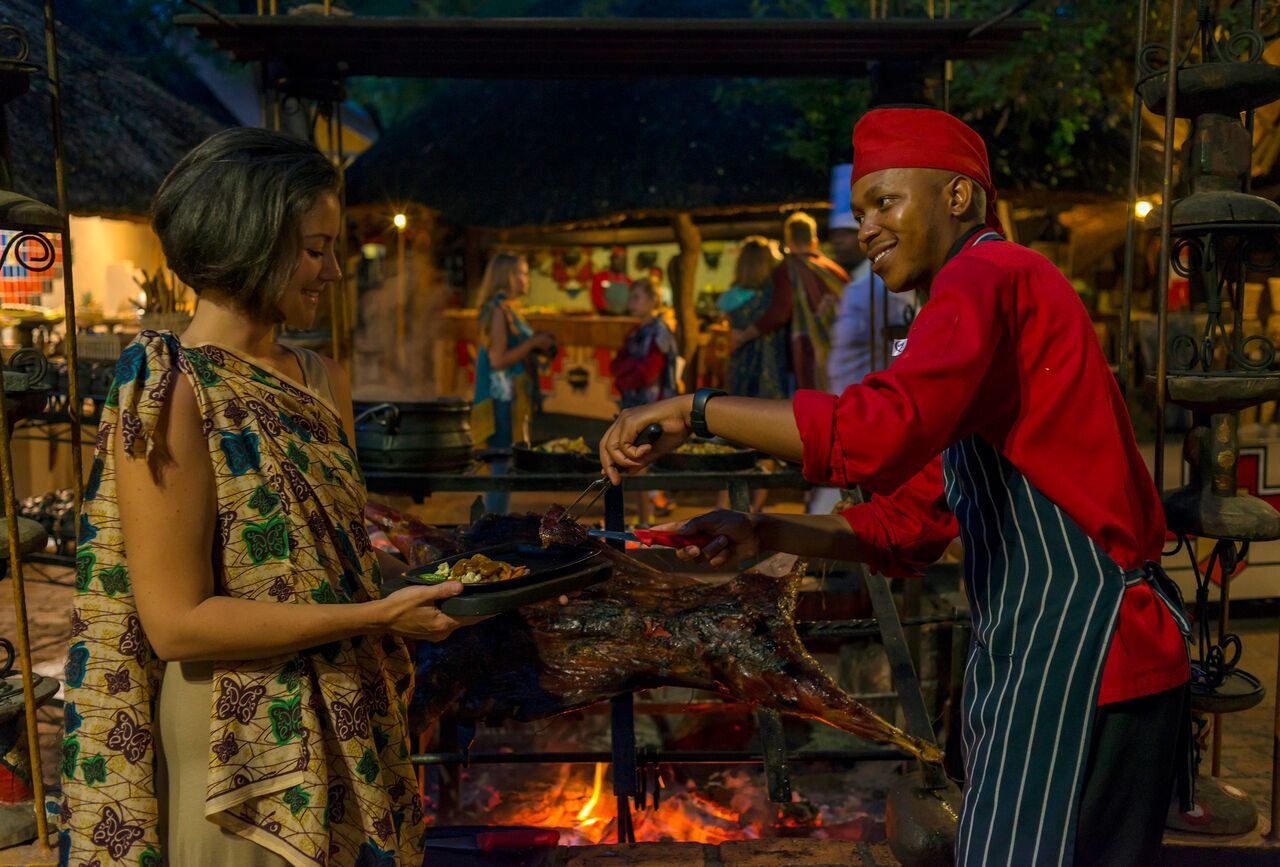
Top 5 Local Cuisine Restaurants
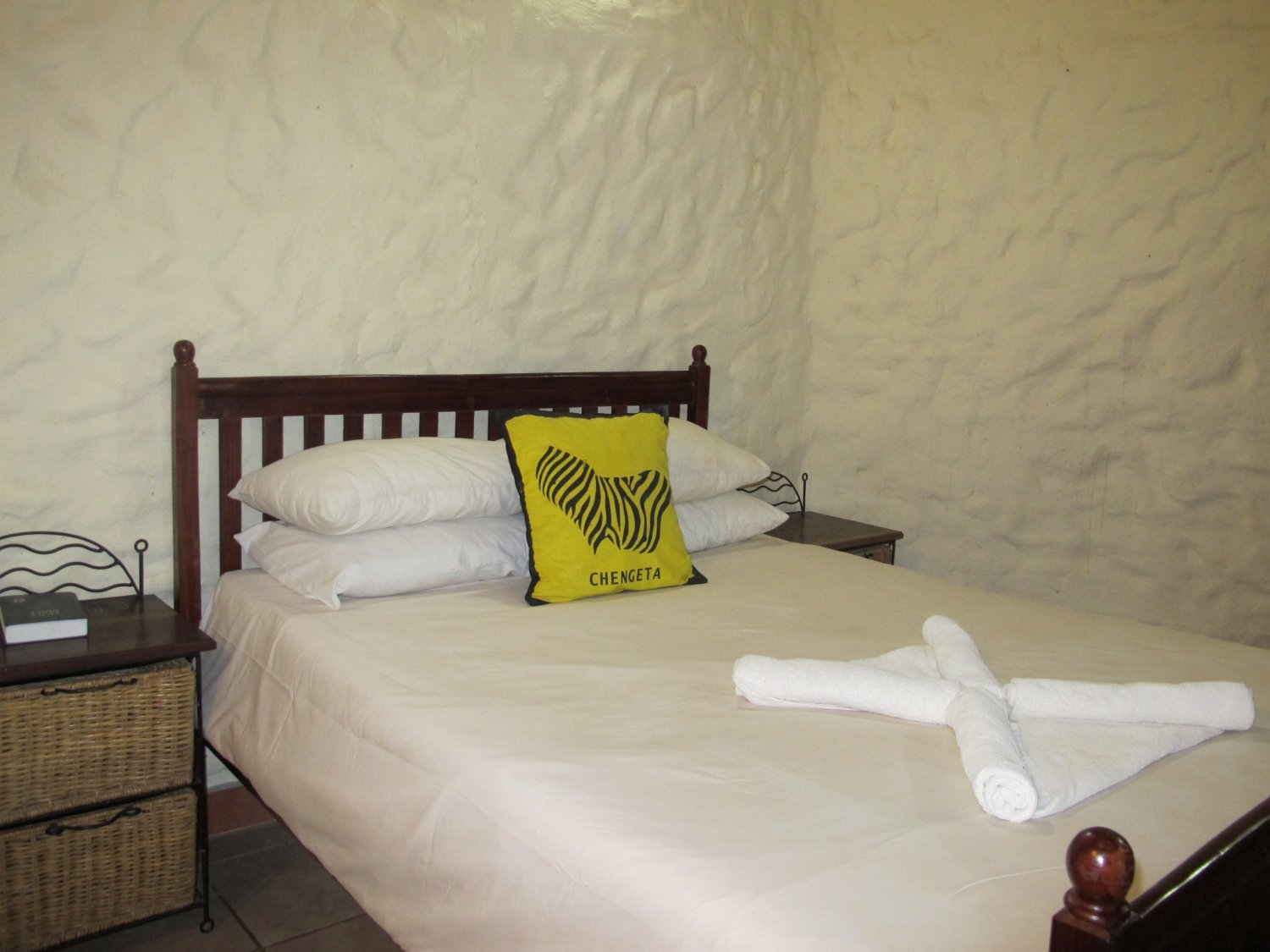
Best Team Building Spots
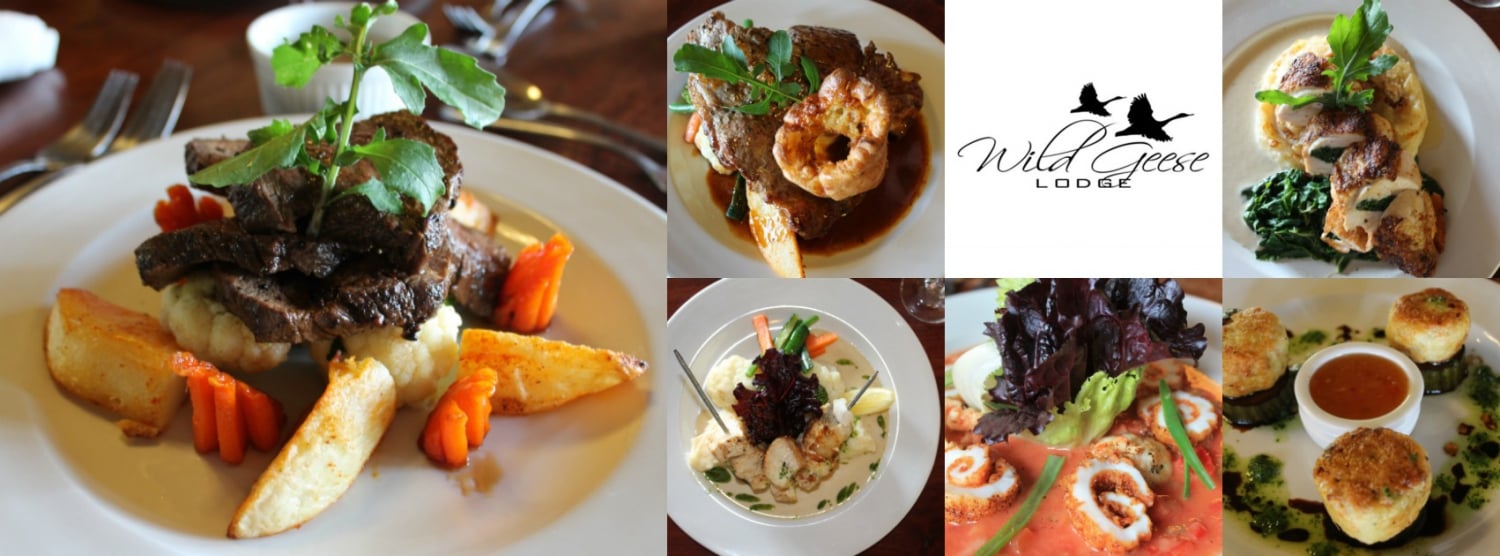
Top Five Conference Venues
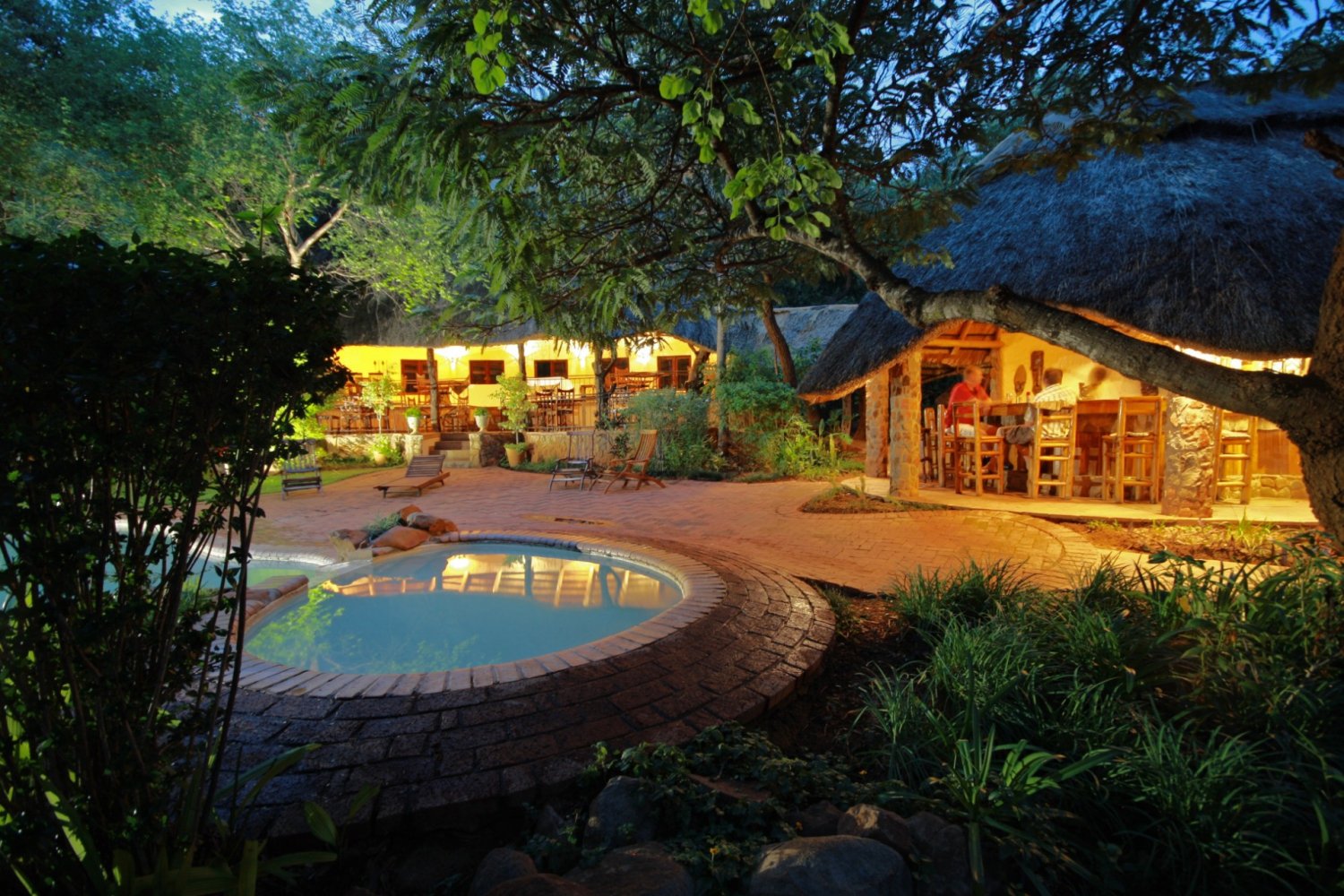
Must See Places For First Timers
My favourite places.
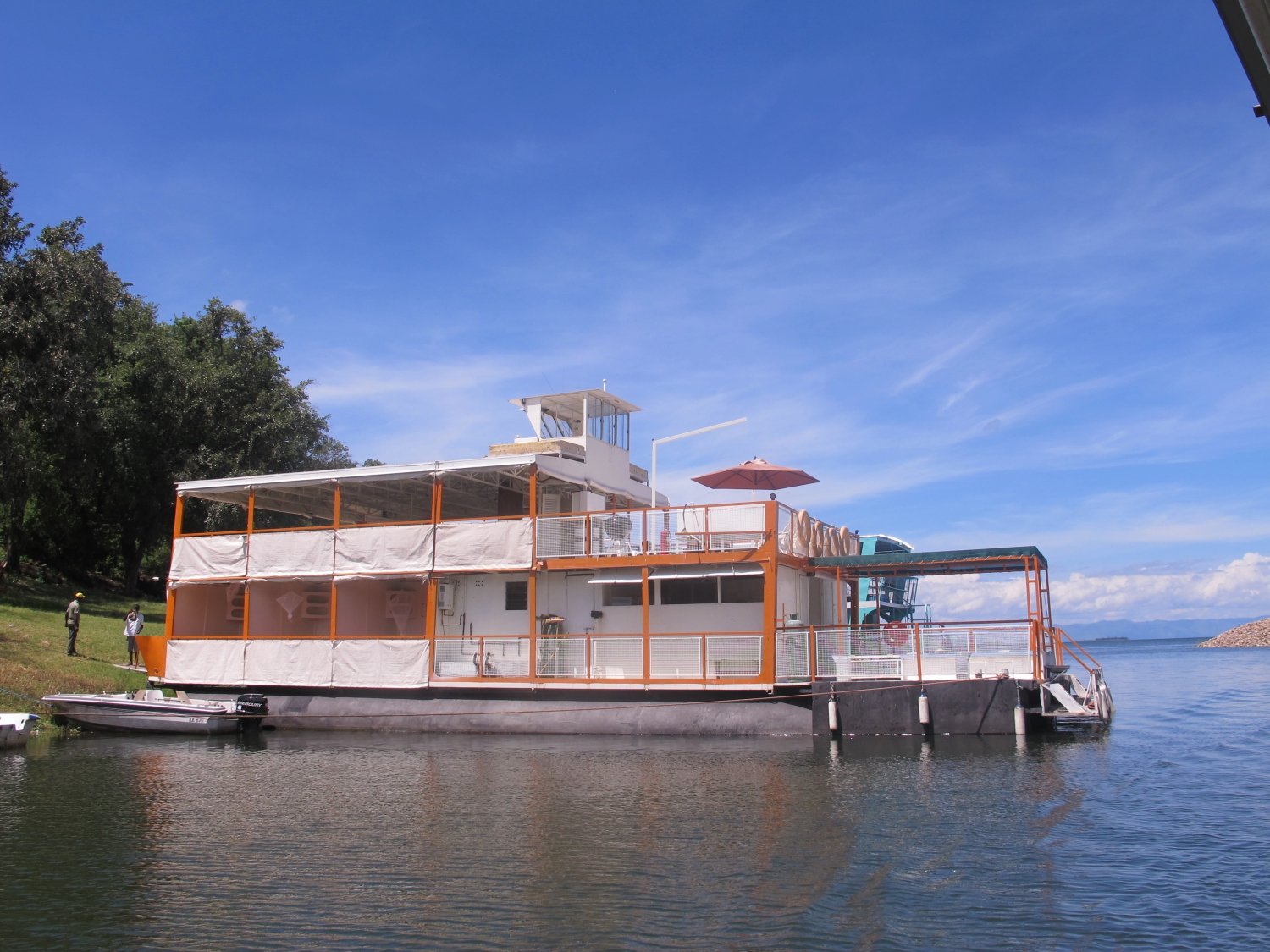
Best Middle Of The Range Houseboats
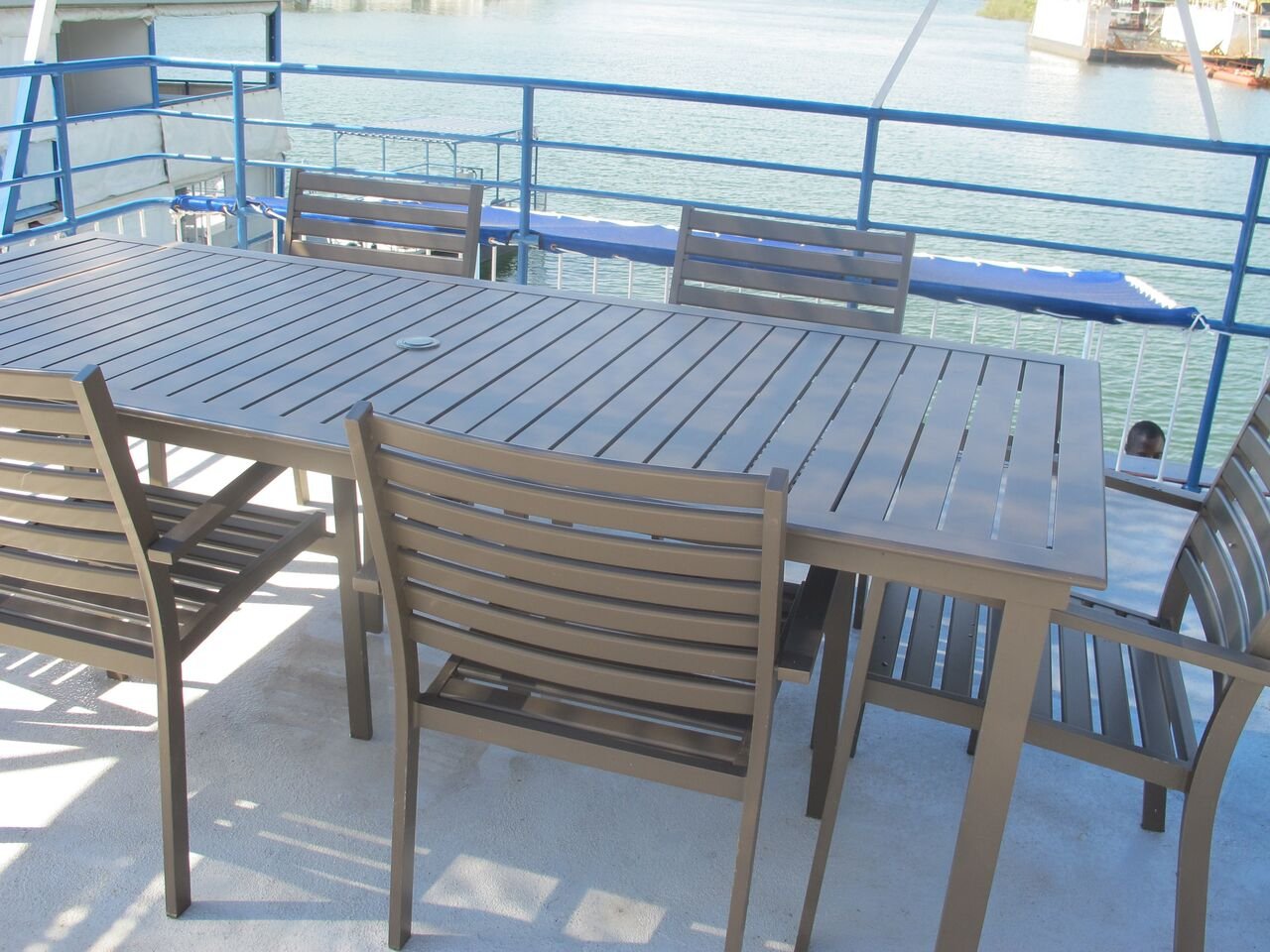
Best Luxury Houseboats

Best Glamping Locations
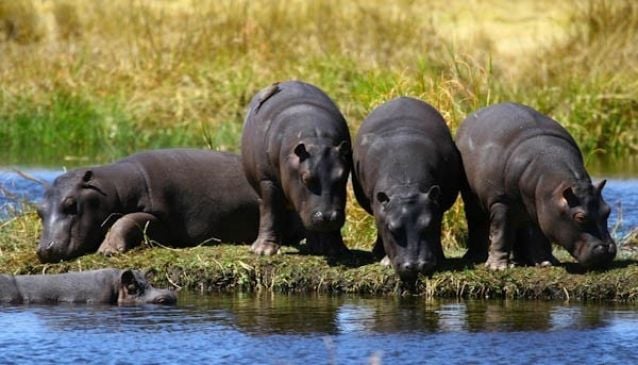
Best Private Game Parks Around Harare
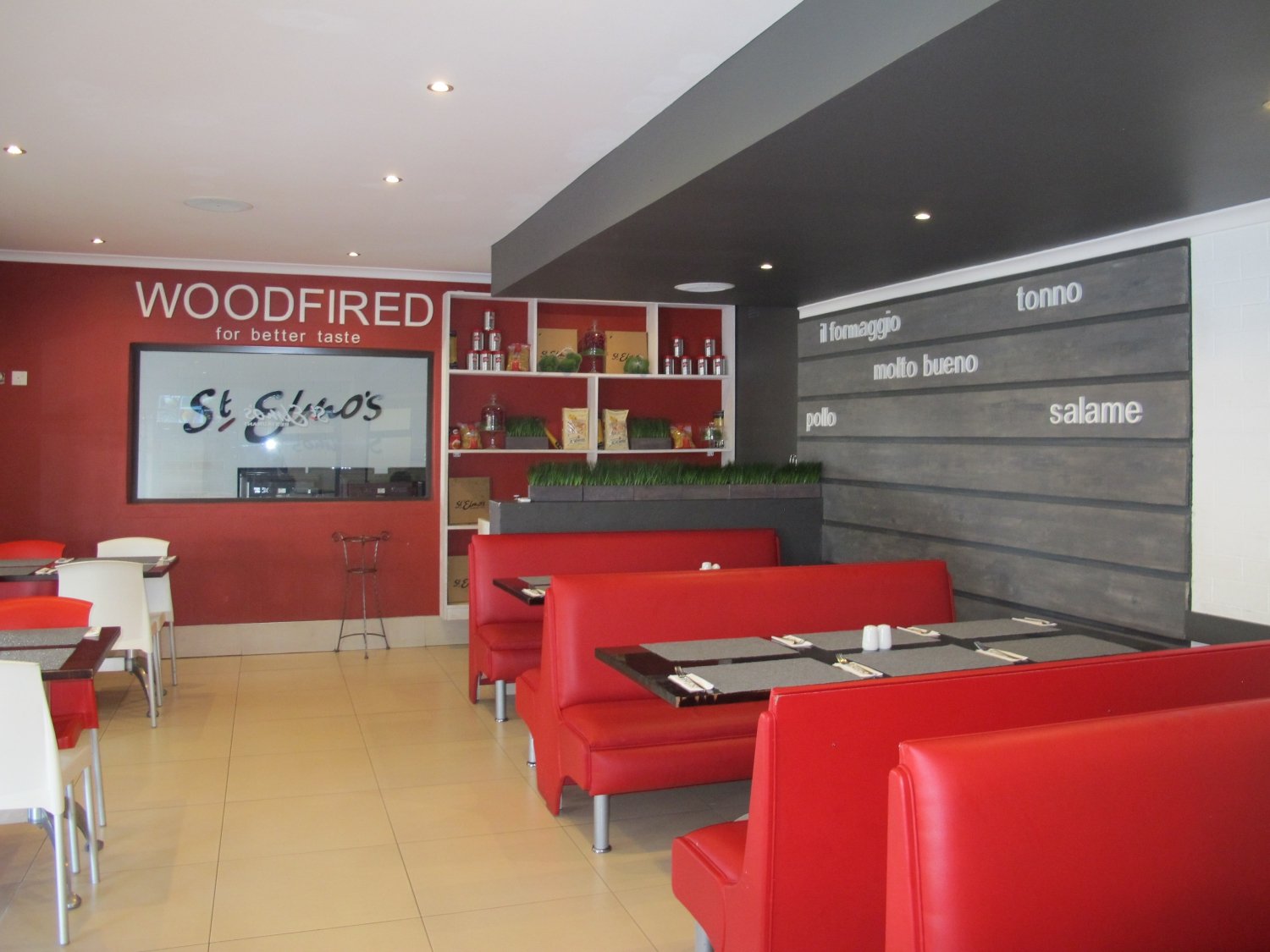
Best Child Friendly Restaurants And Leisure Centres - Harare

We Are Part of the My Guide Network!
My Guide Zimbabwe is part of the global My Guide Network of Online & Mobile travel guides.
We are now in 120+ Destinations and Growing. If you are interested in becoming a local travel partner and would like to find out more then click for more info about our Website Business Opportunity .
Nearby Destinations
- My Guide Zambia
- My Guide Botswana
- My Guide Johannesburg
- My Guide Durban
- My Guide Namibia
- My Guide Tanzania
- My Guide Eastern Cape
- My Guide Garden Route
- My Guide Cape Town

- Destinations
- Zimbabwe Guide
World Heritage Sites in Zimbabwe
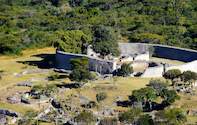
Zimbabwe Has Five UNESCO World Heritage Sites
- Mana Pools (Natural)
- Khami Ruins National Monument (Cultural)
- Great Zimbabwe Ruins (Cultural)
- Mosi-oa-Tunya / Victoria Falls (Natural)
- Matobo Hills (Cultural)
Mana Pools - Date of Inscription 1984
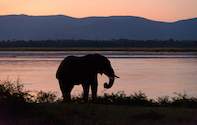
Mana Pools, one of the World Heritage Sites in Zimbabwe, is a wildlife conservation area and consists of three different areas: Mana Pools National Park and the Sapi and Chewore Safari Areas. Situated in the Zambezi valley, this is a remote and spectacular area with magnificent views of the Zambezi River and mountains of the Rift Valley over in Zambia.
Mana means “four” in Shona which are the Main, Chine, Long and Chisambuk pools. Mana Pools is among the least developed National Parks in Zimbabwe but is renowned for its game-viewing. Large concentrations of buffalo and elephant are found along the river's edges, while predators such as lions, wild dogs, leopards, hyenas and cheetah are often sighted. Greater kudu, Burchell's zebra, impala, warthog and common waterbuck can be seen on the plains. Mana Pools offers fantastic birding with over 300 species recorded.
Game viewing at Mana Pools can be done on boat safaris, game drives and bush walks. Fishing and canoeing are popular activities too. The best time of year to visit Mana Pools is between May and October, as large groups of animals congregate along the river to drink as water elsewhere in the park is scarce. When the rainy season starts (November) it becomes exceptionally hot and the roads can become impassable.
Visit Mana Pools National Park Safari Lodges in Zimbabwe
Great Zimbabwe - Date of Inscription 1986
The Great Zimbabwe ruins with its massive curving walls, constructed from millions of granite blocks fitted together without mortar, hosts the largest stone structures south of the pyramids.
Great Zimbabwe, which means "houses of stone", is an ancient city situated 30 kilometers from Masvingo, Zimbabwe. Awe inspiring, majestic and timeless, these structures were built by indigenous African people between AD 1250 and AD 1450. At the height of its power, Great Zimbabwe had over 18,000 inhabitants. Great Zimbabwe was a main trading center and associated with gold trading. Fragments of Persian and Chinese pottery have also been found at this ancient site.
The two main enclosures are the Hill Complex, on the steep-sided granite hill and the land below this hill where the Valley Enclosures and the Great Enclosure are situated. The stone walls, up to six meters thick and twelve meters high, are built of granite blocks without the use of mortar.
Travel Guide to Great Zimbabwe
Mosi-oa-tunya / Victoria Falls - Date of Inscription 1989
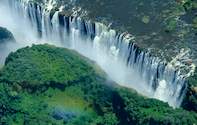
Victoria Falls is one of the natural World Heritage Sites in Zimbabwe and one of the most spectacular waterfalls in the world. The Victoria Falls are 1708m wide and drop 99m at its highest point, making it the largest sheet of falling water in the world when the Zambezi River is at its fullest. Twice the height of Niagara Falls and one and a half times wider, the Victoria Falls are divided into five separate waterfalls: Devil's Cataract, Main Falls, Horseshoe Falls, Rainbow Falls and Eastern Cataract.
Victoria Falls (also known as Mosi-oa-Tunya, "the smoke that thunders") seen by David Livingstone, the first European to see the falls, named it in honour of Queen Victoria. He was so impressed by what he saw that he described the falls saying "scenes so lovely must have been gazed upon by angels in their flight."
Peak floodwaters usually occur during April when approximately 625 million litres per minute cascade over the edge per minute. The resulting spray rises up to 1650 feet into the air that can be seen more than 20 km away. During this time there is so much water flowing that the spray makes it quite difficult to see the falls.
Mosi-oa-Tunya National Park is home to the spectacular Victoria Falls. Mosi-oa-Tunya National Park is situated in the southernmost edge of Zambia with Zimbabwe on its border. The Victoria Fall is the physical landmark that separates these two countries. The park is a wildlife sanctuary and animals found here are white rhino, giraffe, elephant, buffalo, impala, puku, and warthog. Travellers to Victoria Falls can enjoy thrilling adventure activities including white water rafting, bungee jumping, river cruises, fishing and game drives.
Visit Victoria Falls Hotels, Resorts and Safari Lodges on the Zimbabwean Side
Khami Ruins National Monument - Date of Inscription 1986
The Khami Ruins are the second most important archaeological site in Zimbabwe after the Great Zimbabwe Ruins. Khami developed and grew between 1450 and 1650 after the capital of Great Zimbabwe had been abandoned.
Both ruins belonged to the same cultural tradition and have the same layout in sectors, between the chief's residence and an open area with huts for the majority of the population. Imported goods like Ming porcelain and Spanish silverware were found, which shows that Khami was a major centre for trade over a long period of time.
The Khami Ruins, one of the World Heritage Sites in Zimbabwe, are a national monument and are an impressive but unknown attraction in Zimbabwe.
Matobo Hills - Date of Inscription 2003
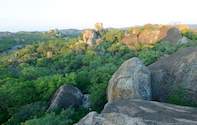
The Matobo Hills, another of the World Heritage Sites in Zimbabwe, are home to an outstanding collection of rock paintings, the largest in southern Africa. The large boulders provide abundant natural shelters and have been associated with human occupation from the early Stone Age.
The Matobo Hills and caves of the area are renowned for the 20,000 cave paintings and petroglyphs that can be found there, which date from as far back as 13,000 years ago. The unusual hill formations that dot the landscape are called “Bald Heads” by the local people.
The various themes depicted in the paintings are associated with hunting and gathering and compared to Tsodilo in Botswana, the Matobo Hills are older and associated with a different cultural tradition. The Matobo Hills still provide a strong focus for the local Zimbabwe community, which use the shrines and sacred places linked to traditional and social activities.
Visit Matobo National Park Safari Lodges in Zimbabwe
Tentative list for Zimbabwe - Ziwa National Monument
The Ziwa National Monuments bear evidence of human occupation for all the major archaeological periods identified in Zimbabwe's history. Starting from the hunter-gatherer periods of the Stone Age to historical times, the following has been found in the vicinity - Stone Age deposits; rock art sites; landscapes of farming communities marked by terraces and field systems, hill forts, pit structures and stone enclosures; iron smelting and forging furnaces and numerous remains of daub-plastered housing structure.
A Travel Guide to Great Zimbabwe
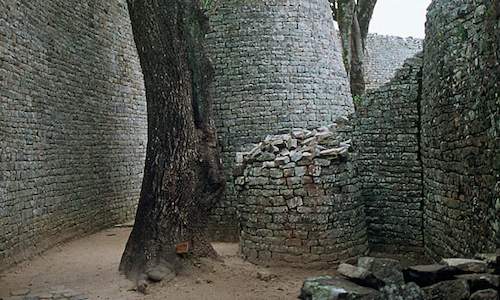
Zimbabwe Safari Guide
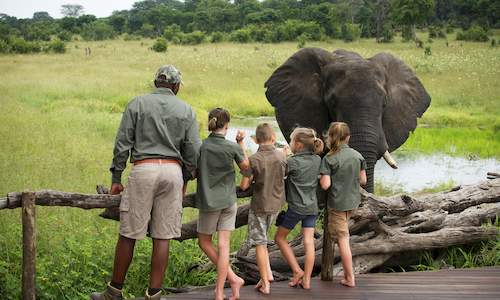
- Customer Support
- Tel: +27 21 424 1037
- Fax: +27 21 424 1036
- Contact by Mail
- Business Hours
- Mon - Fri. 08:00 - 17:00
- Saturday. 08:00 - 12:00
- Reservations and Bookings
- Booking Conditions
- Visa and Passport
- About Siyabona Africa (Pty) Ltd
- Africa Safari Holidays
- South Africa
- Kruger Park
- Victoria Falls Holidays
- Kenya Safari
- Zambia Safari
- Botswana Holidays
- Namibia Holidays
- Malawi Holidays
- Mozambique Holidays
- Zimbabwe Safari
- Safari Holiday Places In Africa
- Siyabona Popular Websites
- Safaris Specialist
- Botswana Safari
- Cape Town Hotels
- Kenya Safari Holidays
- Botswana Safari Tours
- Sun City Resort
- South Africa Nature Reserves
- Lodges near Kruger Park
- Hotels in South Africa
- Timbavati Private Game Reserve
- Group Enquiry? NEW
Places to Visit in Zimbabwe
- Places To Visit
Zimbabwe Tourist Places
Here are some of the best places to visit in zimbabwe:.
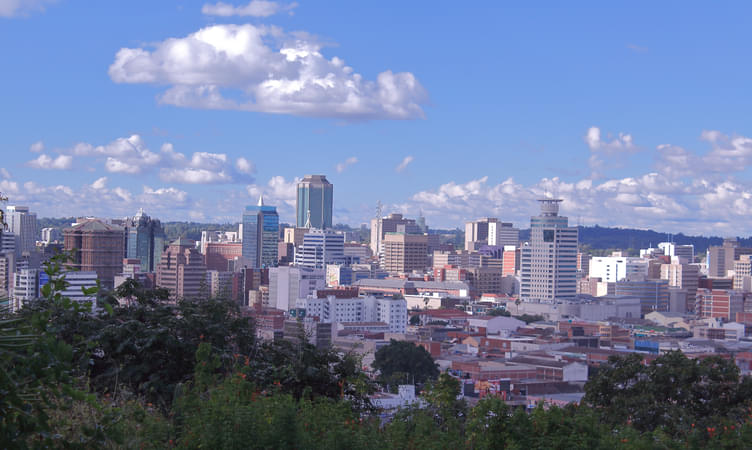
Nestled in the north-eastern part of Zimbabwe in the Mashonaland region, Harare is one of the scenic cities. Being the capital, it is one of the lovely places to visit in Zimbabwe. Until 1982, this city was known by the name Salisbury but was rechristened as Harare on the 2nd Zimbabwean Independence Day. At an altitude of 1,483 metres, Harare has a parkland landscape. Home to several parks and outdoor spaces, it is frequently referred to as Zimbabwe's Garden or Sunshine City. The top attractions in Harare are Mukuvisi Woodlands, Wild Is Life Sanctuary, Shona Sculpture Gallery, National Gallery of Zimbabwe, Harare Gardens and Chapungu Sculpture Park. Especially, one must not miss visiting Mukuvisi Woodlands which houses lush greenery along with native wildlife & flora. The top things to do in Harare are Wildlife Safari at Mukuvisi Woodlands, Full Day City Tour, Day Excursion to Chinhoyi Caves, and Bird Watching at Kuimba Shiri Bird Park. Owing to its high-altitude, Harare has a cooler climate, with an average temperature revolving around 17.95 °C. The city experiences 2 distinct seasons i.e. Wet Summer (November-April), Cold & Dry Winter (May-August).
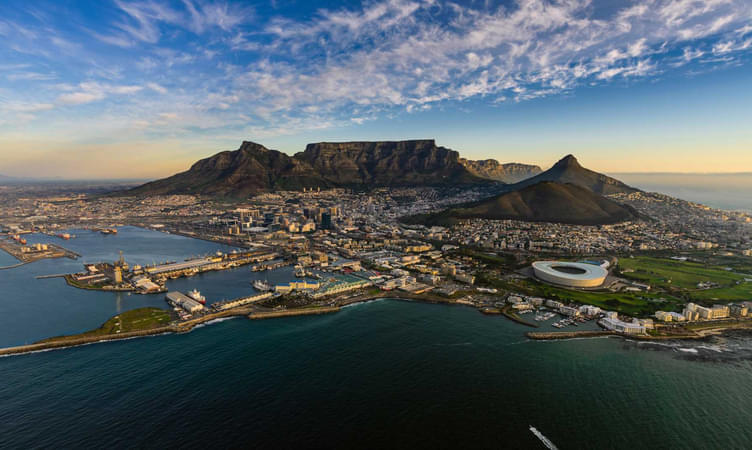
Best of South Africa

In the Matabeleland Region, Bulawayo is one of the popular Zimbabwe tourist places. Since the start, it has been the principal industrial hub of Zimbabwe. Bulawayo is known as the "City of Kings" because it houses a large industrial base. Initially, this Zimbabwean city was a municipality but was honoured with the status of a city in 1943. Bulawayo sits on a high elevation and has undulated hills on the southern side. As one moves towards the north and north-western part, the slopes slowly become gentle. The top attractions in Bulawayo are Matobo National Park, Natural History Museum, Khami Ruins, Nesbitt Castle and Chipangali Wildlife Orphanage. The top things to do in Bulawayo are Excursion to Natural History Museum, Wildlife Exploration at Matobo National Park and Day Visit to the Khami Ruins. In 1986, Khami Ruins were declared as the UNESCO World Heritage Site and is also a National Monument. Due to its highly-elevated topography, Bulawayo has a humid subtropical climate and enjoys cool inflow of air. The mean annual temperature ranges around 19.16 °C. Bulawayo experiences 3 seasons i.e. Dry Summer (Late August- Early November), Wet Summer (Mid November-April), Cold & Dry Winter (May-August).

Best of Africa

In the Midlands Province, Kweku is one of the centrally located places in Zimbabwe and was established in 1898. Until 1982, it was known as Que Que. In today's era, it is a significant centre of trade and commerce in the country. Nestled at an altitude of 1,220 metres, Kweku has gentle slopes which adds beauty to its landscape. It has road-trip friendly streets punctuated by natural aura. The top attractions in Kweku are the National Mining Museum and Simunye Gardens. The National Mining Museum proudly exhibits the mining legacy of Zimbabwe since the colonial era. The best things to do in Kweku are a visit to the National Mining Museum which portrays the importance of Kweku as a mining district. On the other hand, Kweku is also famous for its Safaris where you can spot species like Sables, Elands Rhinos, Kudus, Lions and African Elephant. Owing to its location, Kweku experiences a Warm Temperate Climate. The mean annual temperature revolves around 19 ° C. Winters are cold and dry while the Summers are hot and wet.
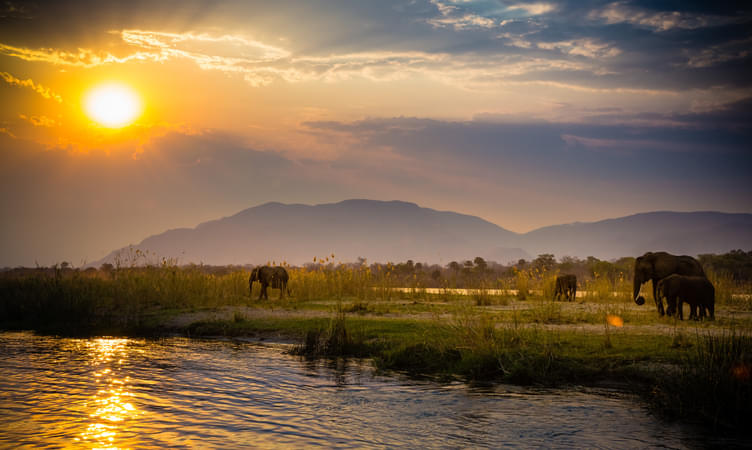
Best of Zambia

In south-eastern Zimbabwe, Masvingo was originally known as Fort Victoria. Thereafter, it was known as Nyanda for a short span and was finally named Masvingo. It is one of the notable Zimbabwe tourist places and is located close to Great Zimbabwe and Lake Mutirikwi. Masvingo has a relatively flat landscape with rolling mountains which makes it ideal for indulging in trekking and hiking. Adding to the scenery of the city, Lake Mutirikwi lies close to Masvingo and is great for a quick getaway. The top attractions in Masvingo are Great Zimbabwe, Chipinda Pools, South Gonarezhou National Park and Lake Kyle Recreational Park. Especially, one must not miss visiting the Lake Kyle Recreational Park which is rich in flora and fauna. Great Zimbabwe also makes for a lovely escapade. The best things to do in Masvingo are a visit to the historic site of Great Zimbabwe, Wildlife Safari at Gonarezhou National Park and Day Excursion to Lake Kyle Recreational Park. Masvingo experiences hot and dry weather from January to December. Summers are accompanied by rainfall. The mean annual temperature swings between 26.1 Degrees to 39.5 Degrees.
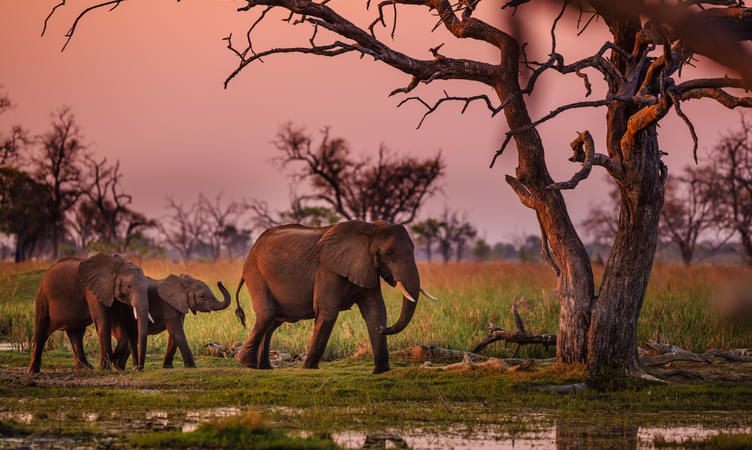
Best of Botswana
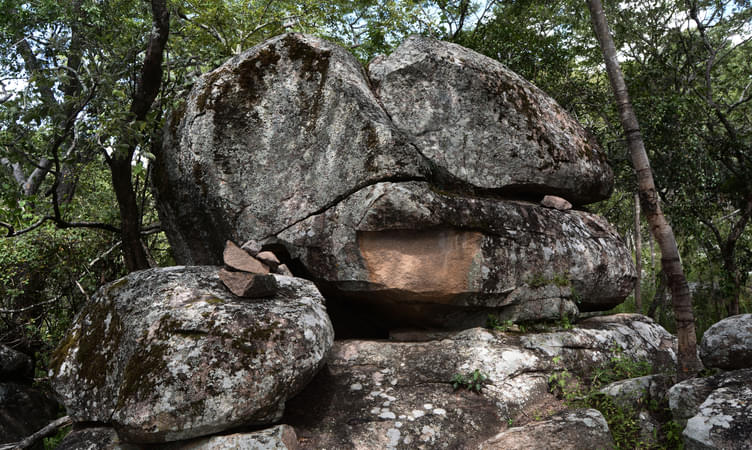
In Mashonaland East, Marondera is one of the chief places in Zimbabwe. Until 1982, it was known by the name Marandellas. The city is multi-cultural and is home to people from different ethnic groups. Marondera is also home to several educational institutions. The top attractions in Marondera are Imire Game Park, Rufaro Dam, and Gosho Park. Away from the urban-chaos, Imire Game Park offers the proper blend of wilderness and luxury. The top things to do in Marondera are Day Excursions to the Imire Game Park and Rufaro Dam. Fishing in Rufaro Dam is a fantastic experience consisting of species like Largemouth Bass. In Marondera, July is the coldest month and October is the hottest month. The mean annual temperature swings between 11.2 Degrees and 23.3 Degrees. January receives most of the rainfall.
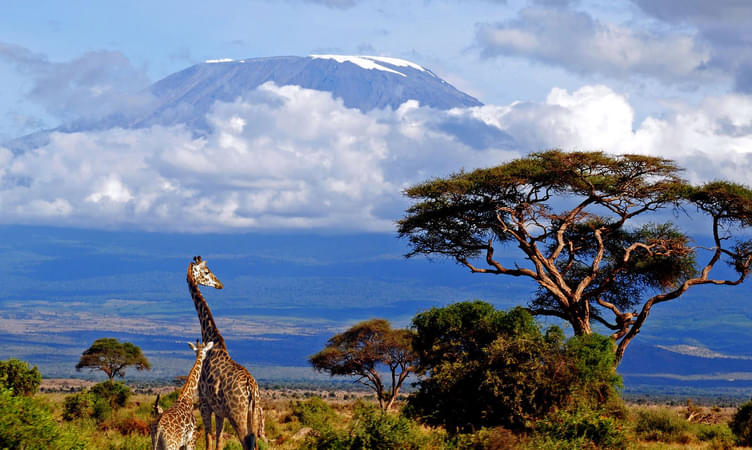
Best of Tanzania

In central northern Zimbabwe, Chinhoyi is located along the banks of the Manyame River in the Mashonaland West. Owing to mining and agriculture, it is one of the important places in Zimbabwe. Chinhoyi was set up in 1906 by Lieutenant Margherito Guidotti and was known by the name Sinoia until 1982. The charming site of the Manyame River enhances the beauty of Chinhoyi in an unrivalled way. Its banks are lovely spots for spending some relaxing time and clicking photographs. The top attraction in Chinhoyi is Chinhoyi Caves which are maintained by the Zimbabwe Parks & Wildlife Management Authority. The extensive cave system is surrounded by lush greenery and is made up of Limestone & Dolomite. Day Excursion to Chinhoyi Caves is one of the best things to do when you are on a trip to this Zimbabwean city. It attracts numerous tourists every year. Trekking up to the natural pool present inside the Chinhoyi Caves is itself an adventurous escapade. Gear up to spot several kinds of birds at this locale. Chinhoyi has a temperate climate with a touch of warmness. The average temperature revolves around 20.7 °C. Plus, Summers experience more rainfall than the Winters.
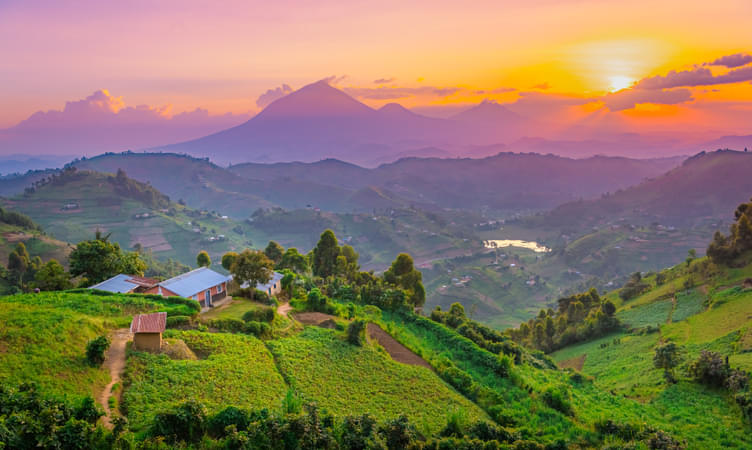
Best of Uganda
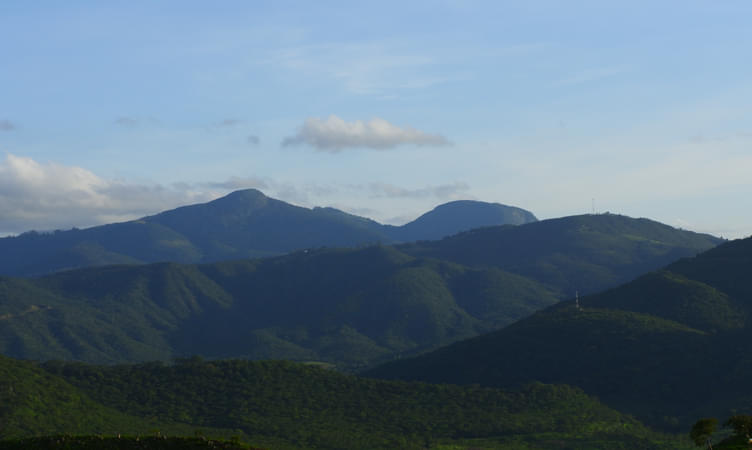
In Manicaland Province in eastern Zimbabwe, Mutare is one of the populated places to visit in Zimbabwe. Established in the 19th century, it is considered an important centre for trade & commerce. Mutare also acts as an entrance to the beautiful Eastern Highlands. Since Mutare is situated at the foothills of Eastern Highlands, it has a wonderful cityscape and is recognized for its wide boulevards, trees and public parks. The top attractions in Mutare are Mutare Museum, Holy Trinity Catholic Cathedral, Utopia House, Vumba Botanical Gardens and Reserve and the Eastern Highlands. The best things to do in Mutare are Day Excursion to Mutare Museum, Church Visit to the Holy Trinity Catholic Cathedral and Trekking to the Eastern Highlands. Concerning its proximity to the ocean, Mutare experiences a Humid Subtropical Climate. The mean annual temperature varies around 19 °C. Summers are hot or warm while the winters are mild.

Best of Nigeria
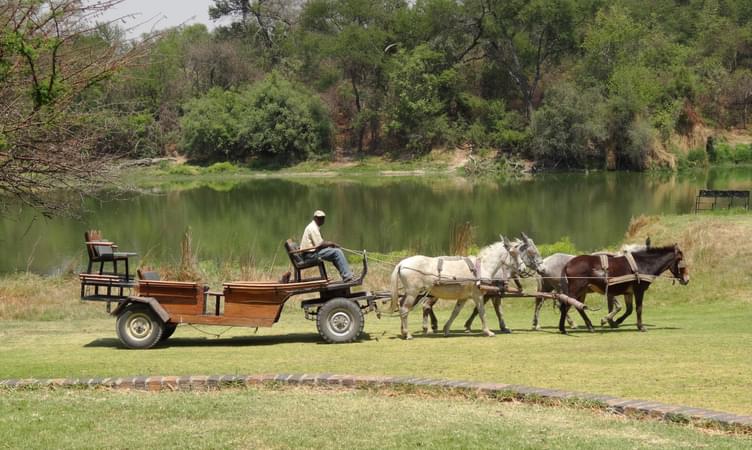
In central Zimbabwe, Gweru is located in the Midlands Province and is one of the underrated Zimbabwe tourist places. It received the status of a city in 1971. Until 1982, Gweru was known by the name Gwelo. Due to the presence of numerous universities, it is also known as the “City of Progress.” Gweru is also well-known for Farming and Commercial Gardening. Over the years, it has also evolved to become an important industrial hub. The top attractions in Gweru are Antelope Park, White Waters, Aviation Museum and Insukamini Ruins. The Aviation Museum is an intellectual place for getting to know about Zimbabwe's military history. It nicely portrays the contributions of the Air Force, Army and Police towards the country. Owing to its location, July is usually the coldest month in Gweru while October is the hottest. The mean annual temperature swings between 11 Degrees to 24.9 Degrees. The highest amount of rainfall occurs in December.
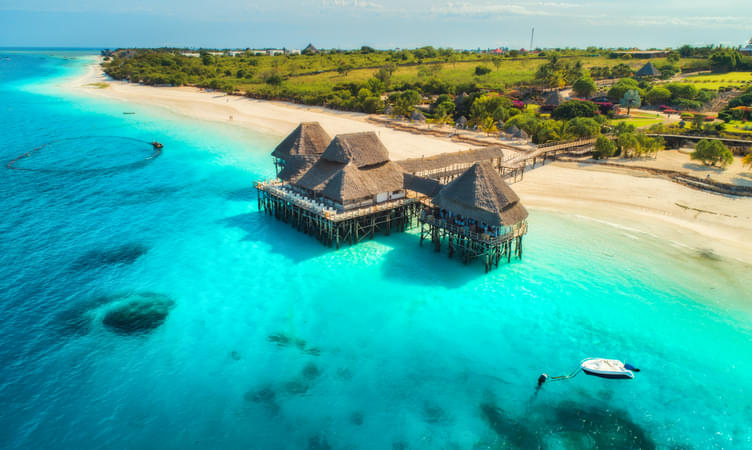
Best of Zanzibar
Other attractions, victoria falls.
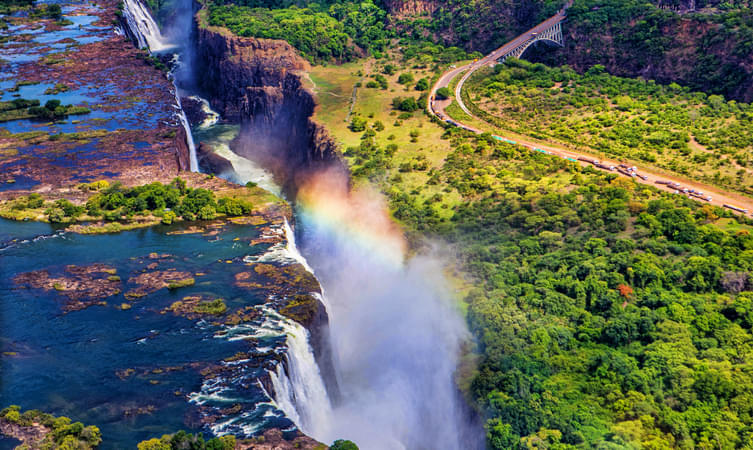
Matobo National Park
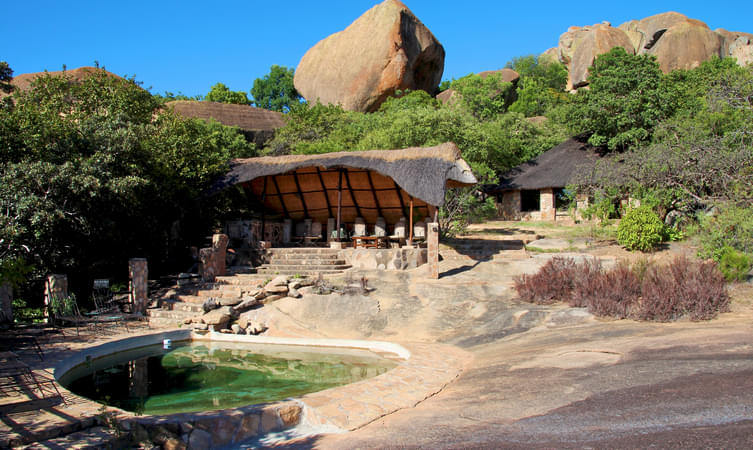
Nyanga National Park
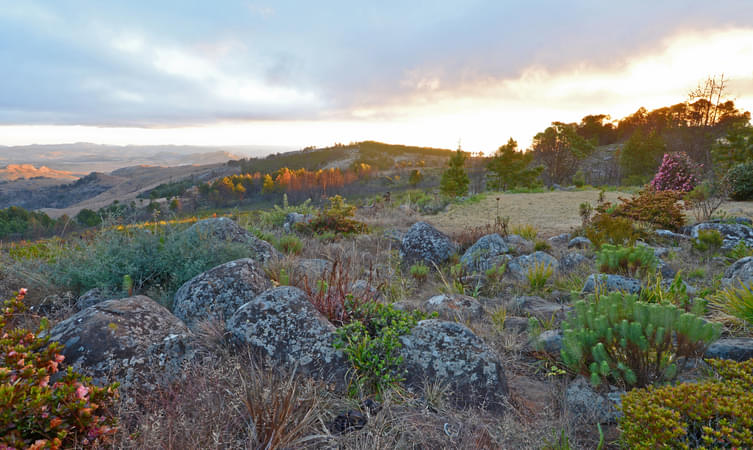
Lake Mutirikwi National Park
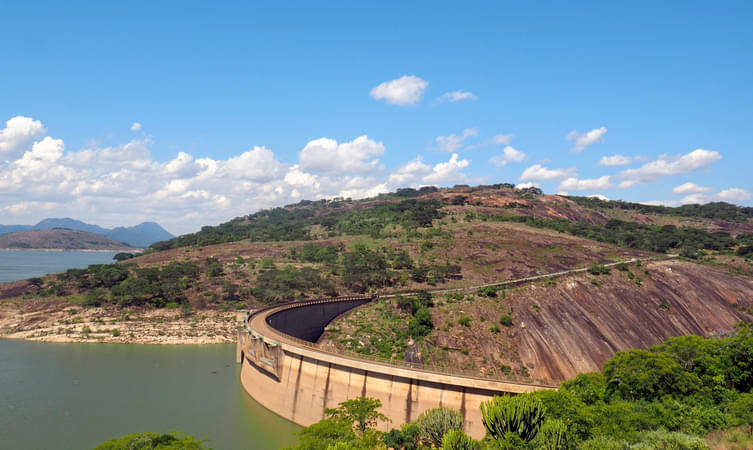
Hwange National Park
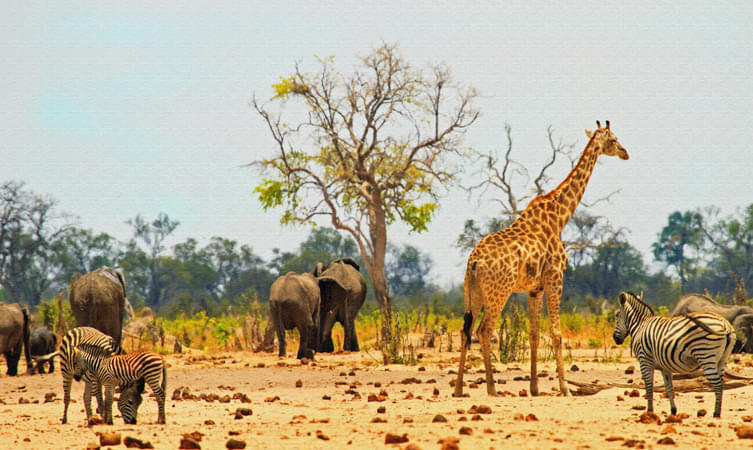
Mana Pools National Park
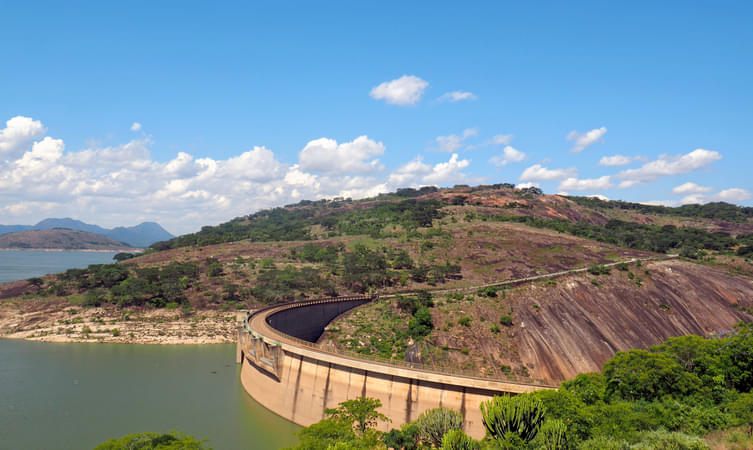
Matusadona National Park
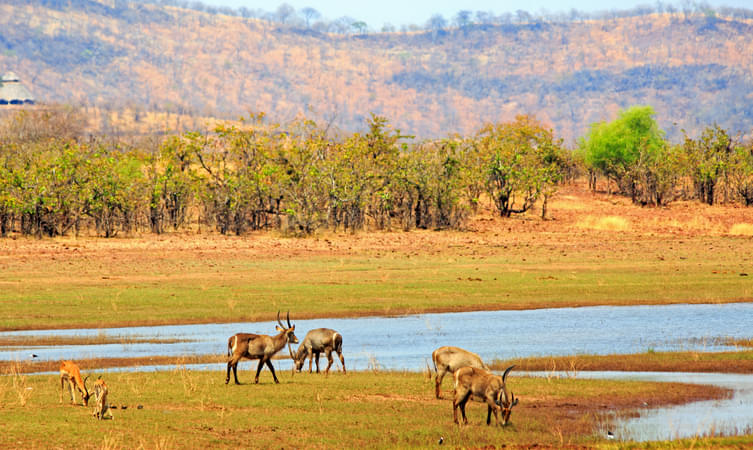
Gonarezhou National Park
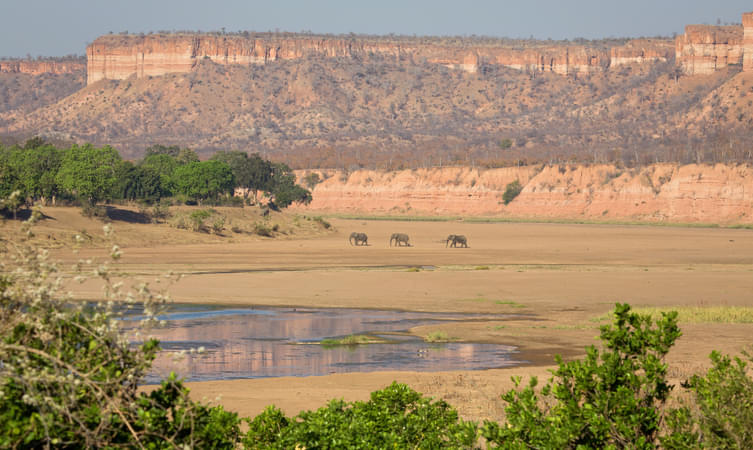
Lake Kariba
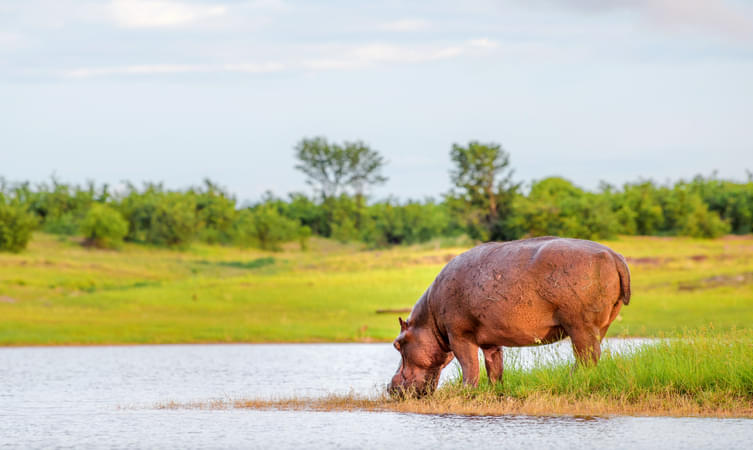
Great Zimbabwe National Monument

Nesbitt Castle
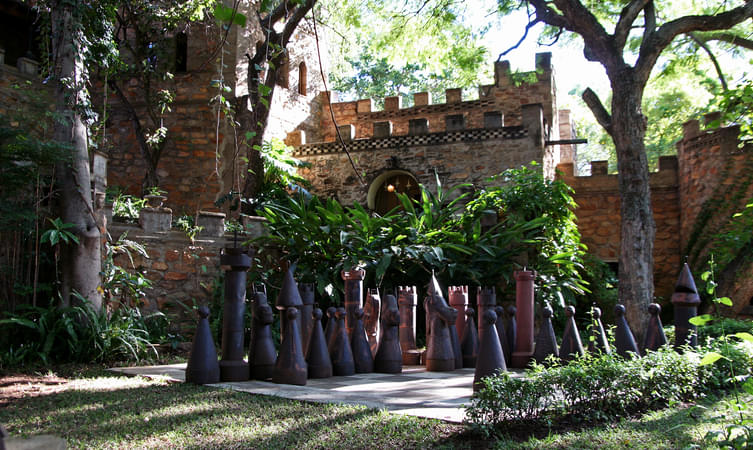
Umfurudzi Park
Umfurudzi Park is one of the most sought-after national parks in Zimbabwe. It is spread over an area of 76000 hectares which is equivalent to almost 760 square meters. This impeccable natural beauty and biodiversity park were brought into being in the year 1981 and it happens to be one of the very first parks that was formed under free Zimbabwe. The park is home to some of the unique species like the Black Rhino and many others. During your visit to this place, you can indulge in a wide range of activities like fishing, swimming, game drives, camping, hiking, and walking tours. Location: 14 Kew Drive, Highlands, Harare, Zimbabwe
People Also Ask About Zimbabwe
Which are the best places to visit in zimbabwe, which are the best places to visit in zimbabwe for couples, which are the best wildlife parks to visit in zimbabwe, what is the best time to visit zimbabwe, how to reach zimbabwe, is zimbabwe worth visiting.

Popular Related Destinations
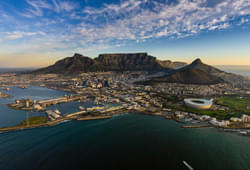
Best Domestic Packages
Best international packages, domestic honeymoon packages, international honeymoon packages, places to visit in india, international places to visit, things to do in india, international things to do, popular on thrillophilia.
- We assure the privacy of your contact data.
- This data will only be used by our team to contact you and no other purposes.
Your enquiry has been received successfully. Our destination expert will reach out to you soon!

World Heritage Sites – in General & in Zimbabwe
- May 14, 2021
Paddy Pacey

UNESCO World Heritage Sites – Background
The United Nations Educational, Scientific and Cultural Organization (UNESCO) gives the title of “World Heritage Site” to places on Earth that are of outstanding universal value to humanity and as such, have been inscribed on the World Heritage List to be protected for future generations to appreciate and enjoy.
The idea of designating sites as having “outstanding universal value” grew out of the Convention Concerning the Protection of the World Cultural and Natural Heritage and was proposed in 1972. The very first site declared was the Galápagos Islands, part of the Republic of Ecuador, in 1978
As of June 2020, there were a total of 1,121 World Heritage Sites (869 cultural, 213 natural, and 39 mixed properties) exist across 167 countries. Italy and China share the distinction of having the highest numbers of sites in one country – 55 each.
The designation of World Heritage Site is a highly prestigious honor and bestows not only honor but also has economic implications as it enhances tourism. World Heritage Sites may lose their designation when the UNESCO World Heritage Committee determines that the designated site is not properly managed or protected. Two sites have been completely delisted from the World Heritage List: the Arabian Oryx Sanctuary in Oman and the Dresden Elbe Valley in Germany.
UNESCO World Heritage Sites – in Zimbabwe
There are 145 World Heritage Sites in Africa, shared amongst 35 countries. The country with the highest number is South Africa, which has 10 sites. Zimbabwe has five sites, as follows:
Three sites of natural significance:
- Mana Pools (Matabeleland North Province) designated in 1984
- Victoria Falls, designated (Matabeleland North Province) in 1989
- Matobo Hills (Matabeleland South Province) designated in 2003
Two sites of cultural significance:
- Great Zimbabwe (Masvingo Province) designated in 1986
- Khami (Matebeleland Province) designated in 1986
(A third area is being considered (on a “tentative” list) – the “Nyanga Terraces”.)
Mana Pools actually consists of three sections, Mana Pools National Park and the Sapi and Chewore Safari Areas. Natural barriers created by the Zambezi River and the escarpment have protected the Mana Pools area from damage and development and it is a remote and relatively pristine wildlife conservation area of over 2000 square kilometers of river frontage, islands, sandbanks and pools, flanked by forests of mahogany, wild figs, ebonies and baobabs. It is famous for its rich and varied game viewing by boat/canoe safaris, game drives and bush walks, the extremely rich birdlife, for challenging fishing and spectacular views across the Zambezi to the mountains in Zambia.

This is a region of the lower Zambezi that turns into a flood plain in the rainy season and fills large pools. Mana means “four” in Shona and refers to four important pools, the Main, Chine, Long and Chisambuk. These pools dry up in the course of the winter and many people consider the best time of year to visit Mana Pools is between May and October, as large numbers of game gather in search of water. Huge herds of elephant, buffalo, zebra, antelope and predators such as lion and hyena migrate here during the dry winter months. The river is also home to record numbers of hippopotamus and Nile crocodile, as well as more than 450 species of resident and migratory birds.
Mana Pools was designated a Ramsar Wetland of International Importance in 2013. (The “Ramsar Convention on Wetlands of International Importance Especially as Waterfowl Habitat” abbreviated to “Convention on Wetlands” is an international treaty for the conservation and sustainable use of wetlands. It is named after the city of Ramsar in Iran, where the convention was signed in 1971.)

Victoria Falls ( Mosi-Oa-Tunya)
Victoria Falls was given its name in 1855 in honour of Queen Victoria of Great Britain by the first European to see the Falls, a Scottish missionary called David Livingstone. Livingstone was so impressed by the sight of the Falls that he wrote of “scenes so lovely must have been gazed upon by angels in their flight.” Livingstone also mentioned an older name, Seongo or Chongwe, which means “The Place of the Rainbow”. However the Lozi or Sotho language name, Mosi-oa-Tunya or “The Smoke That Thunders” continues in common usage and the Tonga call the falls Shungu Namutitima, meaning “Boiling Water”.

For a considerable distance upstream of Victoria Falls, the Zambezi River flows in a shallow valley across a flat basalt plateau extending hundreds of kilometres in all directions, with no mountains, escarpment, or deep valleys. Suddenly the full width of the river plummets in a single vertical drop into a transverse chasm 1,708 metres wide, carved by its waters along a fracture zone in the basalt plateau. While it is neither the highest nor the widest waterfall in the world, Victoria Falls is classified as the largest, based on its combined width of 1 708 metres and height of 108 metres resulting in the world’s largest sheet of falling water.

There are islands on the crest of the falls that are large enough to divide the curtain of water even at full flood into separate parallel streams. The main streams are named, in order from Zimbabwe (west) to Zambia (east): Devil’s Cataract, Main Falls, Rainbow Falls, Horseshoe Falls and the Eastern Cataract.
The spray from the falls typically rises to a height of over 400 meters (and sometimes even twice as high in times of high water) and is visible from up to 50 km away. Walks along the cliff opposite the Falls in the area called The Rain Forest are drenched in an almost constant shower and shrouded in mist.
The only outlet for the water that has leapt into the chasm is a 110-metre-wide gap about two-thirds of the way across the width of the falls from the western end. The whole volume of the river pours from this narrow cleft into the spectacular Victoria Falls basalt gorges.

Victoria Fall is the physical landmark which separates the two countries, Zimbabwe and Zambia, linked by an historic bridge within sight of the Falls. The nearby National Parks contain among other wildlife hippos, rhino, giraffe, elephant, buffalo, impala, puku, and warthog. The area is also a breeding ground for four species of endangered birds. Travellers to Victoria Falls can enjoy thrilling adventure activities including white water-rafting, bungee jumping, river cruises, flights over the Falls, fishing and game drives.
Matobo Hills
The Matobo Hills commence some 35 kilometres south of Bulawayo and cover an area of about 3100 km² of which 424 km² is the Matobo National Park and the Lake Matopos Recreational Park. (The current name “Matobo” reflects the correct vernacular pronunciation.) The hills were formed over 2 billion years ago by volcanic activity and granite being forced to the surface. Over the millennia this has eroded to produce a dramatic landscape of immense smooth “whaleback dwalas”, strewn with piles of balancing boulders and interspersed with valleys of thick southern Africa bushveld vegetation.

The national park is the oldest in Zimbabwe, established in 1926 as Rhodes Matopos National Park, a bequest from Rhodes. Part of the national park is set aside as a 100 km² game park, which has been stocked with game including carefully protected white rhinoceros.

The huge rock formations provide abundant natural shelters and have been associated with human occupation from the early Stone Age. Archaeological evidence indicates that the site has been occupied for at least 500,000 years. . The rock faces are covered with prehistoric paintings of humans, animals and birds dating back at least 13,000 years and illustrating evolving artistic styles and socio-religious beliefs. There are about 20 000 cave-paintings and petroglyphs, the largest concentration in southern Africa.

The Matobo Hills still provide a strong focus for the local Zimbabwe community, which use the shrines and sacred places linked to traditional and social activities, particularly for the Mwari religion. Dating back to the Iron Age, Mwari is the most powerful oral tradition in Southern Africa. The site hosts a three-week-long ceremony each August, where more than a thousand pilgrims gather to dance and perform rituals among the rocks and terraces.
Great Zimbabwe
Great Zimbabwe is an ancient city in the south-eastern hills of Zimbabwe near the town of Masvingo. “Zimbabwe” means “houses of stone” and the “Great” distinguishes the site from the many hundreds of small ruins, now known as “zimbabwes”, spread across the Zimbabwe Highveld.

Great Zimbabwe was an important political and trading centre associated with the East African Arab trade network, dealing mainly in gold but also copper, ivory and slaves. Construction on the city began in the 11th century after the decline of the Mapungubwe center in present-day northern South Africa (Mapungubwe cultural Landscape is another World Heritage Site.) Notable artifacts found at the site have included beads and porcelain from China and Persia and Arabian coins together with ancient soapstone figurines. It was also a centre of great spiritual significance (and remains so to this day). It was abandoned in the 15th century because of severe environmental degradation due to overpopulation and fell into ruins. Smaller groups accompanied the hereditary King, the Monomutapa, into the north of Zimbabwe. Political power and trade shifted to a new sent at Khami, near Bulawayo.

Great Zimbabwe features a valley and mountain covered in massive curving walls, sometimes 12 m high and 6 m thick, constructed from millions of granite blocks fitted together without mortar. The stone city spans an area of 7.22 square kilometres which could have housed up to 18,000 people in its heyday. It is the largest stone structure south of the pyramids.
Khami is the second most important archaeological site in Zimbabwe after the Great Zimbabwe. It served as the seat of the Torwa dynasty in Zimbabwe for about 200 years between 1450 and 1650, and came to prominence after Great Zimbabwe had been abandoned. It was still occupied in the 19 th Century.

Both ruins belonged to the same cultural tradition and have the same lay-out in sectors (in the case of Khami seven areas that were occupied by the royal family) while the valleys and open spaces were occupied by commoners. Excavations have revealed well-planned buildings especially at the Hill Complex, which was occupied by the king or paramount chief.

There is however a significant difference architecturally as Great Zimbabwe tends to have free-standing walls and Khami tends towards platforms on which houses would be constructed. This is explained by the fact that the stone found at Khami was harder to quarry and produced shapeless building stone. The builders thus found it easier to produced retaining walls instead of free-standing walls.. The complex was first built up by creating terraces of rough walling. These stable walls were then covered up by quality walling of dressed stone blocks. Each terrace was highly decorated with either a checkerboard pattern, herringbone, or a cord pattern. The terraces leaned inwards so that gravity would not cause collapses. They then had wooden poles probably for the guards to hold on to as they walked along the high and steep walls.

There was an additional advantage to the terrace system. The area around Khami, being riverine, is hot and had problems with malaria. Building on platforms made the houses cooler than those in the open areas below and also reduced the problem of malaria for the lucky royals who lived in the elevated areas.
Khami was a major centre for trade over a long period of time. Excavations have produced imported goods like Ming porcelain and Spanish silverware, German stoneware and Portuguese trading goods.
Ziwa and Nyanga Terracing (On the “Tentative” list)
The Ziwa National Monuments display evidence of human occupation for all the major archaeological periods identified in Zimbabwe’s history including Stone Age deposits and rock art sites as well as the remains of a vast late Iron Age agricultural settlement dated to the 15th century. This settlement is marked by a large variety of stonework structures including stone terraces running along contours of hills and steep landscapes to create terraces and field systems, pit structures to house livestock, hill forts, and stone enclosures; iron smelting and forging furnaces and numerous remains of daub-plastered housing.

Zimbabwean field guide and trainer of aspiring guides
More to Explore

In this article the bulk of the information is drawn from the official “Umfurudzi Park Map…

INTRODUCTION Dr. Russell Taylor is, among other things, the Transboundary Conservation Planning Advisor for the World…

Study notes by Mark Muzimba Outcomes By the end of this document you should be able…

Midtown Miami Magazine
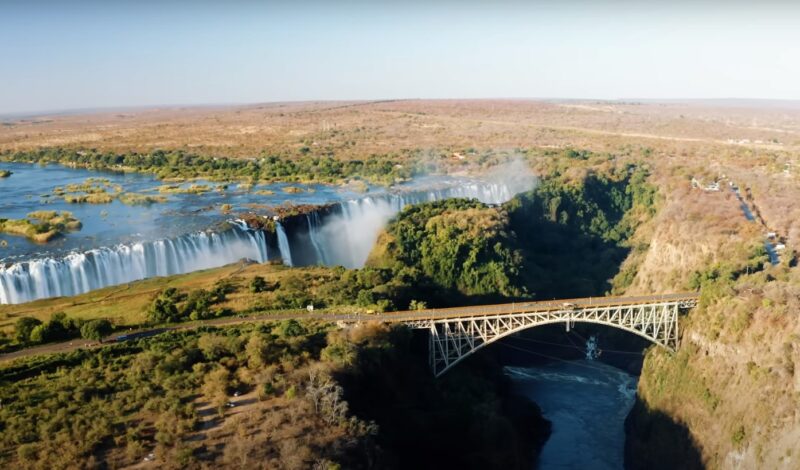
5 World Heritage Sites in Zimbabwe – What to Visit?
You can’t talk of a country with amazing world heritage sites without including Zimbabwe. A country that has built its beauty around the cycle of tourism, making it home to adventurers.
If we take a brief look around, we will Behold Victoria Falls which is a magnificent waterfall from a cliff, coming closer to the parks you will witness some unique wild animals that made Zimbabwe the soul of adventure, and stretching below the horizon is a pure lake (a home for fishery and paradise for relaxation).
If you are thinking of taking a trip for sightseeing in Zimbabwe, our list below will be essential for your magical experience.
We will discuss:
- Zimbabwe is a country with a profound heritage, deeply intertwined with its tourism industry, making it a haven for adventurers and history enthusiasts.
- The country boasts a variety of UNESCO World Heritage Sites, each offering unique insights into its history and natural beauty.
- The preservation of these sites is essential for maintaining the shared human heritage and for the benefit of future generations.
Without further ado, let us begin.
1. Great Zimbabwe National Monument
Great Zimbabwe National Monument is approximately 30 km from Masvingo and located in the Lowveld at an altitude of some 1100 m in a sparsely populated region of the Bantu/Shona people.
The property, built between 1100 and 1450 AD, extends over almost 800 ha and is divided into three groups: the Hill Ruins, the Great Enclosure, and the Valley Ruins.
The Hill Ruins, forming a huge granite mass atop a spur facing north-east/south-west, were continuously inhabited from the 11th to 15th centuries, and there are numerous layers of traces of human settlements. Rough granite rubble-stone blocks form distinct enclosures, accessed by narrow, partly covered, passageways.
This acropolis is generally considered a ‘royal city’; the west enclosure is thought to have been the residence of successive chiefs and the east enclosure, where six steatite upright posts topped with birds were found, considered to serve a ritual purpose.
The Great Enclosure, which has the form of an ellipsis, is located to the south of the hills and dates to the 14th century. It was built of cut granite blocks, laid in regular courses, and contains a series of daga-hut living quarters, a community area, and a narrow passage leading to a high conical tower.
The bricks (daga) were made from a mixture of granitic sand and clay. Huts were built within the stone enclosure walls; inside each community area other walls mark off each family’s area, generally comprising a kitchen, two living huts and a court. The Valley Ruins are a series of living ensembles scattered throughout the valley which date to the 19th century.
Each ensemble has similar characteristics: many constructions are in brick (huts, indoor flooring and benches, holders for recipients, basins, etc.) and dry stone masonry walls provide insulation for each ensemble.
Resembling later developments of the Stone Age, the building work was carried out to a high standard of craftsmanship, incorporating an impressive display of chevron and chequered wall decorations.
Scientific research has proved that Great Zimbabwe was founded in the 11th century on a site which had been sparsely inhabited in the prehistoric period, by a Bantu population of the Iron Age, the Shona. In the 14th century, it was the principal city of a major state extending over the gold-rich plateaux; its population exceeded 10,000 inhabitants.
About 1450, the capital was abandoned because the hinterland could no longer furnish food for the overpopulated city and because of deforestation. The resulting migration benefited Khami, which became the most influential city in the region, but signaled waning political power.
When in 1505 the Portuguese settled in Sofala, the region was divided between the rival powers of the kingdoms of Torwa and Mwene-Mutapa . Archaeological excavations have revealed glass beads and porcelain from China and Persia, and gold and Arab coins from Kilwa which testify to the extent of long-standing trade with the outer world.
Other evidence, including potsherds and ironware, gives a further insight to the property’s socio-economic complexity and about farming and pastoral activities. A monumental granite cross, located at a traditionally revered and sacred spiritual site, also illustrates community contact with missionaries.
2. Khami Ruins National Monument
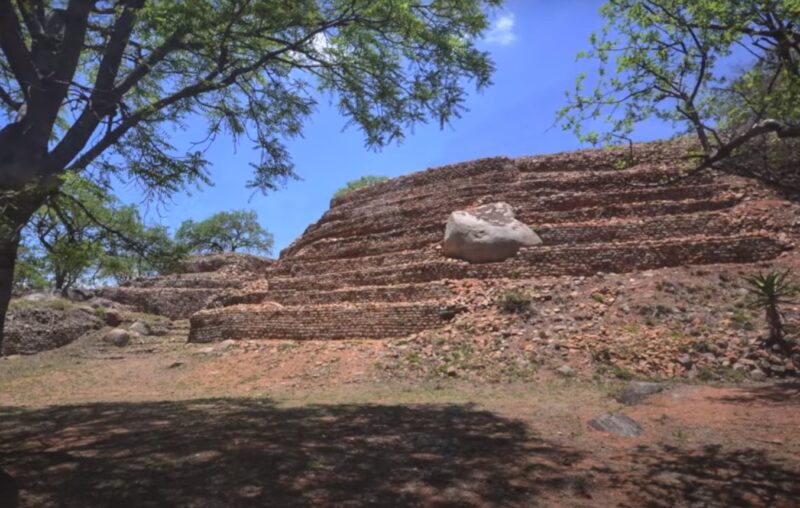
Khami Ruins National Monument is located to the west of the Khami River, 22 km from the City of Bulawayo. The property, located on a 1300 m hilltop downstream from a dam built during 1928-1929, covers an area of about 108 ha, spread over a distance of about 2 km from the Passage Ruin to the North Ruin.
The property was the capital of the Torwa dynasty, which arose from the collapse of the Great Zimbabwe Kingdom between 1450 -1650 and was abandoned during the Ndebele incursions of the 19th century. It is composed of a complex series of platforms of dry-stone walled structures, emulating a later development of Stone Age culture .
The chief’s residence (Mambo) was located towards the north on the Hill Ruin site with its adjacent cultivation terraces. The population lived in daga huts of cobwork, surrounded by a series of granite walls.
These structures display a high standard of workmanship, a great number of narrow passageways and perambulatory galleries and impressive chevron and chequered wall decorations.
Khami conforms to Great Zimbabwe in a number of archaeological and architectural aspects but it possesses certain features particular to itself and its successors such as Danangombe and Zinjanja.
Revetments or retaining walls found expression for the first time in the architectural history of the sub-region at Khami, and with it were elaborate decorations; it still has the longest decorated wall in the entire sub-region.
The architecture of the site and the archaeological artefacts provide evidence for an exceptional understanding of strong, united, early civilizations.
They also offer information on the property’s complex socio-economic, religious and spiritual significance for the local communities and for the overall chronological development of Zimbabwe tradition; initiated in Mapungubwe (South Africa), extending to Great Zimbabwe, and through the emergence of later states.
The archaeological remains are also a testament to long-distance historic trade links with the Portuguese, and the wider world, the diverse range of imported artefacts provide evidence of 15th and 17th century Spanish porcelain, Rhineland stoneware and Ming porcelain, many of which are on display in the Museum of Natural History in Bulawayo .
There is also a monumental granite cross which illustrates the contact with missionaries at a traditionally revered and sacred spiritual site. Khami is the second largest stone built monument in Zimbabwe. Its historical importance lies in its position at the watershed between the history of Great Zimbabwe and the later Zimbabwe period.
It is one of the few Zimbabwe sites that were not destroyed by treasure hunters and its undisturbed stratigraphy is scientifically important in providing a much clearer insight into the history of the country. The climate supports a natural vegetation of open woodland, dominated by Combretum and Terminalia trees.
Being close to the Kalahari Desert , the area is also vulnerable to droughts, and rainfall tends to vary considerably. The property has suffered some degradation due to variations in temperature, ground water, tourism, encroaching vegetation and applied preservation techniques.
3. Matobo Hills
The Matobo Hills some 35 km south of Bulawayo are a profusion of distinctive granite landforms, densely packed into a comparatively tight area, that rise up to form a sea of hills. Their forms have resulted from the varied composition and alignment of the granite rocks, which responded differently to millions of years of weathering.
These extraordinary granite rock formations have exerted a strong presence over the whole area – both in natural and cultural terms. People have interacted with, and been inspired by, the dramatic natural rock formations of the Matobo Hills for over many millennia.
This interaction has produced one of the most outstanding rock art collections in southern Africa; it has also fostered strong religious beliefs, which still play a major role in contemporary local society; and it demonstrates an almost uninterrupted association between man and his environment over the past 100,000 years.
The Matobo Hills have one of the highest concentrations of rock art in Southern Africa dating back at least 13,000 years. The paintings illustrate evolving artistic styles and also socio-religious beliefs. The whole bears testimony to a rich cultural tradition that has now disappeared.
The rich evidence from archaeology and from the rock paintings at Matobo provides evidence that the Matobo Hills have been occupied over a period of at least 500,000 years.
Furthermore, this evidence provides a very full picture of the lives of foraging societies in the Stone Age and the way agricultural societies eventually came to displace them in the Iron Age. The Mwari religion which is still practiced in the area, and which may date back to the Iron Age, is the most powerful oracular tradition in southern Africa.
The Matobo rocks are seen as the seat of god and of ancestral spirits. Sacred shrines within the hills are places where contact can be made with the spiritual world. The living traditions associated with the shrines represent one of the most powerful intangible traditions in southern Africa and one that could be said to be of universal significance.
This is a community response to a landscape rather than individual ones. The natural qualities of Matobo, in terms of the power of the rocks and of the produce from the surrounding natural environment, thus have strong cultural associations.
4. Mana Pools National Park, Sapi and Chewore Safari Areas
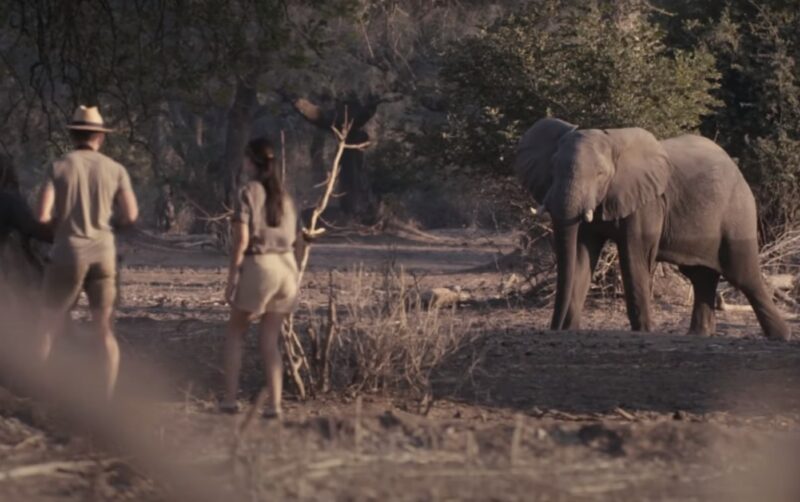
The Mana Pools National Park, Sapi and Chewore Safari Areas World Heritage Site is an area of dramatic landscape and ecological processes.
Physically protected by the Zambezi River to the north and the steep escarpment (which rises to over 1,000 m from the valley floor) to the south, this substantial property of 676,600 ha provides shelter for immense congregations of Africa’s large mammal populations which concentrate in its flood plains.
The Mana Pools are former channels of the Zambezi River , and ongoing geological processes present a good example of erosion and deposition by a large seasonal river including a clear pattern of plant succession on its alluvial deposits.
While black rhino has disappeared since the property’s inscription, huge herds of elephant and buffalo, followed by zebra, waterbuck and many other antelope species and their associated predators including lion and hyena migrate to the area each year during the dry winter months.
The river is also famous for its sizeable numbers of hippopotamus and Nile crocodile. Resident and migratory birdlife, with over 450 species recorded, is also abundant. Controlled hunting on quota is permitted in the safari areas.
5. Mosi-oa-Tunya / Victoria Falls
The Mosi-oa-Tunya/Victoria Falls is the world’s greatest sheet of falling water and significant worldwide for its exceptional geological and geomorphological features and active land formation processes with outstanding beauty attributed to the falls i.e. the spray, mist and rainbows.
This transboundary property extends over 6860 ha and comprises 3779 ha of the Mosi-oa-Tunya National Park (Zambia), 2340 ha of Victoria Falls National Park (Zimbabwe), 741 ha of the riverine strip of Zambezi National Park (Zimbabwe).
A riverine strip of the Zambezi National Park extending 9 km west along the right bank of the Zambezi and islands in the river are all within the Park as far as Palm and Kandahar Islands, with the Victoria Falls being one of the major attractions.
The waterfall stands at an altitude of about 915 m above mean sea level (a.m.s.l.) and spans to about 1708 m wide with an average depth of 100 m and the deepest point being 108 m.
Sprays from this giant waterfall can be seen from a distance of 30 km from the Lusaka road, Zambia and 50 km from Bulawayo road, Zimbabwe. Basalts have been cut by a river system producing a series of eight spectacular gorges that serve as breeding sites for four species of endangered birds.
The basalts of the Victoria Falls World Heritage property are layered unlike those of the Giants Causeway World Heritage site which are vertical and columnar.
How many sites are on the World Heritage List?
There are 1,199 sites listed on the UNESCO World Heritage List.
What are 2 sacred places in Zimbabwe?
Two sacred places in Zimbabwe are the Matobo Hills, known for their rock art and spiritual significance, and the Mabweadziva/Chinhoyi Caves, revered for their historical and cultural importance.
What are the 5 cultures in Zimbabwe?
Zimbabwe is home to several cultures, with the five most prominent being the Shona, Ndebele, Tonga, Chewa, and Venda peoples, each with its unique traditions, languages, and customs.
Why are heritage sites important in Zimbabwe?
Heritage sites in Zimbabwe are important as they preserve and showcase the country’s rich history and cultural diversity, contribute to national identity and pride, and are crucial for education and tourism.
The Bottom Line
Zimbabwe’s World Heritage Sites offer a captivating glimpse into the country’s rich history, culture, and natural beauty. From the awe-inspiring Victoria Falls to the ancient ruins of Great Zimbabwe, each site tells a unique story of the land and its people.
The Matobo Hills and Mana Pools National Park showcase Zimbabwe’s diverse and vibrant ecosystems, while the Khami Ruins reveal the complexity of past civilizations. These sites are not just tourist destinations; they are treasured reminders of our shared human heritage and the importance of preserving such wonders for future generations.

Encyclopedia of Global Archaeology pp 11434–11442 Cite as
Zimbabwe’s World Heritage Sites
- Simon Makuvaza 2 &
- Violah Makuvaza 3
- Reference work entry
- First Online: 26 October 2020
Introduction
Zimbabwe has five World Heritage sites, which are Great Zimbabwe, Khami, Matobo Hills, Victoria Falls, and Mana Pools. The Nyanga Terraces are on the Tentative List (Fig. 1 ). Great Zimbabwe, Khami, and the Nyanga Terraces are managed by the National Museums and Monuments of Zimbabwe (NMMZ), while the Victoria Falls and Mana Pools are run by the Zimbabwe Parks and Wildlife Management Authority (ZPWMA). The Matobo Hills are managed by both the NMMZ and the ZPWMA. These sites have a long history of research, conservation, and development well before they were accorded World Heritage status.
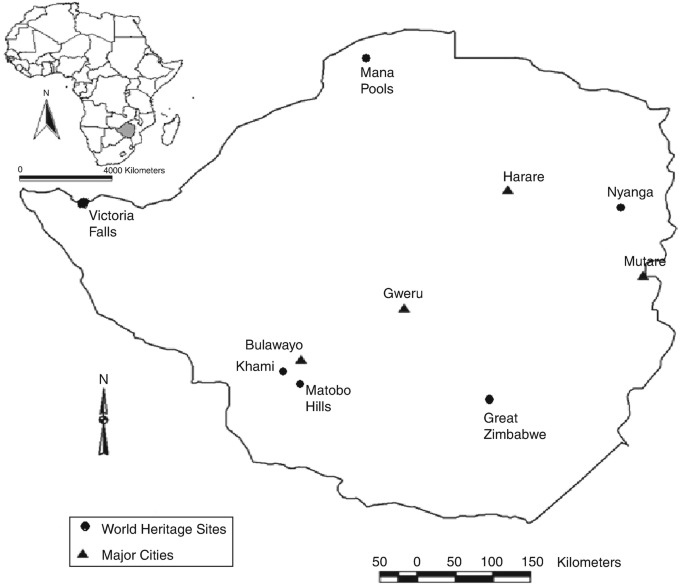
Map showing the location of world heritage sites in Zimbabwe
This is a preview of subscription content, log in via an institution .
Buying options
- Available as PDF
- Read on any device
- Instant download
- Own it forever
- Available as EPUB and PDF
- Durable hardcover edition
- Dispatched in 3 to 5 business days
- Free shipping worldwide - see info
Tax calculation will be finalised at checkout
Purchases are for personal use only
Caton-Thompson, G. 1931. The Zimbabwe culture: Ruins and reactions . Oxford: Clarendon Press.
Google Scholar
Du Toit, R.F. 1982. A preliminary assessment of the environmental implications of the proposed Mupata and Batoka hydro-electric schemes: Zambezi River, Zimbabwe . Harare: Zimbabwe Natural Resources Board.
Garlake, P. 1982. Great Zimbabwe described and explained . Harare: Zimbabwe Publishing House.
Grobler, J.H. 1974. Aspects of the biology, population ecology, and behaviour of the Sable Hippotragus niger niger (Harris, 1838) in the Rhodes Matopos National Park, Rhodesia . Salisbury: National Museums and Monuments of Rhodesia.
Huffman, T.N., and J.C. Vogel. 1991. The chronology of great Zimbabwe. South African Archaeological Bulletin 46: 61–70.
Article Google Scholar
Joint Technical Committee. 2007. Draft joint Victoria Falls/Mosi-oa-Tunya site management plan. The National Museums and Monuments of Zimbabwe . Harare: Causeway.
Kritzinger, A. 2008. Gold not grain-pre-colonial harvest in the terraced hills of Zimbabwe’s eastern highlands. Cookeia Journal 13: 1–44.
Mahachi, G., and W. Ndoro. 1997. The socio-political context of southern African Iron age studies with special reference to great Zimbabwe. In Caves, monuments and texts: Zimbabwean archaeology today . Studies in African archaeology, Vol. 14, ed. G. Pwiti, 89–104. Uppsala: Department of Archaeology & Ancient History, Uppsala University.
Makuvaza, S. 2010. Managing the Victoria Falls world heritage site; problems, stakeholders views and possible solutions. Unpublished Msc. dissertation. Dublin: School of Biology & Environmental Science, University College Dublin.
McGregor, J. 2003. The Victoria Falls 1900–1940: Landscape tourism and the geographical imagination. Journal of Southern African Studies 29: 717–737.
Ndoro, W. 1994. The preservation and presentation of Great Zimbabwe. Antiquity 260: 616–629.
Ndoro, W. 2001. Your monument our shrine: The preservation of Great Zimbabwe . Studies in African archaeology, Vol. 19. Uppsala: Department of Archaeology & Ancient History, Uppsala University.
Phillipson, D.W., ed. 1975. Mosi-oa-Tunya: A handbook to the Victoria Falls region . Rhodesia: Longman.
Pikirayi, I. 2001. The Zimbabwe culture: Origins and decline of southern Zambezian states . Lanham: AltaMira Press.
Pwiti, G. 1997. Taking African cultural heritage management into the twenty-first century: Zimbabwe’s master plan for cultural heritage management. African Archaeological Review 14: 81–83.
Randall-MacIver, D. 1906. Medieval Rhodesia . London: McMillan.
Ranger, T. 1999. Voices from the rocks: Nature culture and history in the Matopos Hills of Zimbabwe . Harare: Baobab.
Robinson, K.R. 1959. Khami ruins . Cambridge: Cambridge University Press.
Soper, R. 2006. The terrace builders of Nyanga . Harare: Weaver Press.
Walker, N. 1996. The painted hills: Rock art of the Matopos . Gweru: Mambo Press.
Willems, J.H.W., and D. Comer. 2011. Africa, archaeology, and world heritage. Conservation of Archaeological Sites 13: 160–173.
Download references
Author information
Authors and affiliations.
Faculty of the Built Environment, National University of Science and Technology, Bulawayo, Zimbabwe
Simon Makuvaza
Natural History Museum, Bulawayo, Zimbabwe
Violah Makuvaza
You can also search for this author in PubMed Google Scholar
Corresponding author
Correspondence to Simon Makuvaza .
Editor information
Editors and affiliations.
College of Humanities, Arts and Social Sciences, Flinders University, Adelaide, SA, Australia
Claire Smith
Rights and permissions
Reprints and permissions
Copyright information
© 2020 Springer Nature Switzerland AG
About this entry
Cite this entry.
Makuvaza, S., Makuvaza, V. (2020). Zimbabwe’s World Heritage Sites. In: Smith, C. (eds) Encyclopedia of Global Archaeology. Springer, Cham. https://doi.org/10.1007/978-3-030-30018-0_1963
Download citation
DOI : https://doi.org/10.1007/978-3-030-30018-0_1963
Published : 26 October 2020
Publisher Name : Springer, Cham
Print ISBN : 978-3-030-30016-6
Online ISBN : 978-3-030-30018-0
eBook Packages : History Reference Module Humanities and Social Sciences Reference Module Humanities
Share this entry
Anyone you share the following link with will be able to read this content:
Sorry, a shareable link is not currently available for this article.
Provided by the Springer Nature SharedIt content-sharing initiative
- Publish with us
Policies and ethics
- Find a journal
- Track your research
Insight Tribune
Ignite Your Mind and Illuminate Your World
Discovering the Unmatched Benefits of Cultural Heritage Sites in Zimbabwe

Zimbabwe is a country steeped in rich cultural heritage. From the Great Zimbabwe ruins to the Matobo Hills, Zimbabwe’s cultural heritage sites are a testament to the country’s history and tradition. These sites not only serve as significant tourist attractions but also hold substantial economic and societal benefits for Zimbabwe.
Preserving Zimbabwe’s Cultural Heritage Sites
Preserving Zimbabwe’s cultural heritage sites is a critical aspect of tourism development in the country. These sites offer unique historical, architectural, and cultural significance that cannot be found anywhere else in the world. Therefore, Zimbabwe needs to invest adequate resources and strategies in preserving these sites to enjoy the full benefits they offer.
One of the most notable benefits of preserving these sites is their potential to attract tourists. Cultural heritage tourism generates significant revenue for local communities, contributing to the country’s economic growth. Additionally, preservation of these sites promotes prestigious national and international recognition, increasing Zimbabwe’s attractiveness as a travel destination.
The Economic and Societal Impact of Cultural Heritage Sites
Zimbabwe’s cultural heritage sites are not only significant for tourism but also for social and economic reasons. These sites form a valuable part of Zimbabwe’s cultural identity, reflecting the country’s diverse heritage. Therefore, educating young generations on their cultural heritage promotes national identity and enhances cultural diversity.
Moreover, these sites promote local economic development, particularly in rural communities. They provide employment opportunities that range from tour guides, cultural ambassadors, to artisans. Thus, cultural heritage sites play a significant role in poverty reduction and community development.
In conclusion, Zimbabwe’s cultural heritage sites are an unmatched treasure-trove for tourism, economic development, and societal growth. They offer a glimpse into the country’s cultural history and a proud identity. Preserving these sites is crucial in promoting economic growth, national unity, and community development. Ultimately, Zimbabwe’s cultural heritage sites must be viewed as valuable commodities that require consistent investment and protection to preserve their uniqueness and benefits for future generations.
Leave a Reply Cancel reply
Your email address will not be published. Required fields are marked *
Save my name, email, and website in this browser for the next time I comment.
Related Posts

- Explorations
Why Smart Goal Setting is Important for Achieving Personal Goals
- Aiden Scholar
- June 12, 2023
introduction setting goals is essential for personal growth and development. however, just setting goals is…

Why Personal Responsibility is the Key to a Fulfilling Life: A Conclusion
- June 11, 2023
the importance of personal responsibility

The Importance of Removing Impacted Wisdom Teeth
- June 9, 2023
wisdom teeth, or third molars, are the last teeth to erupt in the mouth, typically…

5 Benefits of Choosing Back to Health Physical Therapy for Your Rehabilitation Needs
introduction

RJ Travel LLC » Travel Agency & Tour Operator
Re-writing the concept of tourism and taking you on adventure tours to Iraq, Morocco, Afghanistan, Yemen, Persia, Lebanon, Saudi, Libya, Uzbekistan.
- Adventure tours
- UNESCO sites
Zimbabwe UNESCO World Heritage Sites
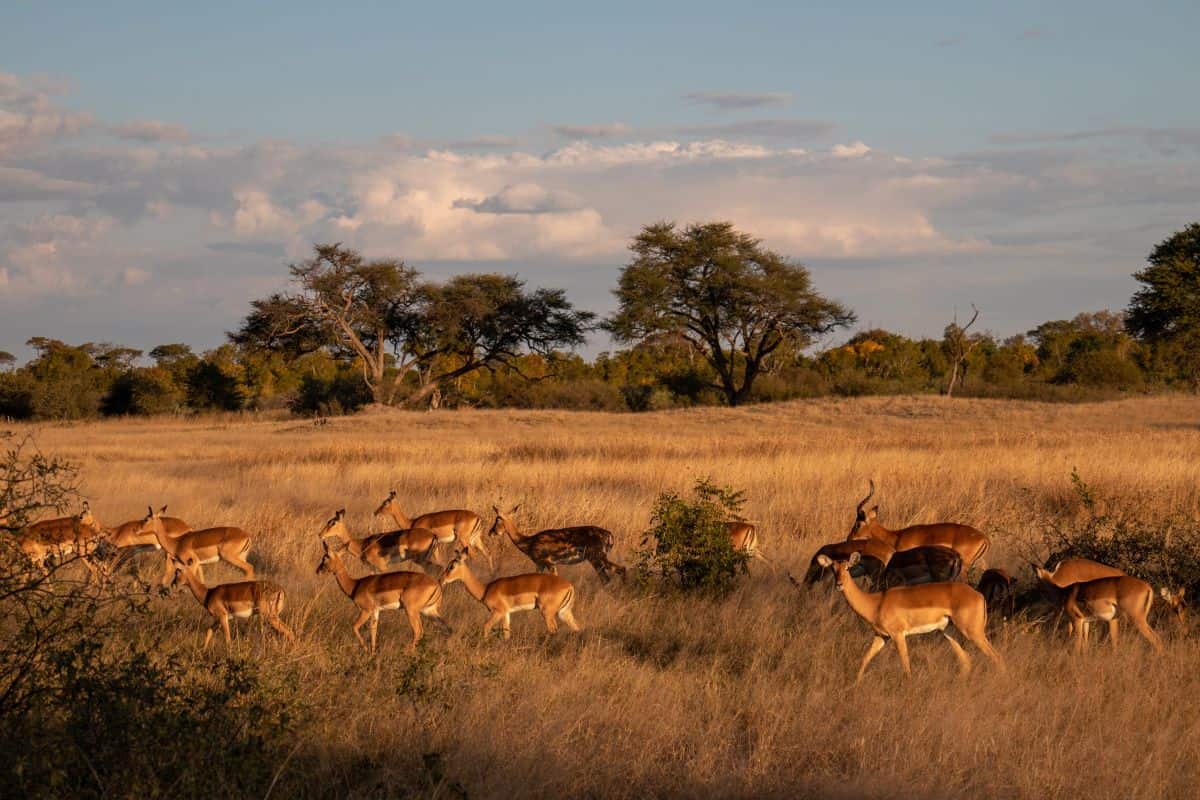
Table of Contents
The UNESCO Sites in Zimbabwe have resulted from recognizing 5 cultural and natural landmarks as UNESCO World Heritage Sites in Zimbabwe and 2 locations on the Zimbabwe UNESCO tentative list. These tourist sites in Zimbabwe are acknowledged for their unique and valuable cultural, natural, artistic, and historical significance and are preserved for future generations to enjoy.
In addition to these 5 sites in the Zimbabwe UNESCO list , many other places to travel to Zimbabwe are being considered for UNESCO recognition. These sites, listed on the tentative list, showcase the country’s rich cultural heritage and are waiting for approval to join the prestigious and famous World Heritage Sites list.
To help visitors discover these remarkable Zimbabwe tourist attractions, we have assembled an interactive map of the UNESCO sites in Zimbabwe .
Zimbabwe UNESCO Map
Click markers to show information and photo.

UNESCO World Heritage Sites in Zimbabwe
There are 5 UNESCO World Heritage Sites in Zimbabwe. All of these three sites are listed under the Cultural category.
Great Zimbabwe National Monument
Khami ruins national monument, matobo hills, mana pools national park, sapi, and chewore safari areas, mosi-oa-tunya / victoria falls.
UNESCO World Heritage Sites in Zimbabwe are protected locations for their cultural and natural importance.
Great Zimbabwe National Monument is a UNESCO World Heritage Site in southeastern Zimbabwe. It showcases the remains of an ancient city that flourished between the 11th and 15th centuries. The monument is renowned for its impressive stone structures, including massive walls, towers, and the iconic Great Enclosure. These architectural marvels highlight the advanced engineering and craftsmanship of the Zimbabwean civilization. The site is a testament to the region’s rich history and cultural heritage and a significant archaeological site, attracting visitors from around the world who come to explore and appreciate its unique beauty and historical significance.
Khami Ruins National Monument is a UNESCO World Heritage Site located in Zimbabwe. The monument showcases the remnants of the ancient Khami city, the capital of the Kingdom of Butua during the 15th and 16th centuries. The ruins feature impressive stone structures, including the Great Enclosure and the Western Enclosure, which reflect the unique architectural style of the Khami civilization. These ruins offer valuable insights into the region’s history, culture, and social organization, making Khami Ruins National Monument a significant archaeological site of great historical importance.
Matobo Hills is a renowned UNESCO World Heritage Site situated in Zimbabwe. It is a captivating landscape encompassing a vast granite hills and balancing rock formations. These hills hold great cultural and spiritual significance to the local communities and are adorned with ancient rock art that tells stories of the past. The area is home to diverse wildlife, including rhinos, leopards, and numerous bird species, making it a haven for nature enthusiasts. Matobo Hills offers a unique blend of natural beauty, rich history, and cultural heritage, making it a must-visit destination for travelers seeking a truly immersive experience.
Mana Pools National Park, along with the Sapi and Chewore Safari Areas, is a remarkable UNESCO World Heritage Site in Zimbabwe. This pristine wilderness is renowned for its diverse ecosystem and stunning natural beauty. The park is named after the four main pools formed by the meandering Zambezi River, which attract abundant wildlife, including elephants, buffalo, lions, and numerous bird species. Mana Pools National Park is known for its unique walking safaris, allowing visitors to experience an intimate connection with nature and witness incredible wildlife encounters up close. The park’s stunning landscapes, rich biodiversity, and extraordinary conservation efforts make it an exceptional destination for nature enthusiasts and safari adventurers.
Mosi-oa-Tunya / Victoria Falls, located on the border between Zambia and Zimbabwe, is a UNESCO World Heritage Site renowned for its awe-inspiring natural beauty. The site is home to the iconic Victoria Falls, one of the world’s largest waterfalls, known locally as Mosi-oa-Tunya, meaning “The Smoke that Thunders.” With its impressive curtain of cascading water and the deafening sound it produces, Victoria Falls is a true marvel of nature. The site also boasts lush rainforests, diverse wildlife, and a rich cultural heritage. Visitors can witness breathtaking panoramic views, engage in thrilling activities like bungee jumping and white-water rafting, and immerse themselves in the unique atmosphere of this magnificent natural wonder.
Zimbabwe UNESCO tentative list
- Ziwa National Monument
- Naletale Cluster of Dzimbabwes
Tours in Zimbabwe
Our choices of tours in Zimbabwe are divided into thematic features such as Victoria Falls, Lake Kariba, and Hwange National Park Experience.
Altmetric Score
0 Followers
Article rating
3.09 | 64 reviewers

Tourists’ Activities and their Impacts on Chinhoyi Caves Heritage Site, Zimbabwe
Forbes Kabote 1 , Chelsea Tariro Gweshe 1 , Chenjerai Muchenje 1
Author(s) details
- Chinhoyi University of Technology, Zimbabwe
The growing interest in heritage tourism since the 1990s has increased tourist traffic and its related activities at heritage sites. Detrimental effects have been noted at some heritage sites prompting the need to protect such sites for tourism purposes. However; there are minimal studies on the impacts of tourists’ activities at heritage sites especially in developing countries. In Zimbabwe, Chinhoyi caves are one site that holds heritage value and tourists frequent it to partake in heritage tourism. This research is an empirical study which explores the impacts of tourist activities on heritage sites using a case study of the Chinhoyi caves. In-depth interviews were carried out to collect data from fifteen tourists and five employees of the Zimbabwe National Parks Authority stationed at the Chinhoyi Caves. With the aid of ATLAS.ti 8, the responses were extracted, presented and analysed. The main findings were that there are a number of both consumptive and non-consumptive tourist activities taking place at Chinhoyi Caves. These are having both positive impacts and negative impacts that need attention if the value of the heritage site is to develop sustainably for the benefit of future generations. These are new findings about tourism and its impacts on these heritage sites in Zimbabwe making them valuable for the sustainable development of such sites in Zimbabwe and beyond that might be facing similar challenges.
Forbes Kabote 1 , Tariro Chelsea Gweshe 1 and Chenjerai Muchenje 1 1 Chinhoyi University of Technology, Chinhoyi, Zimbabwe
Keywords : Sustainable Tourism, Heritage Tourism, Tourist Activities.
1. Introduction
Heritage sites are key tourism attractions that are enjoying a growing visitation rate (Pederson, 2002). Increasing visitation also demands an increasing obligation to protect as most of the heritage sites are sensitive and are easily destroyed through tourism activities. Despite the need to promote tourism at heritage sites, the UNESCO Convention argues that protection must be prioritised over promotion hence the listing of heritage sites in danger. The question is, whilst the instruments to protect heritage sites are in place at the international level where Zimbabwe is a signatory, to what extent are the local heritage sites being protected from human activities as tourist numbers to these sites continue to increase?
Tourism generates revenue and draws world attention to the importance of world heritage sites and how they may be preserved (Drost, 1996). Since the 1970s, tourists’ taste for heritage tourism has been increasing (Ashworth & Tunbridge, 2000) with detrimental effects on the heritage sites. With the sustainable development concept gaining popularity in managing destinations, it has become necessary to re-examine tourism development particularly the environmental and cultural integrity of heritage sites (Drost, 1996). According to Alberts and Hazen (2019), across the globe, historically significant sites are in perilous situations and in order to help prevent the distraction of such sites, the United Nations Educational, Scientific and Cultural Organisation (UNESCO) has designed an international agreement to identify and protect natural and cultural sites of outstanding cultural value.
The deterioration of heritage sites due to tourist activities is a global problem. Examples include Venice lagoon (Harrison & Hitchcock, 2005), and Donostia-San Sebastian city in Spain (Garcia-Hernandez, Calle-Vaquero & Yubero, 2017). Afghanistan’s Archaeological remains of the Bamiyan Valley and Minaret and Jam, Yemen’s historic town of Zabi, Jerusalem, Ecuador’s Galapagos Islands and Pakistanian Fort and Shalamar gardens (UNESCO, 2008), Lamu in Kenya and the Zanzibar Islands (Okech, 2010), and Great Zimbabwe (Chipungu et al., 2016). But what exactly do tourists do at these attractions and/or destinations that have made it essential for UNESCO to promulgate laws to conserve heritage sites?
1.1. Tourist Activities
There are various views of tourist activities. Other scholars view them from a financial perspective where activities are tourism packages, events and offerings that a destination offers to its visitors for entertainment usually at a fee (Ciolac, Csosz & Merce, 2011; Rahim et al., 2010; Alejziak, 2013; Hughes, 2011). Examples include cottages rentals, going to a zoo or national park, use of local transport, and trying out local cuisine among many others (Ciolac et al., 2011; Marrocu et al., 2015).
Other scholars such as Biernat (2011) go beyond the financial meaning by defining activities as the total acts and actions of people associated with participation in tourism. These range from actual activities that the tourist visits a destination to do, to other secondary activities that accompany certain activities such as taking pictures, buying artefacts and collecting memorabilia, crime, vandalism, and pollution amongst others. In this study tourists’ activities are defined by Biernat (2011) that is the total acts and actions of people associated with participation in tourism.
The first set of activities is identified broadly as vandalism where there is wilful or malicious damage to property, such as equipment or buildings (Scot et al., 2007). Types of vandalism include graffiti, trash dumping, light smashing, removing/bending signage or ornamentation, breaking windows, or other defacing of property (Ceccato & Haining, 2005). Vandalism can also cover such activities as carving initials into public park trees, and public benches, writing names on store windows with a marker, breaking a building’s windows, and knocking over grave markers (Albrecht, 2016). While vandalism involves damaging property, it is not always the same as the crime of “destruction of property” or “damage to property.” Cohen (1973) distinguished between vindictive vandalism (a form of vengeance), play vandalism (breaking windows, graffiti), tactical vandalism (sabotage in the workplace) and malicious vandalism (out of boredom or frustration).
The second set of common tourist activities is photography which endorses good memories about travel destinations and reflects travelling experiences through pictures (Berger et al., 2007). Taking a photograph becomes a part of tourism activities which are rooted deeply in tourists’ experiences (Cederholm, 2004). Most modern tourists take photographs of their destinations and share both photographs and their travel experiences with others usually through social media platforms like Facebook, Instagram, WhatsApp etc. (Groves & Timothy, 2001). According to Ateljevic (2013), photography has an ambivalent relationship with tourism.
Many destinations visited have a strong identity and sense of place, which is embodied in the history, physical form and social activity, photography selectively extracts from this multifaceted expression (Grooves & Timothy, 2001). Photography is one of the most common things tourists do when they visit a destination, in order to keep memories of the place (Berger, 2007). According to Cederholm (2004), taking pictures of destinations is a more sustainable way of gathering attributes to remind tourists of their visit to a particular destination as opposed to collecting physical elements and subtracting them from a destination’s aesthetics. Garrod (2008), goes on to mention that despite photography being a sustainable way of gathering memories at heritage sites, the act of taking pictures may be found to be unethical at some cultural heritage sites. Hence in this light photography may be a common tourist activity at other destinations but it may actually be a taboo culturally at some heritage sites.
Thirdly there is pollution as a tourist activity (Brevik & Burgess, 2013). In regions with elevated levels of tourist operations and attractive natural attractions, waste disposal is a severe issue and inappropriate disposal can be a significant natural environment despoiler such as waterways, picturesque regions and roadsides. For instance, it is estimated that cruise ships in the Caribbean generate more than 70,000 tonnes of waste every year. Massive waste can degrade the physical appearance of the water and shoreline and cause the death of marine animals.
According to Brevik and Burgess (2013), trekking visitors produce a lot of waste in hill regions. Leave their garbage, oxygen cylinders and even camping facilities on the trip. Such practices degrade the environment in distant regions with few waste collection or disposal installations, with all the detritus typical of the developed world. Brevik and Burgess (2013) also mention that some trails in the Peruvian Andes and in Nepal frequently visited by tourists have been nicknamed “Coca-Cola trail” and “Toilet paper trail” because of the amount of coca cola empty canes and toilet paper left behind by tourists along these trails. Tourists visit attractions mostly with the intention of seeing and experiencing the atmosphere but other activities like littering and other land polluting practices may arise and these also qualify to be named tourist activities.
Fourthly there is sightseeing where tourists travel to experience and appreciate the religion, culture, historical resources, nature and ecological resources along the road (Lee, 2011). It is a tourist activity associated with just seeing things within a destination area. Sightseeing is a non-consumptive tourist activity which normally comes hand in glove with photography and trail walking (Chang, 2009). According to Chen et al. (2014), sightseeing is an ecological tourist activity which means that the tourists can integrate with nature and have a visual perception of the environment by walking or other simple tools.
Sightseeing is considered an environmentally friendly tourist activity because there is limited direct interaction with the physical elements of a tourist sight, just seeing and taking pictures. According to MacCannell (2011), sightseeing is one of the tourist activities that speak to sustainability. The fact that the natural state of a destination is being maintained and the limited interaction with humans means that it is going to last longer hence future generations will enjoy seeing the same sight the same way previous generations saw it.
The other common tourist activity identified is the collection of historic artefacts especially at heritage sites. According to the Historic Artefact Collections Management Policy (2014), historic artefacts refer to portable objects that have been assessed to be of historic significance through their cultural and heritage value at a site or community that are not either archives or structural features examples of these would include crockery, furniture and paintings. Individuals participate in artefact collection for several reasons. Some as a hobby to enrich a personal collection and some do it for business, so they can sell the findings to those that perceive their values (Dumas et al., 2015).
According to McKinnon (2015), there are also cultural tourism divers who visit places like Chuuk Lagoon in the Federated States of Micronesia to see the remaining submerged aircraft and shipwrecks from the 2 nd World War. However, some tourists keen on having souvenirs try to loot from the artefacts. According to McKinnon (2015), this type of tourism comes with human activities such as vandalism, looting or moving of artefacts, diving, snorkelling, hook and line fishing and spearfishing.
2. Statement of the Problem
Human activities are damaging world heritage sites and threatening sustainable tourism development (Chipungu et al., 2016). Globally, research has been carried out on the impacts of tourist activities on heritage sites and, out of the listed UNESCO World Heritage sites, 54 sites have been enlisted to be in danger making up 5% of the total listed (UNESCO, 2017). If this problem persists, heritage sites will lose tourism value and hence their ability to contribute to the national income. Therefore this study seeks to explore the impacts of tourist activities at heritage sites.
3. Research Objectives
To establish the various tourist activities at heritage sites;
- To assess the impacts of tourist activities on heritage sites;
- To suggest strategies that may be adopted to minimise the negative impacts of tourist activities at heritage sites.
4. Research Methods
An interview guide was designed and administered to fifteen (15) randomly and conveniently selected tourists at the study site who met during the five (5) day data collection period. The same interview guide was administered to five (5) members of staff that work at the heritage site. The staff members were purposefully selected with guides making the majority as they are in constant touch with the tourists. Each interview lasted between 45 minutes and 75 minutes. The interviews were tape-recorded for later transcription verbatim.
The interviews were complemented by unplanned observation where the researchers took evidence of tourists’ activities at the study site. The observations were recorded in the form of notes and pictures for later use.
The twenty interviews were transcribed verbatim and uploaded into ATLAS.ti 8. The pictures were also uploaded into ATLAS.ti 8. Data was coded in ATLAS to come up with themes that address the objectives of the study.
5. Results and Discussion
This study sought to explore the impacts of tourist activities at heritage sites in Zimbabwe. The phrase tourist activity is used herein to refer to the total acts and actions of people associated with tourism participation. In order to achieve this main objective three specific objectives were developed. These are i) to establish the various tourist activities at heritage sites; ii) to assess the impacts of tourist activities on heritage sites; and iii) to suggest strategies that may be adopted to minimise the negative impacts of tourist activities at heritage sites.
5.1. Tourist activities at Heritage Site
A number of activities were carried out by tourists at heritage sites in Zimbabwe. These were summed into four themes; that is consumptive land-based activities, non-consumptive land-based activities, consumptive water-based activities and non-consumptive water-based activities.
5.1.1. Consumptive land-based activities
Tourists who visited Chinhoyi Caves engaged in a number of activities that are deemed consumptive in nature as they had the ability to alter the physical environment of the tourist destination and its overall outlook. The following five statements from research participants sum up the nature of the consumptive activities:
I saw people scribbling their names, dates and so on, on rocks, stairs, tree trunks and aloe vera leaves as mementos. Someone was smoking and they dumped their cigarette stub on the ground. Some visitors paint colours on rocks and tie pieces of cloth and leave behind clay pots for rituals . Some people destroy vegetation when they drive on undesignated paths and use twigs to start fires for braai. Some tourists collect rocks, soil and water as specimens for research and as souvenirs.
These are activities that tourists engage in on land that involves harvesting and/or removal of something that alters the original state of the study site. From these activities, some can be perceived as artistic in nature. Art in its broadest sense is a form of communication, it means what the artist wants it to mean, and this meaning is shaped by the materials, techniques, and forms it makes use of, as well as the ideas and feelings it creates in its viewers, it is also an act of expressing feelings, thoughts, and observations (Hauser, 2012). The most common forms of art being done by tourists at Chinhoyi Caves are graffiti, painting and drawing.
According to Bates (2014), graffiti comes from the Italian word graffiare , which means ‘to scratch on a surface.’ It can be considered as a form of art as indicated by Sequera (2016). Scratching on surfaces is a very common activity at the Chinhoyi caves as revealed by both interviews and observation. Research participants indicated that they either were the ones that participated in graffiti or they saw others doing it or they noticed it on the surface on which it was displayed.
The following picture collage shows evidence of graffiti on a tree trunk and aloe vera plant at the study site.

Drawing is a form of visual art in which a person uses various drawing instruments to mark paper or another two-dimensional medium (Fava, 2011). Drawings can be produced using a wide variety of drawing instruments, including pen and ink, charcoal, chalk, pastels, metalpoint, silverpoint, graphite point, coloured crayons, as well as graver, burin or etching needles for incised types of drawing (Fava, 2011). Drawing is also another form of art done by tourists at the Chinhoyi caves
According to Hauser (2012), painting is the action or skill of using paint, either in a picture or as decoration. Painting can be done using coloured paint or pastels. Painting is a form of art where the artist tries to communicate through art and express his feelings. The researcher managed to gather that painting is also one of the activities done by tourists at the Chinhoyi caves although not very prominent. The activity is not very common due to the requirement of apparatus like paint which under normal circumstances are not permitted to enter the premises. However, some Sangomas are permitted to enter the study site with their pots and apparatus for rituals and are granted access to the caves. It is in such cases that paintings and other forms of drawings are made on the surface as part of cultural traditions or rituals.
The painting activity is not very common but it is significant enough to mention because it translates into the traditional significance of the study site. The research participants highlighted that the rituals are done in an effort to appease the ancestral spirits that reside in the Chinhoyi caves. The researcher discovered that the traditional stories and paintings associated with traditional culture were of interest to the tourists. Hence this art seemed to be adding to the experience at the Chinhoyi Caves as it captivated the tourists.
Bright and Porter (2004) posit that consumptive tourist activities require management as there is always a risk of depleting the resource, harassment, associated littering and pollution. However, according to Sequera (2016) acts such as graffiti, painting and drawing may actually interpret how individuals are keen on adding character to a place therefore tourists may draw on surfaces to add to what others will see when they come. Whether or not this has a negative or positive impact might not bother them and all that matters is leaving a mark. These findings are consistent with literature that argues that after visiting a destination tourists always want to leave a mark as a memento (Branscome, 2011).
From the research participants’ views, it is evident that there was also wilful degradation of natural resources through depletion of resources such as air, water and soil; the destruction of ecosystems; habitat destruction; the extinction of wildlife; and pollution at the Chinhoyi caves. The existence of these activities at the study site supports existing literature. For instance, Burke and Long (2015) stated that some individuals may just kick things like dustbins in parks for no reason and they classified it as an act of vandalism.
5.1.2. Non-consumptive land-based activities
Tourists to Chinhoyi Caves also engaged in a number of activities that are deemed non-consumptive in nature. These activities take nothing but memories from the site thus they are not detrimental to the site as they leave it as was when they visited it. The following statements from research participants sum up the nature of non-consumptive activities at the study site:
“I came to see the caves and the sleeping pool then I took pictures” “I came to observe what people were doing” “Some people come to see the lions and took pictures of them” “I came to admire nature” “Some tourists have sex in the dark caves corners” “I saw some people taking pictures of themselves kissing”
The non-consumptive land-based activities can be classified as either viewing or expression of affection. Viewing involves the opportunity to see something for example art of scenery (Hughes, 2011). According to Lee (2011), viewing is the same as sightseeing where people travel in order to experience and appreciate the religion, culture, historical resources, nature and ecological resources. At the Chinhoyi caves, tourists wanted to see the lions, sleeping pool, caves and nature. Sightseeing also leads to other secondary tourist activities such as photography because tourists want to capture the moment and carry photographs as mementos. Sightseeing and photography seem to complement each other. Visitors that participated in sightseeing made it a point to mention that they took pictures of the area and pictures of themselves. Such a relationship between the two activities goes on to support the previously mentioned concept of tourist activities birthing secondary activities and this is an example of sightseeing giving rise to photography (Biernat, 2011).
Apart from viewing, there is an expression of affection as a non-consumptive land activity at Chinhoyi caves. Karandashez (2019) posits that the expression of affection involves showing a feeling of liking and caring for someone or something. The expression can be expressed physically for example people holding hands, hugging, leaning into each other, kissing, and engaging in sexual intercourse amongst other expressions.
Expression of affection is not a typical tourist activity that one would expect at a heritage site and it may be difficult to understand the motive behind the action especially where no one admitted that they expressed affection. However; one participant who was an employee at the study site explained that people probably choose to have sex in the dark caves because it has a lot of hidden and dark corners. This act may therefore be perceived to be a product of adventure and the desire to explore the unknown world which is a common trait among tourists (Kuada, 2006; Moseley, Sturgis, & Wheeler, 2007).
5.1.3. Consumptive water-based tourist activities
Findings indicated that tourists took part in the following water-based activities that can be classified as consumptive in nature: catching fish, collecting pebbles in the sleeping pool, throwing stones into the sleeping pool and collecting water samples. The researchers managed to gather that most of these water-based tourist activities that were mentioned were prohibited. One research participant actually said:
“Some people jump over the fence just so they can catch fish from the sleeping pool or take pebbles from the pool”
The fact that individuals have to trespass in order to catch the fish and collect the water or pebbles indicates the unlawfulness of the act. Such acts communicate the need for more control mechanisms because evidently, physical barriers are not communicating the message they are supposed to communicate effectively. Such behaviour may be triggered by a sense of adventure or rebellion (Hammond, 2010). The fact that the heritage site has closed off access to the pool can trigger curiosity and an edge to stand out and do what others have not done before, this may be one of the reasons why tourists engage in such activities.
5.1.4. Non- consumptive water based activities
These are activities that tourists take part in any water body without taking anything away from it and in the case of Chinhoyi caves these include, diving and viewing. Some tourists actually adhere to the regulations on the heritage site and follow the correct protocol if for some reason they want to access the caves. According to the employees divers normally come to explore the depths of the blue pool. The research participants added that some divers did it as a recreational adventure activity. Others dived for research purposes. The researchers gathered that the Chinhoyi caves must be of great significance because it attracts professional divers to come and explore it and some go on to even publish their findings which may help promote the popularity of the site as a tourist destination. Other tourists simply admire the pool and take pictures. This does not remove anything from the pool. The researchers observed an element of sustainability from these non-consumptive tourist activities because they do not take away from the heritage site, therefore ensuring its ability to continue satisfying the needs of present generations and still exist to fulfil the needs of future generations.
Findings from this study are consistent with what other scholars found elsewhere. For example activities like art (Hauser, 2012), pollution (Reed & Xu, 2017; Brevick & Burgess, 2013), collection of souvenirs (Berger, 2007; Houlbrook, 2017), photography (Ateljevic, 2013), sightseeing (Mac Cannell, 2011), graffiti (Bates, 2014), and vandalism (Scott, 2007). The most commonly mentioned tourist activities were those that people actually pay to do such as cave viewing and seeing the lions but as the interview progressed other activities that would normally be overlooked were highlighted such as pollution, vandalism, trespassing, and fishing, and it’s normally these activities that pose most of the impacts at the Chinhoyi Caves heritage site.
5.2. The impacts of tourist activities on heritage sites
The second objective of the study was to assess the impacts of tourist activities on heritage sites
Upon looking at the data collected, themes arose portraying the various impacts of tourist activities being done at the Chinhoyi caves. The researcher chose to group the impacts into negative land-based impacts, negative water-based impacts and positive impacts.
5.2.1. Negative land-based impacts
The following views by research participants seem to point towards negative land-based impacts of tourist activities at the Chinhoyi Caves:
“There is destruction of beauty of flora and fauna in the caves” “Land degradation can be one of the impacts of some of these tourist activities, rocks may also wear out” “Some plants have died or are on the verge of dying because of all the writings on them, you can notice that on some of the aloe vera plants” “The weathering process may accelerate due to pressure and the caves may end up collapsing” “The Chinhoyi caves seem to be moving away from their authentic state and I think the things people are doing to it are the main reason. Things like writing and drawing all over the place” “The Chinhoyi caves are losing their authenticity due to the fact that stairs and lights were put in there, already they are no longer in their natural state and to top it of people who visit put marks all over the place be it on rocks or on vegetation which is also contributing to the loss of authenticity”
The researchers gathered that tourists to the Chinhoyi caves are voicing the gradual loss of aesthetic value of the site. UNEP (1997) acknowledges that some tourist activities result in the loss of a destination’s appeal. However, not all tourists agree that some activities are detrimental to the development of the destination. This diversion of views is not unique to Chinhoyi Caves as scholars such as Chazigiannis (2015), Sequera (2016) and Bhati and Pearce (2016) noted on impacts of graffiti that some tourists view it as degrading to the site whilst others view it as an additional attraction to the destination.
Environmental degradation is also evident to date at the heritage site, tourist activity impacts have already started to show in the form of things like the death of plant species due to acts of vandalism and graffiti. Tourists may not intend to damage the environment but some of their activities result in it. One research participant mentioned that some of the tourists’ cars temple on plant life just so individuals can get to braai spots. This is not unique to Chinhoyi caves as Marikar (2012) noted that environmental degradation is a common result of some tourists’ activities.
The Chinhoyi caves are a rock structure hence they are subject to weathering. Apart from chemical weathering which is predominant in this limestone structure, it can also be a victim of mechanical weathering. As highlighted by some research participants, pressure being subjected to the structure may result in its eventual collapse. The researchers also observed that tourists sometimes climb on top of the rock structures to take photos and sometimes they sit on the rocks despite there being some benches to rest on. This in itself is an indication of neglect on the part of the tourists because they seem to know the long-term effects of their actions and they still continue to participate in activities that may lead to the eventual collapse of the site. Apart from the natural and unlawful destruction of the site by natural elements and tourists respectively, Chinhoyi Caves have been structurally altered intentionally for tourism purposes. The site now has electricity and staircases meant to make it accessible.
Loss of authenticity is another apparent impact of tourist activities at the Chinhoyi caves. It involves a destination losing its original state due to various alterations normally from human activities (Thomas & Vesna, 2010). The stairs and electricity are good examples of factors leading to the loss of authenticity of the site.
5.2.2. Water-based negative impacts
The sleeping pool at the Chinhoyi caves has also fallen victim to tourist activity impacts and some of the cases include; loss of aquatic life and possible reduction of the pool’s volume.
Aquatic life in the Chinhoyi Caves sleeping pool includes mainly fish. The fish add to the total thrill of visiting the Chinhoyi caves and seeing the blue pool. However, according to research participants, the fish are not safe from the tourists who come to visit despite being protected by barriers around the pool and a sign prohibiting entry but trespassing being one of the mentioned tourist activities is how tourists manage to gain access to the pool. One research participant mentioned that:
“Individuals triggered by curiosity sometimes climb over the fence that we put to block access to the pool. They jump over the fence and some try to catch the fish and in some cases others want to swim in the pool” “Some people threw bottle caps and litter into the pool which I think is one of the reasons why some fish end up dying because they would have suffocated from the plastic.”
As such the loss of aquatic life at the pool can be attributed to water pollution. This is common in the tourism industry as tourists always try to find a way of interfering with tourism resources even under the strictest conditions.
Most of the research participants mentioned a tourist activity of throwing stones into the sleeping pool. Apparently, people do it and make wishes and this is a trend that is slowly gathering momentum at the site. Others do it just to see what would happen to the mysteriously coloured water of the pool. If this trend continues, the size of the pool will be reduced in volume and the value of the attraction will diminish.
5.2.3. Positive tourism impacts
Apart from the negative impacts of tourism at the site, there were also some notable positive impacts which explain the value of tourism to these sites in the first place (Chris et al., 2015). One research participant said:
“ I think tourist activities however also benefit the site. Look at it this way, we paid to get in here, others paid to go and see the lions that's a lot of money coming in and the people running this place are possibly channeling most of it to the maintenance of the site ”
When tourists visit the Chinhoyi caves and pay fees to see the caves, use the facility, see the lions and other activities means that finances are being raised which will aid in the maintenance of the heritage site. The use of locally generated financial resources to maintain an attraction is a common practice in the tourism industry (Afrin et al., 2013).
In addition to financial benefits, tourism at the caves has led to global marketing of the site. The following response seems to sum up views on tourism and marketing:
“I think the fact that we take pictures and post on social media helps to market the destination because I knew about this place through my friends who were posting their pictures”
Taking pictures was one of the tourists’ activities that was mentioned by most of the research participants. Some of the research participants were able to draw a benefit from the tourist activity and this involves global recognition of the Chinhoyi Caves through accessing posted pictures of the site on social media. Thus social media is becoming a fast global marketing tool for heritage sites with minimal investment from the authorities in marketing it.
5.3. Strategies to minimize the negative impacts of tourist activities
The third and last objective of the study was to suggest strategies that may be adopted to minimise the negative impacts of tourist activities at heritage sites. The research participants suggested a number of strategies to minimise the negative impacts of tourists on the heritage site. These include putting up regulatory signs, putting up surveillance, putting up restrictive barriers, and introducing strict fines for people who don’t comply with set regulations.
Some of the recommended solutions were already in use at the site, however, it was observed that these need to be revisited and be aligned with the current trends hence making them relevant.
6. Conclusion
The study sought to explore the impacts of tourist activities at heritage sites (Chinhoyi Caves). There are various tourist activities being done at the Chinhoyi Caves with some being consumptive and others non-consumptive in nature. Thus, the activities’ impacts on the site also vary. Whilst there are a few positive impacts, more negative tourism impacts were noted at the site which needs to be managed using some of the strategies given. Overall, tourist activities at the Chinhoyi caves are having a great negative impact on the heritage site which if not addressed may lead to a total loss of value of this heritage tourism site in Zimbabwe.
From the study, it can be recommended that a proper system for controlling what tourists do when they visit the heritage site should be set up to minimise the noted negative impacts.
However, this study was qualitative in nature and hence was limited to the participants’ views and researchers’ observations. It would be equally critical that other quantitative studies be done to measure the extent to which the noted tourist activities are impacting the heritage site as this would generate knowledge on the significance of these impacts of the site and the tourism industry at large. Quantitative studies will also determine which impacts need to be dealt with urgently and more intensely.
- Ashworth, G. J., & Tunbridge, J. E. (2000). The tourist-historic city . Routledge.
- Abaydeldivon, Y., & Kala, N. (2016). International law aspects of organising and regulating tourism activity within the United Nations system. International Journal of Tourism and Hospitality Research, 8 (22), 13.
- Afrin, S., Gulam, M., Hoque, F., & Rahman, A. (2013). Environmental effects of tourism. Tourism Review, 1 (7), 117-130.
- Ahmad, H., Eshragi, M., & Toriman, E. (2011). Sustainable ecotourism in desert areas in Iran: Potential and issues. Journal of Sustainable Tourism, 5 (1), 38-51.
- Akama, J., Carmargo, B., & Maingi, S. (2011). Wildlife conservation, Safari Tourism and the role of Tourism Certification in Kenya: A postcolonial critique. Tourism Geographies, 36 (3), 281-291.
Albrecht, J. (2016). Visitor management in tourism destinations. New Zealand: CABI.
- Alejziak, W. (2013). Tourist activity inhibitors. International Journal of Culture, Tourism and Hospitality Research, 7 (1), 11-27.
- Awa, P., & Olusegun, J. (2013). Environmental pollution in urban markets: The case of Bodija market Ibadan, Nigeria. Journal of Environmental Science, Toxicology and Food Technology, 3 (13), 53-66.
- Bansil, P. D., Castillo, R. C., & Garcia, M. (2015). Socio-cultural aspects of heritage tourism that attracts tourists and travellers to visit Taal, Batangas, Philippines. Journal of Economics and Sustainable Development, 5 (23), 87-91.
- Bhati, A., & Pearce, P. (2016). Vandalism and tourism settings: An integrative view. Tourism Management, 57 , 91-105.
- Biernat, E. (2011). Tourist activity of local government employees on the example of Warsaw studies: Tourist activity of local government employees. Marketing of Scientific and Research Organizations, 1 (18), 224-228.
- Boniface, P., & Fowler, P. (1993). Heritage and tourism in the global village . Sage: London.
- Braun, V., & Clarke, V. (2006). Using thematic analysis in psychology. Qualitative Research in Psychology, 3 (2), 77-101.
- Briassoulis, H., & Straaten, J. (2000). Tourism and the environment: Regional, Economic, Cultural and Policy Issues . Greece and Netherlands: Springer- Science and Business Media.
- Brida, G. J., Risso, W. A., & Schubert, S. F. (2010). The impacts of international tourism demand on economic growth of small economies dependent on tourism. Tourism Economics, 32 (2), 377-385.
- Bright, A., & Porter, R. (2004). Non-Consumptive Outdoor recreation, activity meaning and environmental concern.
- Cave, J., Ryan, C., & Trinh, T. (2016). Evaluating heritage: Tourists and holiday visits to heritage sites. Journal of Heritage Tourism, 14 (2), 21-30.
- Ceccato, V., & Haining, R. (2005). Assessing the geography of vandalism: Evidence from a Swedish city. Journal of Urban Studies, 42 (9), 1637-1656.
- Chang, H. (2009). Personalised location-based recommendation for tour planning in mobile tourism applications. Information Technology & Tourism, 5 (1), 38-49.
- Chatzigiannis, D. (2015). Vandalism of cultural heritage: Thoughts preceding conservation interventions. Journal of Heritage Tourism, 5 (1), 120-135.
- Chen, L., Deng, G., & Qin, J. (2014). A study on ecotourism and sustainable development of economic underdevelopment areas. Journal of Sustainable Tourism, 5 (1), 170-179.
- Chipungu, P., Kabote, F., Mamimine, & Murandu, Z. (2016). Human activities and sustainable tourism development at cultural heritage sites: Focus on Great Zimbabwe. Journal of Tourism-Studies and Research in Tourism .
- Chlanabra, D., Healy, R., & Sills, E. (2003). Staged authenticity and heritage tourism. Annals of Tourism Research, 30 (4), 67-87.
- Chris, W., Robin, N. L., & Richard, W. (2015). Complementary benefits of tourism and hunting to communal conservancies in Namibia. Greg Stuart-Hill.
- Chui, C., Rahim, F., & Yusof, J. (2010). Exploring tourism experience and servicescape at Taman Negera National Park in Malaysia. International Journal of Trade, Economics and Finance, 1 (1), 28-31.
- Ciolac, R., Csosz, I., & Merce, L. (2011). Study on the concept of rural tourism and leverage of some specific activities from rural areas through rural tourism. Land Use Policy, 44 (2), 471-474.
- Clarke, V., Hayfield, N., & Terry, G. (2019). Thematic analysis. Qualitative Psychology, 1 (48), 843-860.
- Costello, C., Mangin, T., McDonald, G., & Thomas, L. R. (2016). Designing and financing optimal enforcement for small-scale fisheries and dive tourism industries. Marine Policy, 67 (11), 105-117.
- Deom, C., & Thiffault, M. (2003). Thoughts towards a new definition of heritage. The Historic Environment: Policy and Practice, 4 (1), 62-74.
- Drost, A. (1996). Developing sustainable tourism for World Heritage sites. Annals of Tourism Research, 23 (2), 479-484.
- Dumas, M., Fahland, D., & Popova, V. (2015). International Journal of Cooperative Information Systems , 24 (1), 45-51.
- Fava, M. (2011). What is the role of observational drawing? Art Education , 2 (7), 129-155.
- Fincham, J. (2018). Response rate and responsiveness for surveys: Standards and the journal. Journal of the Royal Statistical Society: Series A (Statistics in Society) , 72 (2), 43.
- Gaigher, S. (2011). Phase 1 Heritage Impact Assessment. Journal on Heritage Impact Assessment for the Proposed Mponeng South Mine Return Dams and Water Pipeline , 2 (7), 8-9.
- Garrod, B., & Fyall, A. (2001). Heritage Tourism: At what price? Journal of Tourism and Cultural Change , 3 (4), 65-93.
- Gladstone, W., & Curley, B. (2013). Environmental impacts of tourism in the Gulf and Red Sea. Marine Pollution Bulletin , 72 (2), 375-388.
- Goldman, A. (2018). Aesthetic value. New York: Routledge.
- Govers, R. (2008). Delineating tourism: Defining the usual tourism. Annals of Tourism Research , 35 (4), 1053-1073.
- Gunn, C. A. (1988). Tourism Planning. New York: Taylor and Francis.
- Harrison, D., & Hitchcock, M. (2005). The Politics of World Heritage: Negotiating tourism and conservation. Toronto, Canada: Channel View Publications.
- Harrison, R. (2010). Understanding the politics of heritage. Missouri: Oxford.
- Hauser, A. (2012). The sociology of art. London: Routledge.
- Houlbrook, C. (2017). The Conservation: Arts and Culture . UK: University of Hertfordshire.
- Hughes, H. (2011). Arts, Entertainment and Tourism . London: Routledge.
- Jennings, G. (2015). Water-Based Tourism, Sport, Leisure, and Recreation . London: Routledge.
- Karandashez, V. (2019). Conception of love across cultures. International Journal of Cross-Cultural Studies and Environmental Communication , 31-35.
- Kerstetter, D. L. (2001). An exploration of the specialization concept within the context of heritage tourism. Journal of Travel Research , 39 (3), 267-274.
- Lai Yan, W. (2010). Trust and public perception: Insights for facility sitting in Hong Kong. 1-105.
- Lee, S. (2011). Proposal of production process and the design of the content for the walking experience sightseeing. International Journal of Tourism and Hospitality Research , 12 (2), 375-376.
- Lee, T. (2000). Psychology and the Environment . London: Methuen.
- Leedy, P. D., & Ormrod, J. E. (2015). Practical Research: Planning and Design (11th Ed.). Greeley: Pearson.
- Lewis, D. (2016). Outdoor recreation: A call to action. Journal of Outdoor Recreation and Tourism , 34 (2), 15.
- Leung, L. (2015). Validity, reliability, and generalizability in qualitative research. Journal of Family Medicine and Primary Care , 4 (3), 324-327.
- MacCannell, D. (2011). The Ethics of Sightseeing . London, England: University of California Press.
- Marikah, F. (2012). The environmental impact of gold mines: Pollution by heavy metals. Earth Sciences Research Journal , 2 (2), 22-28.
- Marrocu, E., Paci, R., & Zara, A. (2015). Macroeconomic determinants of tourist expenditure: A quantitative regression approach. Tourism Management , 50 , 13-30.
- Mason, P. (2015). Tourism Impacts, Planning and Management . London and New York: Taylor and Francis.
- McCabe, S. (2005). ‘Who is a tourist?’ Tourist Studies , 5 (1), 85-106.
- McCain, G., & Ray, N. M. (2003). Legacy tourism: The search for personal meaning in heritage travel. Tourism Management , 24 (6), 713-714.
- McKinnon, J. (2015). Memorialisation, graffiti and artifact movement. Journal of Maritime Archaeology , 10 (1), 11-27.
- Moutinho, L., & Vargas Sanchez, A. (2018). Management in Tourism . UK: CABI.
- Nickens, P. R., Larralde, S. L., & Tucker, G. C. (1981). A survey of vandalism to archaeological resources in Southwestern Colorado. Bureau of Land Management Colorado. Journal of Cultural Resources , 11 (5), 6-7.
- Nielsen, N. K. (1999). Knowledge of doing home and identity in a bodily perspective. In Crouch, D. (Ed.), Leisure/Tourism Geographies (pp. 277-289). London: Routledge.
- Noble, H., & Smith, J. (2015, April). Issues of validity and reliability in qualitative research. Evidence-Based Nursing , 18 (2), 34-35.
- Okech, R. N. (2010). Socio-cultural impacts of tourism on world heritage sites: Communities’ perspectives of Lamu (Kenya) and Zanzibar Islands. Asia Pacific Journal of Tourism Research , 15 (3).
- Pabel, A., & Prideaux, B. (2018). Coral Reefs: Tourism Conservation and Management . Australia: Taylor & Francis.
- Paulauskaite, D., Power, R., & Stefaniak, A. (2017). Living like a local: Authentic tourism experiences and the sharing economy. Journal of Sustainable Tourism , 19 (6), 101-104.
- Pearce, P. L. (2012). The experience of visiting home and familiar place. Annals of Tourism Research , 39 (2), 1024-1047.
- Pedersen, A. (2002). Managing Tourism at Heritage Sites: A Practical Manual for World Heritage Site Managers . UNESCO World Heritage Centre.
- Pezullo, P. C. (2009). Toxic Tourism: Rhetorics of Pollution, Travel, and Environmental Justice . USA: The University of Alabama Press.
- Reed, M., & Xu, X. (2017). Perceived pollution and inbound tourism in China. Tourism Management , 21 (12), 109-112.
- Saunders, M., Lewis, P., & Thornhill, A. (2012). Research Methods for Business Students (6th ed.). Harlow: Pearson.
- Sequeira, M. J. (2016). Antifacist Graffiti: Crime or Contribution.
- Scott, M. L., Vigne, N. G., & Palmer, T. (2007). Preventing Vandalism in Washington, DC. The Urban Institute Justice Policy Center.
- Slevin, E. (2002). Enhancing the truthfulness, consistency and transferability of qualitative study: using a manifold of two approaches. Nurse Research , 7, 79-97.
- Spencely, A. (2012). Responsible Tourism: Critical Issues for Conservation and Development . UK & USA: Taylor & Francis.
- Sunlu, U. (2013). Environmental impacts of tourism: Local resources and global trades. Tourism Geographies , 15 (3), 263-270.
- Taylor, J. (2001). Authenticity and sincerity in tourism. Annals of Tourism Research , 28 (2), 7-26.
- Tomaz, K., & Vesna Z. (2010). A consumer-based model of authenticity: An oxymoron or the foundation of cultural heritage marketing? Tourism Management , 31 (5), 652-664.
- Tracy, S. J. (2013). Qualitative Research Methods: Collecting Evidence, Crafting Analysis, Communicating Impact . West Sussex: Wiley.
- Ugulu, T. (2010). Who is a tourist? Definition of a tourist. Turkish Studies , 5 (1), 2-4.
- United Nations Environment Programme. (1999). UNEP magazine for environmentally sustainable development: Our planet, 10 (3).
- Viduka, A. (2011). Historic Environment: Managing underwater cultural heritage, A case study of SS Yongala. International Journal of Heritage Studies , 17 (2), 12-18.
- Waitt, G. (2000). Consuming heritage: Perceived historical authenticity. Annals of Tourism Research , 27 (3), 835-849.
- White, S., & Mitchell, M. (2006). Geological heritage sites: A procedure and protocol for documentation and assessment. Geological Society, London, Special Publications , 273 (1), 1-12.
- White, N. R., & White, P. B. (2007). Home and away: Tourists in a connected world. Annals of Tourism Research , 34 (1), 88-104.
- Zikmund, W. G., Babin, B. J., Carr, J. C., & Griffin, M. (2010). Business Research Methods (8th ed.). Mason, OH: Cengage Learning.
Open Peer Review
Ghislain Zangmo Tefogoum posted a Review
The most recent litteratures used in this manscript is 2019. Some recent publications on caves could have been used in improving this manucript if the authors made a deep litterature review.
A section on the presentation of the study area must be provided. The study area must be presented and described.
Authors must come out with the main values/contains of the caves.
A location map is need.
More field evidences will be useful to testify the threats on the cave heritage. The two photographs provided are insignificant.
References need an indepth revision. i started underlining the missing references in the text. There are still many. Moreover, there are some citations from the main body which are lacking in this section.
Jorge Mario Chavez Salas posted a Review
The article is generally well designed. Add Chinhoyi Caves to keywords. A high percentage of references are more than 10 years old, seek to update a higher proportion of recent years. It is desirable to have one general research objective and no more than three specific objectives. Why was it chosen to interview only 15 tourists? Figures should be given for the number of visitors per year or daily average, high and low season. Add a table of the classification of impacts and activities taking place in the cave. Proportionally, the third objective is little analysed. The strategies should be enriched.
Nilüfer Kart Aktaş posted a Review
The study is very important as its subject matter is highly topical and involves a problem on a global scale.
The research topic and problem are clearly explained. However, there are some problems with the methodology. Some questions need to be answered. These are;
- What is the annual visitor number of the selected area?
- How many staff are working?
- Why were 15 tourists and 5 staff selected? By which calculations were these numbers determined and do they allow us to reach reliable results?
- What are the periods when the site attracts the highest number of visitors?
- On which dates (which month and year) were the interviews conducted and why?
- Were visitors and staff asked the same or different questions and what were the questions?
The methodology section should become more descriptive with the answers to these questions.
“Findings” section might be added as a section 5 before “Results and Discussion” section, In this section, the outputs of the data coded in ATLAS.ti 8 and some visuals from these outputs can be shared. The answers can be categorized and given in a table so that the answers are more understandable to the readers.
There is a lot of literature information in the “Results and Discussion” section. Most of this information can be given in the introduction section. So it's easier to focus on the outcome. the “Conclusion” section should be enriched and recommendations should be developed for the problems identified.
Boualem Kadri posted a Review
The topic presented "Tourists' Activities and their Impacts on Chinhoyi Caves Heritage Site, Zimbabwe", is interesting and concerns African countries that have such wealth. However, the analysis is too weak: there is no concept or theory, and the methodology chosen (interview) is limited.Data analysis is good but limited in the use of available data. It should be completed by a discourse analysis, and the words used. See other comments within the text.
Joseph O. Mbane posted a Review
The reviewer(s) wrote their comments in the PDF attached to the “Supplementary data” section of the present review.
Jessenia Moreno-Manzo posted a Review
This work presents exciting ideas of potential interest to academics and practitioners of Chinhoyi Caves Heritage Site. The topic is relevant and of interest, also taking the increasingly more important role of heritage tourism and its sustainability. I'd like, however, to suggest some ideas to improve the manuscript further.
- It is suggested to include more updated references in the literature review.
- The last objective of the manuscript should be more developed. As in the section 5.3. Strategies to minimize the negative impacts of tourist activities. The authors quickly mentioned them but didn’t explain how they would be implemented.
- The interview process, the authors didn’t mention when it was developed. Which month and year? And where was it taken?
- What type of interview was used? Unstructured, semi-structured or structured.
- What kind of questions were asked of the participants?
- What are the staff members who were interviewed? What are their job positions? It is recommended that authors mention this information.
- Authors should include theoretical and managerial implications at the end of the discussion section.
I hope these suggestions help you further improve your interesting paper and novel approach!
Huda Farhana Mohamad Muslim posted a Review
The article need minor modifications.
The research objectives should be in full sentence and it is best to include also the research hyptheses.
I think the research objectives not relevant to assess the impacts. Kindly look again your overall research objectives.
Madiseng Phori posted a Review
The article examines the challenges posed by tourist activities on heritage sites, focusing on their impact and potential strategies for mitigation. The authors underline the growing visitation to heritage sites and the corresponding need for protection due to their sensitivity to tourism-related destruction. While there's an inclination to prioritize protection over promotion of these sites, the authors question the local implementation of protection measures as tourism numbers increase in Zimbabwe, despite international agreements such as the UNESCO Convention.
Tourism's financial benefits and its influence on raising awareness about heritage preservation are acknowledged. However, the detrimental effects of tourism on heritage sites have also been observed since the 1970s. The authors highlight the importance of sustainable development in managing destinations, especially concerning the environmental and cultural integrity of heritage sites. UNESCO's efforts to safeguard natural and cultural sites of exceptional value are discussed, addressing historically significant sites worldwide facing precarious conditions.
The article delves into various types of tourist activities. These activities are presented through different perspectives, including financial and holistic views. Activities encompass a broad range of actions, from primary activities that tourists engage in directly at a destination to secondary actions that complement those experiences, such as photography, purchasing artifacts, vandalism, and pollution. The authors explore each of these activities in detail.
Vandalism is identified as a significant issue, encompassing intentional damage to property. Photography is discussed as a double-edged sword; it captures memories but may also raise ethical concerns, particularly at heritage sites. Pollution emerges as a consequence of tourist activities, with instances of waste mismanagement in regions of high tourist operations. The article also explores sightseeing and its environmental implications, emphasizing its sustainable nature. Additionally, the collection of historic artifacts is highlighted, with attention to looting and ethical considerations.
The research problem centers on the deteriorating impact of human activities on world heritage sites, which threatens sustainable tourism development. The article acknowledges UNESCO's listing of endangered sites and the urgent need to address this issue to prevent the degradation of these sites and their potential economic contributions.
The research objectives are clearly outlined, focusing on identifying tourist activities at heritage sites, assessing their impact, and proposing strategies to mitigate their negative effects. The study methodology involves interviews with both tourists and site staff, supplemented by observations and documentation of activities.
While the article provides a comprehensive exploration of the impact of tourist activities on heritage sites, some areas could benefit from further elaboration. For instance, the discussion could delve deeper into the specific consequences of each tourist activity and provide more context on the challenges faced by heritage sites in Zimbabwe. Additionally, the proposed strategies for minimizing negative impacts could be detailed further to offer practical insights for site managers and policymakers.
Overall, the article sheds light on a pressing issue regarding the preservation of heritage sites in the face of growing tourism. It underscores the need for sustainable practices and cooperative efforts to ensure the longevity of these sites while reaping their economic benefits.
Dickson Adom posted a Review
1.In the abstract, state the specific research method for the study.
2. Add 'Chinhoyi caves' and 'Zimbabwe' to the keywords
3. The first section of the introduction should present international perspective on heritage tourism after briefly describing its conceptual meaning in tourism studies. Take out the rhetoric question on Zimbabwe's case from that section. It will be relevant at the last section when you write on the Zimbabwean case. In that last section where you expose the study gaps in the Zimbabwean context, review briefly the previous studies on tourism and specifically heritage tourism (if any) and highlight their methods and contributions. Then you discuss what is left (the gaps that need to be addressed, it's novelty and why it's important at this time in improving the state of tourism in Zimbabwe. After that, state the specific research objectives for the study. Consolidate the section with the problem statement and research objectives.
4. The methods section needs to be significantly improved. It needs to indicate the study type and study design (s) as well as their justifications/appropriateness for the study. How was the interview guide designed and tested/validated? What ethical protocols were followed in recruiting the study participants and in protecting their privacy in relation to the data garnered from them? What do you mean by unplanned observation? Observations a part of a study should be planned with a well-designed observation guide with clearly stated angle of observation and attributes. What data analytical method was used where the ATLAS tool was used to assist? These matters must be thoroughly discussed.
5. The themes for the presentation of the findings of the study are good. However, fine-tune them in relation to the study's objectives. Also, provide the Socio-demographic information of the study participants. This should precede the findings and discussion section. Also, for each of the strands (from the study participants) presented, add a description of the study participant using their categories such as staff, visitor, etc., the kind of interview conducted, gender and age as well as date for the interview).
6. There should be a distinct or separate discussion section where intelligent and scholarly inferences from the study are discussed with previous literature to make academically rigorous meanings.
7. In the concluding section, after highlighting the summary of the study, present drawn tentative conclusions made must equally suggest implementation actors or agencies. More so, 'how' each of the recommendations made should be carried out must be clearly articulated.
Ioana Anda Milin posted a Review
Review paper Tourists' Activities and their Impacts on Chinhoyi Caves Heritage Site, Zimbabwe
I want to emphasize from the beginning that the work is particularly interesting and I congratulate the authors for the topic under study.
I have identified both weak points and strong points of this work.
Among the strong points I would like to mention:
- flagging the problem - tourism in heritage sites is a topical issue, globally
- a good review of the specialized literature
- a good synthesis of the tourist activities that can damage the site under study
- the "alarm" that the authors raise about the activities that lead to the damage of the presented heritage site (waste, vandalism, harmful fishing, etc.)
The weak points - the solution of which can contribute to the value of the work- are:
- it would be useful to review all the heritage sites in Zimbabwe
- to better emphasize the importance of protecting the sites (through measures of the park administration or even national ones) and the close connection with sustainability
- the interview is applied to a limited number of tourists. The sample can be extended. Perhaps it is useful to present the sample from the demographic point of view (men, women), the level of education, the profession, the level of income. I think that interesting correlations can be made.
If this is not possible for this work, consider it for future works. You can apply a questionnaire!
- what was the period in which the interview was applied?
Regarding the minimization strategies part, I consider that those coming from the people who participated in the interview are welcome, but you must emphasize what the park administration is doing in this direction (for example, publishing a code of good practices, some rules of conduct that to be brought to the attention of visitors, the installation of several warning boards with prohibited actions, more personnel for supervision, the imposition of fines, the obligation to hand over sharp objects at the entrance, etc.)
I congratulate you on your work and I hope that my observations will be useful in the successful completion of your research.
Melissa Lenczewski posted a Review
This articles examines different tourist activities and their impact on a cave site in Zimbabwe. The methods used were interviewing tourists and staff then classifying the responses. The authors do a great job of categorizing the different types of tourist activities then relating that to this case study. Overall it is a good paper and has some solutions that will help the site. I would recommend adding some of the results to the abstract and updating coca cola empty canes to “Coca Cola empty cans”.
Nur Umar posted a Review
A successful and original work, but limited to tourist views.As they stated, the scope can be expanded with other quantitative studies. It could also be enriched with maps and images.As a result, it is remarkable and the editing is good.
S.M. Nor posted a Review
This paper is easy to understand and interesting to read, but its contribution is unclear. For a paper published in 2023, the citations in this article are out of date. (i.e., 1973,1996, 2000, 2001, 2003, 2004, 2005, 2006, 2007, 2008, 2009, 2010, 2011, 2012, 2013, 2014, 2015, 2016).
Require more detail on the strategies to minimize the negative impacts of tourist activities, as opposed to simply naming them, such as putting up regulatory signs, putting up surveillance, putting up restrictive barriers, and introducing strict fines for people who don’t comply with set regulations.
Some of the recommended solutions were already implemented at the site. – What do you mean by some of the recommended solutions? Require additional clarification.
Amiel Nieto-Torres posted a Review
Something that is sorely needed is a location map, since I couldn't find it I couldn't contextualize myself. A map or schematic of the cave is also badly needed, maybe some photographs as well. On the other hand, the text is clear and interesting to read in the context of the geoheritage, but the contribution of the manuscript is not clear. I did find some typos throughout the manuscript.
Qianda Zhuang posted a Review
I would recommend this research on its interesting and meaningful topic, especially on the context of Africa environment. however, some parts still need to be improved and strengthened as following: 1 In section 4, the reasons that 15 tourists and five staff members were chosen need to be illustrated. Does the information get a saturation with these 20 respondents? 2 More evidence are welcomed to indicate the acitvities and their impacts in Section 5. 3 Strategies to minimize the negative impacts of tourist activities need a more description in detail. The current description seems weak to address the negative impacts. 4 I recommend to interview more groups, such as researchers on the cave heritage, tour guide on this site, for a thorough and efficient strategies.
Carlos Alberto Hiriart Pardo posted a Review
The issue is relevant, particularly in the context of the heritage site that is studied, Chinhoyi Caves Zimbabwe, a UNESCO world heritage site and one of the main tourist attractions in the country.
The abstract clearly indicates the problem, the object of study, general objective, method, and the main findings.
It raises an interesting research question: to what extent are local heritage sites protected from human activities as the number of tourists to these sites continues to increase? which is part of the growing problem of heritage sites and tourism, which is very relevant in underdeveloped countries. This question also leads to a critical debate that we consider lacking in the document and can complement the study developed, in relation to the ineffectiveness of the World Heritage Convention (1972) to protect sites with high tourist frequency. We believe that this debate and some reflection on the case of Zimbabwe can reinforce the work.
It has an adequate frame of reference supported by authors who are leaders in the subject. However, in the work the opinion of the authors is not clear, on the negative impacts such as "graffiti" carried out by tourists (not the traditional population as part of cultural traditions or rituals) as an activity that is taking place in the Caves. of Chinhoyi to the detriment of the heritage site. This aspect will need to be expanded, the relevance of paintings and other forms of drawing made by local communities as part of cultural traditions or rituals to be more clearly noted. It is recommended to complement with images that more clearly locate the reader or researchers interested in the subject.
The work contributes to reinforce the debate on the findings in non-consumptive terrestrial activities, especially as they contribute to the interpretation of the site.
In relation to the positive impacts of tourism, it will be important to complement with some quantitative data, for example, economic flow from tourism, tourist arrivals, job creation, economic contributions for the conservation and protection of the site, etc.
The interviews carried out provide valuable information and the method can be replicated in other sites in the area to systematically identify the positive and negative impacts of tourism on heritage sites in the region. However, the work can be expanded by identifying and discussing the normative and regulatory part that exists for the site and its level of effectiveness (regulations, management plan, established legal norms, approved territorial and ecological planning plans, etc.
Also, as a line of research, the work can be complemented with an empirical analysis that identifies and evaluates the role of the state of Zimbabwe and the local authorities, responsible for the management and protection of the studied site, observing how the recommendations are addressed. and guidelines indicated in the Practical Guidelines of the World Heritage Convention (UNESCO 2008). In this context and as a complement to the investigation, it will be important to raise the debate on the processes of "heritage" and turistificación that the "UNESCO brand" induces and indirectly the World Heritage Convention itself (UNESCO 1972) in the African region and how it is they are giving in the case of Zimbabwe.
The document is novel research for the region that contributes to reflection about study and can motivate derivative research on several of the aspects. It has an extensive bibliography with different recognized authors.
Carlos Hiriart PHD
Michoacan University of San Nicolás de Hidalgo (UMSNH), México
ICOMOS México
Date: August 09, 2023
Katia Hueso Kortekaas posted a Review
Dear authors, congratulations for choosing this topic. Heritage is a legacy that should be preserved and enjoyed anywhere in the world and research like your contributed to do so responsibly. In the case studied, I would recommend indicating from the start to which type of impact (environmental, cultural, social or even psychological) you are referring, especially because of the nature of the site (caves, hence, a mixed natural-cultural site). When comparing the impact of tourism on other UNESCO world heritage sites, it would be useful to refer to the UNESCO World Heritage in Danger site / documents. Also interesting could be mentioning the cases of overtourism in natural protected areas, which undoubtedly also exist in Africa.
You mention vandalism as one “tourism activity”. In my view, this is indeed a risk, but certainly not common, especially when done on purpose. Most often it is done unwillingly and ignoring the consequences of one’s actions (e.g., touching wall paintings, using flash when photographing sensitive objects). I would separate vandalism from the rest of typical tourist activities.
One of the most important waste-related impact of tourism is littering, not only on mountain routes, but everywhere. Wrappers, cans, empty bottles, cigarette butts, tissues… many of which fly away in the wind and spread.
Perhaps a brief description of the study site would be useful to the reader (location, size, number of visitors per year/seasonality, natural, cultural and intangible heritage values of the site, etc.).
From the methodological point of view, it should be indicated that the impact is assessed on a qualitative way, as it is based on interviews and field observations, possibly lacking representativity. It is a very useful initial approach to design future, perhaps quantitative, studies. Although this has been mentioned in the conclusions, it should also be indicated in the methodology section.
Please take into consideration that non consumptive activities such as sightseeing or nature observation may affect the carrying capacity of the site (both physical as psychosocial).
The section on positive impacts is well argued, it’s good to hear opinions from staff (I assume these are the informants cited). However, the section with the suggestions for improvement is weakly developed. It is clear that more efforts should be devoted to awareness raising, perhaps better signposting, monitoring and enforcement of already existing regulations and a fine system for visitors engaging in clearly illegal actions.
I hope these remarks are useful to you.
Kind regards
Farai Matawa posted a Review
The paper can be published following minor reviews
Page 3 – Third paragraph – Wrong citation – The article by Grooves and Timothy (2001) was published way before the launch of Facebook, Instagram and WhatsApp. The authors may need to look for a more suitable citation.
I recommend the removal of phrases such as ‘in order to’ and replacing them with ‘to’
I recommend running the article in Grammarly to improve the grammar.
Page 3 – Last paragraph – ‘…more than 70 000 tonnes of waste every year.’ The authors need to quote a source.
Page 4 – First paragraph – the sentence starting with ‘Leave their garbage,..’ can start with ‘They leave..’
Research Methods
‘…study site who met…’ can be rephrased to ‘…who visited the study site during the 5-day…’
Page 6 - last line: Instead of ‘The following picture…’ – Figure 1 shows a picture collage…’ can be used.
Figure 1: The plant in the picture is not an Aloe Vera. The authors need to find the correct name. the same comment applies on page 10.
Burak Gökbulut posted a Review
In the study entitled "Tourists’ Activities and their Impacts on Chinhoyi Caves Heritage Site, Zimbabwe", the introduction section is well prepared and the subject is set out in detail. Increasing the number of participants (staff) specified in the Method section will ensure that more valid and reliable information is provided. In the Findings section, it is necessary to include visuals about the damage caused to the Chinhoyi Caves. More concrete proposals should be included on measures to prevent damage to the heritage located in these regions. These recommendations should be aimed directly at protecting the Chinhoyi Caves. By adding the discussion section, it can be compared with the results obtained in other regions. All the references given should be used in the study.
Ngoni Courage Shereni posted a Review
Thank you so much for the opportunity to reivew this manuscript. Comments to my review are noted below;
-The topic is clear as to what this study intends to do
-Abstract is concise and captures all aspect of the research
-The first paragraph in the introduction section is minimally cited. The authors should consider adding more intext citations to validate their argument.
-Since this paper did not provid a seprate literature review section the introduction section need to be streangthened. The integration of tourism activities in heritage sites is not clearly articulated. The authors need to show by giving reference to previous studies how tourists visitations impact on heriatge sites. Focus can be given on the environmental and soci-economic impacts of tourism activities.
-I suggest that the introduction be presented continously without subtopics. The last paragraph should focus on the context of the study, its purpose as well as identify its contributions.
- The methodology section needs to be boradened. The authors should indicate the research approach and justify why it suits this study. Why did the researchers choose to focus on the selected sample?When was the data collection done? Which type of questions were included in the interview guide and what informed instrument design? Was any pilot study done? How did the researchers deal with the issue of intercoder reliability since the study involves three researchers?
-The authors should also provide a table profiling the participants eg provide particpant's code
-The direct quotation should be ascribed to a specific interviewee by indicating their code or whether it is a tourist or a member off staff.
-The themes should also be explained broadly before giving reference to the direct quotation.
- The theme positive tourism impacts is not fully explained.
-Themes on the last objective strategies to minimize the negative impacts of tourist activities are not fully explained and direct quotes are also lacking.
Overal comment: This is an interesting study focusing on the protection and preservation heritage sites. I recommend the publication of the manuscript only after the authors have addressed the issues I highlighted in my review.
Antonio di Campli posted a Review
the text is written in a clear and orderly manner. the references to the literature on the tourist phenomenon, and in particular on the relationship between tourist use of places and instances of heritage protection is adequate. however, the text reads more like a summary of a research thesis than a scientific article. a re-writing of the article, less standardised and focusing on a few key points or problems, is therefore suggested.in the conclusions it is suggested to expand the part concerning the definition of innovative policies for the management and tourist governance of places, starting from the issues that emerged from the survey carried out.it is suggestedit would be useful to include pictures or maps of the place under investigation.
Gaynor Paradza posted a Review
The paper is an interesting read which I believe aims at informing the policy making and knowledge around tourism facilities. I have some comments
- What is the new knowledge the authors are presenting with regards to knowledge on tourism and Chinhoyi caves in particular- I encourage the authors to do a bit more reading to establish and acknowledge what has already been written and how their paper contributes to it.
- The abstract seems to imply that they used secondary sources, key informant interviews and site visit- though this is not so clearly articulated
- The key words should include geographical location. try not to use the term tourism so many times in key words -use words that can summarise the article /or themes that the article is exploring
- Introduction -suggest reference to domestication/localisation of UNESCO and reference to the relevant SDG
- Include a section that explains the layout of the paper and how the sections link to one another
- It appears the site has heritage and cultural value too but this is not a clearly articulated theme- a bit awkward to describe cultural activities and rituals as tourism
- deterioration - clarify natural versus human induced
- Research objectives are repeated in section 5
- Describe the study site(location and what attractions are there( seems like there is a pool, some rocks, a zoo? ). What authority manages the caves international, national, local
- Research Methods -Mention that you used Secondary sources as well as primary sources which were triangulated with xxxx. What were the limitations of the data collection and how was it corrected. Say something about the validity of the findings
- Describe the tourist sample age, gender, local /passing or whatever else you have so the reader can have context
- Define heritage site as used in literature and how you use it in the paper- Why is Chinhoyi a heritage site?
- The authors should diversify from presenting a series of quotes as evidence -what about the observations - example section 5.1.2 - the 6 quotes can be reduced to photography, recreation and experience
- similarly - Section 5.2.1 destruction, degradation, desecration , alteration
- End of section 5.1.2 is that the authors' opinion or a finding of the research
- Is leaving “clay pots for rituals ” tourism ? - I think not
- Figure 1 is not clear -use arrows to highlight the damage
- Authors should conclude the sections by summarising what they found instead of inserting a literature source ( which should be in the literature reviews section)
- The research findings mix definitions, findings, illegal and legal activities section 5.1.3 needs reorganisation
- Section 5.2.3 refer to your literature for subheadings e.g income generation, heritage, employment creation, education etc
- 5.3 again refer to literature for strategies to manage tourism facilities. see number 9 comment then elaborate here which authority does what ? comment on how these are enforced and what are the challenges
- The conclusion is not drawn from the research findings- link it to the research objectives
- The last sentence is not a concluding remark but study limitations which belong in the research Methodology section
W.A.D. Mahaulpatha posted a Review
Overview: I find that this manuscript is written more like a thesis in general and less like a manuscript to be published in a peer-reviewed journal (e.g.: Tourist activities, Statement of the problem, Research objective, numbering etc). However, since I do not know for what journal, this manuscript is intended for, I will not discuss the structure. In any case, it is advisable for the authors to read a few papers already published in the intended journal and familiarize themselves with the structure of the paper that should be submitted to the intended journal. Check whether they include anything other than
- Title: The title should be concise, informative, and represent the focus of the research.
- Abstract: This is a brief summary of the entire paper, including the research question, methodology, key findings, and conclusions.
- Introduction: The introduction provides context and background information on the research topic. It should clearly state the research question, hypothesis, or objective of the study.
- Methodology: The methodology describes the research design, experimental setup, data collection methods, and any statistical analyses used. This section should be detailed enough so that other researchers can replicate the study.
- Results: In this part, the authors present the findings of their research. It should be objective and include all relevant data.
- Discussion: The discussion interprets the results in the context of the research question. Authors may explain any unexpected results, discuss the implications of their findings, and suggest future research directions.
- Conclusion: The conclusion summarizes the main outcomes of the study and how they address the research question.
- References: A list of all the sources cited within the paper, following a specific citation style (e.g., APA, MLA, Chicago, etc.). Check with the journal you intend to send this manuscript.
It is essential for authors to adhere to the specific guidelines provided by the journal they are submitting their work; some papers might include additional sections like Acknowledgments.
I also find that this manuscript is poorly written with little or scant attention paid to collecting data in a scientific manner and presenting and discussing the same. Hence, I cannot recommend this for publication in its present status. However, provided the authors make the necessary corrections the journal may consider publication of the same.
Review report structure
I have not received how the structure of the review report should be from the editors nor any criteria for the reviewer. Since the structure of a review report varies between the journals, (some request the reviewer to number the comments), I will opt for a more informal approach for the benefit of the authors. Since I found a lot of unnecessary information inserted in the manuscript, I have also rephrased a few whole paragraphs with the view of improving the manuscript. All the best.
Topic: Tourists’ Activities and their Impacts on Chinhoyi Caves Heritage Site, Zimbabwe
[Why only the impacts of tourists were investigated. There may be an impact by the visitors (locals) and not only the tourists. Please explain].
[The abstract should be precise. I find the abstract vague and poorly written. It should be rephrased to give a clear understanding of the manuscript as shown below and should include the timeline, major positive and negative impacts, and the methodology used to gather the necessary information and any conclusions. Please refer to the rephrased abstract below].
The Chinhoyi Caves, celebrated for their geological and cultural importance, draw a considerable number of tourists annually. This research project examined the diverse activities of these tourists and their effects on the Chinhoyi Caves Heritage Site in Zimbabwe during the period from ….. to …….. The primary objectives of this study were to analyze the types of activities undertaken by tourists, assess their implications on the natural and cultural aspects of the caves, and propose sustainable management approaches for the site. Findings from the study reveal that the increased tourist activities yield both positive and negative impacts, such as …... Unfortunately, the negative consequences, including ……, pose potential threats to the conservation and long-term sustainability of the site.
Introduction:
The introduction should be precise. Suggest rewriting the same. Phrases like “ For instance, it is estimated that cruise ships in the Caribbean generate more than 70,000 tons of waste every year. Massive waste can degrade the physical appearance of the water and shoreline and cause the death of marine animals. According to Brevik and Burgess (2013), trekking visitors produce a lot of waste in hill regions. Leave their garbage, oxygen cylinders, and even camping facilities on the trip. Such practices degrade the environment in distant regions with few waste collection or disposal installations, with all the detritus typical of the developed world ” etc. have no relevance to the current topic. You should refrain from including unnecessary details.
I have rephrased it as shown below.
Heritage sites are popular tourist destinations, experiencing increasing visitation (Pederson, 2002). However, this rise in tourists also raises concerns about the need for greater protection as these sites are sensitive and easily damaged by tourist activities. Tourism generates revenue and draws global attention to the preservation of world heritage sites (Drost, 1996). Nevertheless, the surge in heritage tourism since the 1970s has had detrimental effects on these sites (Ashworth & Tunbridge, 2000). Therefore, sustainable development concepts have emerged as essential considerations to manage destinations, particularly with regard to the environmental and cultural integrity of heritage sites (Drost, 1996). Across the globe, historically significant sites are at risk (Alberts & Hazen, 2019). To address this, UNESCO designed an international agreement to protect natural and cultural sites of exceptional cultural value (UNESCO, 2008). Heritage sites face deterioration due to tourist activities, as evidenced by examples like Venice lagoon and Donostia-San Sebastian city (Harrison & Hitchcock, 2005; Garcia-Hernandez, Calle-Vaquero & Yubero, 2017). Popular heritage sites such as Afghanistan's Bamiyan Valley, Yemen's historic town of Zabi, and Ecuador's Galapagos Islands are also vulnerable (UNESCO, 2008). Different studies have examined various views of tourist activities, ranging from financial perspectives to actions associated with tourism participation (Ciolac, Csosz & Merce, 2011; Rahim et al., 2010; Alejziak, 2013; Hughes, 2011; Biernat, 2011). These activities encompass vandalism, photography, pollution, sightseeing, and collecting historic artifacts (Scot et al., 2007; Berger et al., 2007; Brevik & Burgess, 2013; Lee, 2011). While sightseeing and photography are generally considered sustainable activities, vandalism, pollution, and irresponsible artifact collection pose significant threats to heritage sites (Ateljevic, 2013; Cederholm, 2004; MacCannell, 2011; Historic Artefact Collections Management Policy, 2014; McKinnon, 2015). Hence, Tourists' actions can impact the preservation and long-term sustainability of these valuable cultural and natural sites. This study sought to identify and categorize the diverse tourist activities occurring at Chinhoyi Caves and evaluate their impacts with the view of proposing strategies that can effectively minimize the negative effects of tourist activities on this cherished site.
Research Objectives
1. To establish the various tourist activities at heritage sites; (The study is concentrating on Chinhoyi Caves. Here you are referring to heritage sites. What are the heritage sites mentioned above? You have to be very specific.
2. To assess the impacts of tourist activities on heritage sites; Very broad be specific
3. To suggest strategies that may be adopted to minimize the negative impacts of tourist activities at heritage sites.
I have included these objectives in the introduction itself as per the accepted norms. Therefore, there is no need to include this part.
An interview guide was designed and administered to fifteen (15) randomly and conveniently selected tourists at the study site who met during the five (5) day data collection period. The same interview guide was administered to five (5) members of staff that work at the heritage site. The staff members were purposefully selected with guides making the majority as they are in constant touch with the tourists. Each interview lasted between 45 minutes and 75 minutes. The interviews were tape-recorded for later transcription verbatim. The interviews were complemented by unplanned observation where the researchers took evidence of tourists’ activities at the study site. The observations were recorded in the form of notes and pictures for later use. The twenty interviews were transcribed verbatim and uploaded into ATLAS.ti 8. The pictures were also uploaded into ATLAS.ti 8. Data was coded in ATLAS to come up with themes that address the objectives of the study.
The methodology is vague and poorly written. Rewrite this. Mention what was in the interview guide. Mention tourist activities were categorized as consumptive land-based activities, non-consumptive land-based activities, consumptive water-based activities and non-consumptive water-based activities. Methodology is one of the most crucial parts in a manuscript.
This study sought to explore the impacts of tourist activities at heritage sites in Zimbabwe. [ Why do you mention the objectives under the results and discussion? The topic concerns Chinhoyi Caves. Here you are mentioning heritage sites in Zimbabwe. This is not acceptable]
The phrase tourist activity is used herein to refer to the total acts and actions of people associated with tourism participation. In order to achieve this main objective three specific objectives were developed [This again is methodology. You cant include methodology in the results and discussion section].
These are i) to establish the various tourist activities at heritage sites [Study concerns on the Chinhoyi caves as per the topic. Why do you mention heritage sites here. You have to be very specific]; ii) to assess the impacts of tourist activities on heritage sites; and iii) to suggest strategies that may be adopted to minimise the negative impacts of tourist activities at heritage sites. Objectives should not be in the results and discussion.
This is mentioned at the bottom of the introduction. No need to mention it again.
A number of activities were carried out by tourists at heritage sites in Zimbabwe. These were summed into four themes; that is consumptive land-based activities, non-consumptive land-based activities, consumptive water-based activities and non-consumptive water-based activities. This is the methodology. Should not include under results.
Tourists who visited Chinhoyi Caves engaged in a number of activities that are deemed consumptive in nature as they had the ability to alter the physical environment of the tourist destination and its overall outlook [This again is methodology]The following five statements from research participants sum up the nature of the consumptive activities:
Below should be given in a table like shown. A similar table should be given for water based activities.
The same table should be given for water-based activities. Results should not be hearsay. They should be precise.
I saw people scribbling their names, dates and so on, on rocks, stairs, tree trunks and aloe vera leaves as mementos.
Someone was smoking and they dumped their cigarette stub on the ground.
Some visitors paint colours on rocks and tie pieces of cloth and leave behind clay pots for rituals.
Some people destroy vegetation when they drive on undesignated paths and use twigs to start fires for braai [what is braai]
Some tourists collect rocks, soil and water as specimens for research and as souvenirs.
According to Bates (2014), graffiti comes from the Italian word graffiare, which means ‘to scratch on a surface.’ It can be considered as a form of art as indicated by Sequera (2016). Scratching on surfaces is a very common activity at the Chinhoyi caves as revealed by both interviews and observation. Research participants indicated that they either were the ones that participated in graffiti or they saw others doing it or they noticed it on the surface on which it was displayed.
Figure 1. Evidence of graffiti on tree trunk and aloe vera plant
According to Hauser (2012), painting is the action or skill of using paint, either in a picture or as decoration. Painting can be done using coloured paint or pastels. Painting is a form of art where the artist tries to communicate through art and express his feelings. The researcher managed to gather that painting is also one of the activities done by tourists at the Chinhoyi caves although not very prominent. The activity is not very common due to the requirement of apparatus like paint which under normal circumstances are not permitted to enter the premises. However, some Sangomas are permitted to enter the study site with their pots and apparatus for rituals and are granted access to the caves. It is in such cases that paintings and other forms of drawings are made on the surface as part of cultural traditions or rituals. The painting activity is not very common but it is significant enough to mention because it translates into the traditional significance of the study site. The research participants highlighted that the rituals are done in an effort to appease the ancestral spirits that reside in the Chinhoyi caves. The researcher discovered that the traditional stories and paintings associated with traditional culture were of interest to the tourists. Hence this art seemed to be adding to the experience at the Chinhoyi Caves as it captivated the tourists. Bright and Porter (2004) posit that consumptive tourist activities require management as there is always a risk of depleting the resource, harassment, associated littering and pollution. However, according to Sequera (2016) acts such as graffiti, painting and drawing may actually interpret how individuals are keen on adding character to a place therefore tourists may draw on surfaces to add to what others will see when they come. Whether or not this has a negative or positive impact might not bother them and all that matters is leaving a mark. These findings are consistent with literature that argues that after visiting a destination tourists always want to leave a mark as a memento (Branscome, 2011). From the research participants’ views, it is evident that there was also wilful degradation of natural resources through depletion of resources such as air, water and soil; the destruction of ecosystems; habitat destruction; the extinction of wildlife; and pollution at the Chinhoyi caves. The existence of these activities at the study site supports existing literature. For instance, Burke and Long (2015) stated that some individuals may just kick things like dustbins in parks for no reason and they classified it as an act of vandalism.
First, give the results and then discuss. Please rewrite the whole results and discussion
What are the negative impacts, what are the positive impacts
Cristina Lupu posted a Review
“But what exactly do tourists do at these attractions and/or destinations that have made it essential for UNESCO to promulgate laws to conserve heritage sites?” - it this a research questions? Then, it should be moved to the methodology section.
Section 1.1 section should be named “Literature Review” and afterwards the subsection “ Tourist activities” might be split up in two sections, so you can think on a subsection in which relates the forms of the tourist activities in a natural destination.
Objective 1 - "To establish the various tourist activities at heritage sites;" - better to “outline”.
The Research methods section should be extended and describe how was the data coded, how Atlas.ti works; please name the themes. How would you define the “interview guide”? describe the method, what are the socio-demographic characteristics of the respondents?
The Conclusion section should be improved by emphasizing again the results, the novelty of the paper, does the paper has limitations? Which are the theoretical and practical implications of the study?
A strong English proofreading is needed.
Robson Mandishekwa posted a Review
There is significant evidence of tourist activities impacts on heritage sites. These impacts range from being positive to being negative. Kabote, Gweshe and Muchenje studies these impacts using Chinhoyi caves. Their study, however, reveal certain concerns which have necessitated this critique. The critique intends to show that while the study by Kabote, Gweshe and Muchenje is somehow ground-breaking, its quality needs to be improved along academic writing lines. Among a plethora of findings, I found that the authors probably missed the point in simple things like paragraphing, contents of a background, literature review and the methods. I recommend that the authors attend to these issues to improve the quality of their study.
Introduction
The study by Kabote, Gweshe and Muchenje (2023) identified an important area of study, the impact of tourism activities on heritage sites. Given the contribution and place of tourism in economic development of many nations, Zimbabwe included, this research topic is very important. One contribution of tourism to national development is through earning foreign currency for the country. The other is contribution to national employment. Despite these important contributions, tourist activities have detrimental effects on the site visited. The aim of the study by Kabote, Gweshe and Muchenje (2023) was to explore the impact of tourist activities on heritage site. They used Chinhoyi caves as a case study area, which is a heritage site in Zimbabwe. The study used in-depth interviews to attain the objective. Study findings reveal that there are a number of both consumptive and non-consumptive tourist activities taking place at the study site.
Despite the significance of their study to the body of knowledge, certain concerns with the study have been observed. For the current critique study, I will concentrate mainly on academic writing issues in English, with English being the language the authors used. “Academic writing is the process of sharing original research with other scholars in accordance with certain standard rules” (Akkaya & Aydin, 2018). If the standard rules are not adhered to, the argument of the study may be missed by readers, yet effort will have been made by authors in writing the paper. This is because, the ideas of a study will be clear and understandable if the study follows the said academic writing rules. As such, the importance of adhering to academic writing standards cannot be overemphasised.
This critiques follows the following structure. First is the general structure of the critiqued study. It is followed by background section, problem statement and research questions and objectives. Next, literature review, research methods and results and their discussion come in that order. The final section is the conclusions.
The paper follows a well-structured approach in line with the IMRAD structure; that is, introduction, methods, results and discussions. The introduction section, according to the IMRAD approach, is composed of both the background and literature review. Discussions and conclusions of the study may also be combined. Results and discussions may also be combined, a strategy which was used by the three authors.
Of concern also is the one sentence paragraph. A number of such paragraphs exist in the study, particularly in the results and discussion section. It is important to note that, academic English requires that a paragraph is a group of sentences which share the same topic. For example, for a dissertation, Joyner, Rouse and Glathorn (2013) advise that a paragraph needs to be eight to ten sentences long. Joyner, Rouse and Glathorn (2013) noted that very short paragraphs indicate immature style of writing. Hence, it is not clear if Kabote, Gweshe and Muchenje (2023) have their own definition of a paragraph which is made up of only one sentence.
Background and Case study area
While the background says a lot about tourist activities globally and its contribution to development, it leaves the Zimbabwean context largely unexplored. Academic writing requires that the background needs to be approached in a funnel approach where the global perspective is given first and then narrow to local contexts.
In the local context, much has not been done. For example, the justification for the choice of Chinhoyi caves over other heritage sites in Zimbabwe is not clear. Zimbabwe has five world heritage sites; these are Great Zimbabwe monuments, Khami Ruins National Monuments, Victoria Falls and Mana Pools and Matobo Hills (Makuvaza & Makuvaza, 2014). Given the recognised five heritage sites in Zimbabwe, Kabote, Gweshe and Muchenje (2023) must have spelt out what makes Chinhoyi caves unique to deserve to be a good case study over the world recognised heritage sites. This will have made their argument for choosing Chinhoyi caves valid. As it is, it is not clear why Chinhoyi caves was chosen. The probability is that Chinhoyi caves was chosen because of proximity to the authors not because of academic reasons. I have arrived at the conclusion that this was because of proximity by looking at the affiliations of the three authors. They are from Chinhoyi University of Technology, which is less than ten kilometres from the Chinhoyi caves, via the A1 road.
Problem statement
Terrell (2016) noted that failure to identify a problem is the problem. Kabote, Gweshe and Muchenje (2023) tried their best to identify the problem statement. The problem statement in this study can be simplified as ‘[h]uman activities are damaging heritage sites of which 5% of world heritage sites are in danger of extinction because of tourist activities. If this persists, the site will lose tourism value (Kabote, Gweshe & Muchenje , ibid ). The rationale for solving the problem seems to have been given, but the problem has not been well motivated from the background.
Research questions and objectives
Hulley, et al (2007, 17) defined a research question as “… the uncertainty about something in the population that the investigator wants to resolve by making measurements on her study subjects …”. In line with the definition by Hulley et al (2007), it seems the main research question explored in the study is ‘[t]o what extent are the local heritage sites being protected from human activities as tourist numbers to these sites continue to increase?’. One of the purposes of a research question is to address gaps in literature. The research question seems to be in good shape, though. However, failure to clearly review the literature may lead to a poor research question being answered. Therefore, it is not clear whether the research question has not been investigated before because the literature presented as a review seems to be a literature summary, which again is one sided.
Linked to the research question are the objectives. The study aimed to explore the impact of tourist activities on heritage sites. Given the research question, it seems plausible that the authors must have phrased their aim as ‘to explore the extent of the impact …’. This would make more sense since it will be in line with research question being investigated. The word ‘extent’ is very important here because it shows the size of the impact, not just the impact. Nevertheless, the usage of the verb ‘assess’ in objective number two is commendable because it is a higher order verb according to Bloom’s taxonomy.
Research objectives need to be extracted from the aim of the study. It seems, there is a small link between these two in the study under review. Objective two seems to be the one that was extracted from the aim. However, it needs some rephrasing to show the direct link with the aim of the study.
Literature review
In line with this structure, the introduction section includes literature review. The literature reviewed in the study by Kabote, Gweshe and Muchenje (2023) seems biased in that it concentrates on the tourist activities, largely missing the impacts yet the study is mainly on impacts. While literature review on tourist activities is important, a review of literature on the impact is more important because, from the title, that is the variable being studied. More detail on impacts of tourist activities on heritage sites could have improved the quality of the study.
Additionally, the study seems to lack the synthesis expected of an academic paper. It seems the authors concentrated on literature summary not review. As advised by Graff and Birkenstein (2017), in their book, ‘They Say/I Say’, there is need for the authors to state their argument thereby responding to what previous authors are saying in the context of the particular study.
The methods section states that an interview guide was administered to randomly and conveniently selected tourists who composed the study participants. Convenience sampling was used to select staff from the caves who were to participate in the interviews.
The usage of the word ‘guide’ in the first and second sentences in the methods section is not clear. The word guide has been used twice in these two consecutive sentences. Consider the following sentence as extracted from the paper: “[t]he same interview guide was administered to five (5) members of staff that work at the heritage site. The staff members were purposefully selected with guides making the majority as they are in constant touch with the tourists” Kabote, Gweshe & Muchenje, 2023, 5). In the first sentence, the word guide refers to a data collection instrument. In the second sentence it refers to a person guiding tourists; a tour guide. To reduce problems of interpretation and understanding by readers, it is important that authors be as specific as possible. In this case, there is likelihood of misinterpretation, especially given that the word, guide, was used in two consecutive sentences, but having different meanings.
Results and discussions
The study found four themes in which tourist activities could be placed. In the results and discussion section, the authors concentrated much on defining terms which could have been defined well in the literature review, had literature review been done properly. The authors found that three activities are the most consumptive land-based activities: graffiti, painting and drawing. Efforts were made to compare findings with existing literature but findings on drawings were not compared with existing literature.
The study was done by three authors. However, the usage of the word ‘researcher’ in the third sentence in the second paragraph from below on page 7 is questionable. The same word usage appears in section 5.2 in the second sentence of paragraph two. Therefore, it is not clear if the three supposed authors really participated in writing the study. The usage of the word researcher, makes it seem the study was done by one person, who then included colleagues’ names to increase these colleagues’ research output. If that is what happened, it is academically unethical to include someone, as an author, on a piece of work he or she did not participate in.
Results reported in section 5.3 seem not to be backed by empirical data. While being reported as findings, it seems they were known already before the study since there seem to be no evidence to show that they actually came from the research. The section also employs a skeleton approach of reporting results which, in this case, is inappropriate to then have them reported in a standalone section.
Conclusions
In conclusion, the study by Kabote, Gweshe and Muchenje (2023) seems significant. Attending to the concerns raised in this critique will be of importance to improve the quality of the study. Particular attention, by the three authors, needs to be paid to academic writing skills.
Kabote, F., Gweshe, C.T., and Muchenje, C. (2023). Tourists’ Activities and their Impacts on Chinhoyi Caves Heritage Site, Zimbabwe.
Terrell, S.R. (2016). Writing a proposal for your dissertation: Guidelines and examples . The Guilford Press, New York.
Graff, G., and Birkenstein, C (2017). They Say/ I Say: Moves that matter in academic writing, 3 rd . New York. W.W Norton & Company.
Akkaya, A & Aydin, G (2018). Academics’ views on the characteristics of academic writing. Educational policy analysis and strategic research 13(2), 128-160
Makuvaza, S and Makuvaza, V. (2014). Zimbabwe’s world heritage sites. In C. Smith (ed). Encyclopedia of global archaeology , 7973-7981 Springer, New Yok, NY.
https://doi.org/10.1007/978-1-4419-0465-2_1963
Hulley, S.B, Cummings, S.R, Browner, W.S, Grady, D.G and Newman, T. B (2007). Designing clinical research, 3 rd . Lippincott Williams & Wilkins, Philadelphia
Joyner, R. L, Rouse, W.A and Glatthorn, A.A (2013). Writing the winning thesis or dissertation: A Step-by Step Guide, 3 rd , Corwin, London
Antonio Raschi posted a Review
The paper's topic is a very interesting one. The text is clear and easily readable, and, from a personal point of view, I enjoyed reading it, although the English form needs some improvement. Yet, the paper suffers from some flaws, that suggest to modify it, when possible. First of all, a presentation of Chinhoyi Caves is needed, including not only a complete description, but also distance from cities, facilities for visitors ( restaurants, hotels in the area etc), number of visitors per year and season, and their origin (national, local, international). Also, some details should be given about the management (number of guardians, presence of giudes leading groups of visitors, etc), and which actions have been implemented to counteract any negative effect of tourist activities. Finally, the examined sample is quite limited, and I would suggest to continue the research administering the interview guide (please, give some more details also about it) to a bigger number of visitors/staff.
Mariana Lukić Tanović posted a Review
Dear all
Thanks for the opportunity to be a paper reviewer.
The topic Tourists' Activities and their Impacts on Chinhoyi Caves Heritage Site, Zimbabwe is very current and interesting. I will make a few suggestions to improve the work.
Primarily, there is a lack of cartographic and graphic attachments. I suggest inserting a map with the location of the researched area and graphic attachments that follow the results of the research.
I suggest that an example of the questionnaire that was used for the interview be attached at the end of the paper. Are 15 respondents sufficient and relevant for the research?
It would be good to include information on how many monthly and yearly tourists visit the area (or I missed that information in the text).
Check the list of references well, e.g., Ateljevic is mentioned in the paper, and he is not in the list of references.
I think that the work can be published with the mentioned minor corrections, respecting the opinion of the other reviewers.
Aleksandar Antic posted a Review
I am writing to provide a review report of the article entitled "Tourists’ Activities and their Impacts on Chinhoyi Caves Heritage Site, Zimbabwe" and offer some recommendations for improvement.
The article addresses a crucial topic in the field of heritage tourism and investigates the impacts of tourist activities on the Chinhoyi Caves, a significant heritage site in Zimbabwe. The abstract provides a clear overview of the study, highlighting the need to protect heritage sites and the limited research on tourist impacts in developing countries. The research methodology, based on in-depth interviews with fifteen tourists and five Zimbabwe National Parks Authority employees, is well described.
However, I have some concerns about the depth and scope of the research and its implications for understanding and mitigating the impacts of tourism on the Chinhoyi Caves. As noted in the abstract, the article lacks quantitative measurements or assessments to determine the extent of tourism impacts. To address this limitation and enhance the scientific knowledge on show caves and sustainable cave management strategies, I recommend the following major revisions:
- Incorporate Quantitative Data: To complement the qualitative findings, it is essential to include quantitative data on tourism impacts. This includes information on the number of tourists visiting the caves annually, monthly, and daily, as well as the carrying capacity of the site. Understanding the volume of tourists will help gauge the scale of potential impacts.
- Assess Sustainable Infrastructure: To ascertain the level of sustainability in the development of the Chinhoyi Caves for tourism, it is crucial to evaluate the materials and methods used. Information on lighting systems, pathways, and handrails (e.g., wood vs. concrete) will contribute to understanding the site's ecological footprint and potential impacts.
- Spatial Analysis: Including a map of the area surrounding the Chinhoyi Caves, including other natural landscapes/sites and nearby settlements/cities, will provide insights into the context and potential interactions with the local environment and communities.
- Implement Show Cave Assessment Model (SCAM): Consider applying the Show Cave Assessment Model (SCAM) to the Chinhoyi Caves, as detailed in the publication "Applying the Show Cave Assessment Model (SCAM) on cave tourism destinations in Serbia" (Antić, A., Tomić, N., & Marković, S. B., 2022). This model will help assess the cave's sustainable management strategies and identify areas for improvement.
In conclusion, while the study contributes valuable qualitative insights into the impacts of tourist activities at the Chinhoyi Caves, it would greatly benefit from incorporating quantitative data, sustainable infrastructure assessments, spatial analysis, and the application of the Show Cave Assessment Model. Addressing these aspects will not only enhance the scientific value of the study but also aid in the formulation of effective strategies for managing tourism and preserving the heritage site's value for future generations.
I hope my review and recommendations will be of assistance in further improving your research. If you require any further information or assistance, please feel free to contact me.
Sakhile Nsukwini posted a Review
Manuscript review
Topic: "Tourists’ Activities and their Impacts on Chinhoyi Caves Heritage Site, Zimbabwe"
The topic is relevant and states the geographic location of the study.
It is clear and captures the attention of the reader. However, the aim of the study is not clearly stated in the abstract. The number of tourists that participated in the study is not properly stated including the total number of key informants that participated in the study. Furthermore, the data collection period is not stated (when was the data collected).
The introduction provides a good context and background on heritage tourism and the research problem in Zimbabwe. The use of outdated references is a bit concerning and I suggest that the authors should try and use references between 2019 to 2023 to demonstrate an understanding of current debates in the literature related to the subject matter. Integration of literature at an international level is strongly encouraged and later use of local examples. I suggest that the problem statement and objectives be embedded in the introduction section. In cases where abbreviations are used for the first time, it is recommended that they be spelled out in full and later abbreviated. The problem statement needs more attention and should be expanded. The authors should clearly state the problem identified in this case study site.
Research methods
This section should describe the study site including the location of the case study site. The map of the study area should also be included. Furthermore, the Authors need to clearly state the research approach the paper adopted and the reason for the selection of the approach. The qualitative approach with 15 tourists and 5 key informant interviews is very small and would suggest that the approach be changed to either quantitative or mixed method to allow generalization. How many tourists that visit this heritage site daily or even monthly?
Results and discussion
The results of the study lack depth, in certain instances, there is only one statement reflecting the opinions of the participants, this is not enough given that 20 participants were interviewed. This is a case in point under sub-heading 5.1.3. It is also not clear if the results are presented verbatim by participants or if themes were generated in presenting the results. The suggested strategies seem not to emanate from the results of the study. There is a need that some of the suggested strategies to be tied up and linked with the direct results of the study. Results and discussion should also be supported by recent literature on similar studies that were conducted elsewhere.
References
Outdated references are a bit concerning. I strongly suggest that the authors use recent reference (2019-2023) to demonstrate an understanding of current debates in literature. The manuscript uses literature that dates back to 2002. Some references are even two decades old.
Hanlin Xu posted a Review
This paper explores an important topic regarding the impacts of tourist activities on heritage sites, using Chinhoyi Caves in Zimbabwe as a case study. The introduction provides good context and background on heritage tourism and the research problem. The literature review covers relevant concepts like sustainable tourism, tourist activities, and impacts on heritage sites. The qualitative methods using interviews and observations are appropriate for an exploratory study.
The results provide interesting insights into the range of consumptive and non-consumptive tourist activities occurring at Chinhoyi Caves, as well as their positive and negative impacts. The discussion links the findings to prior literature. The negative impacts on aesthetics, environment, aquatic life, and authenticity are concerning and highlight the need for better management strategies.
Some suggestions to further strengthen the paper:
- Provide more details on the sample - how many tourists were interviewed? How were they selected?
- Expand on the data analysis methods - did you use thematic coding? What codes/themes emerged?
- Discuss limitations of the qualitative approach and small nonrandom sample. Quantifying impacts in future studies could be valuable.
- Elaborate on management strategies to mitigate negative impacts. Be more specific beyond signs and fines.
- Carefully proofread the paper to fix minor grammar, style, and citation issues.
Overall this is a worthwhile study highlighting the impacts of tourism on an important heritage site. Addressing the above concerns will further improve the quality and contribution of this paper. I recommend it for publication after minor revisions.
Bruno Daniel Lenhare posted a Review
The paper presents a critical analysis of the impacts of tourism on the Chinhoyi Caves Heritage Site, located in Zimbabwe. Based on various sources from authors and previous works, it details the possible positive and negative effects that this tourism activity can have on the cave.
However, an issue that deserves attention is the absence of figures illustrating the cave's location in relation to the country, as well as the lack of photographs demonstrating the mentioned impacts. The inclusion of these visual elements would contribute to a better understanding of the text, making it clearer and more appealing to readers.
Furthermore, some sentences in the text lack a more formal wording, consistent with the standards required in scientific articles. It is important to make adjustments to ensure coherence and maintain the expected technical language in this type of publication.
In this context, the importance of this study is emphasized, as the preservation of the Chinhoyi Caves Heritage Site is crucial for conserving Zimbabwe's natural and cultural heritage while seeking sustainable tourism development in the region. By including relevant figures and photographs, as well as enhancing the formality of the sentences, the text can gain greater scientific relevance, providing valuable insights for the preservation of this significant historical and natural heritage.
Takalani Ramukumba posted a Review
The topic is interesting and relevant to the protection of heritage sites. It will be important for the authors to indicate at which month/s did they collected data. There is no clear justification as to why the same interview guide was used for tourists and for staff members. The results of the study lack depth, in certain instances, there is only one statement reflecting the opinions of the participants, this is not enough given that 20 participants were interviewed. This is a case in point under sub-heading 5.1.3. It is also not clear if the results are presented verbatim from participants or themes were generated in presenting the results. The suggested strategies seem not to emanate from the results of the study. There is a need that some of the suggested strategies be tied up and linked with the direct results of the study. In general, the references used in the article are old. Normally, these should be not more than five (5) years old. This article requires the revisions suggested and be re-submitted again.
Miloš Marjanović posted a Review
Comments on the article “ Tourists’ Activities and their Impacts on Chinhoyi Caves Heritage Site, Zimbabwe ”. The topic is very interesting for the scientific community. I have enjoyed reviewing it, especially the part related to the sustainability. I believe it contains useful data pertinent to the journal. However I have some comments to the authors to improve the content of the manuscript. First of all, more information about managerial activities of protecting the site should be provided, as this is a sensitive environment. Also, some information about benefits to the local community is missing. This will certainly improve the article.
Sayeed Murad Shah posted a Review
Dear Authors,
You have addressed very genuine issue regarding the Chinhoyi Caves Heritage sites, Zimbabwe. Findings of your study will be supportive in formulating tourist related rules and regulation for the heritage site. You can further enhance the manuscript by incorporating these mentioned suggestions.
- Attaching the list of questions asked during the interview, will assist the readers in batter understanding of the research.
- You can amend the abstract by adding few more findings of the study, it will increase excellence of the paper, as readers find concluded findings at the top.
- “Chinhoyi Caves Heritage Sites” should also part of the keywords.
- Citations given in the text and their complete reference needs to be rechecked to eliminate few errors present there.
- The first paragraphs written in 5. Results and Discussion, seems part of methodology; it will be better if it is relocated to its place or remove from here.
- Adding an estimated number of visitors visiting on (daily, weekly, monthly, or yearly) bases to the study area would be better.
- Map of the study area is missing in this paper. It should be placed in the research method section.
- It would be better if some of the findings are visualized in form of tables or graphs.
- You can also compare your results with the results of similar research if conducted at any other similar part of the world in the discussion part.
- At the end of paper please give some suggestion/recommendations to the local authority/ stakeholder of the heritage sites accordingly to your research findings.
Best of luck.
Rachid Hlila posted a Review
Comments about the manuscript entitled: “Tourists’ Activities and their Impacts on Chinhoyi Caves Heritage Site, Zimbabwe”:
The authors address a very topical subject, i.e., the study of the impacts of the tourist’s activities on Chinhoyi Caves Heritage site in Zimbabwe using an empirical study and qualitative data collected from interviews carried out with 15 tourists and 5 employees of the Zimbabwe National Parks Authority. In my opinion, they present an original and interesting scientific work, firstly because there are minimal similar studies on the impacts of tourists’ activities at heritage sites in Zimbabwe and secondly because in this paper, the authors deal with a research theme in relation to an activity that could be considered a double-edged sword since on the one hand it is an activity that generates income but on the other hand; it could be harmful to the environment.
To improve the quality of the manuscript, here are some remarks:
-The Authors use data collected from asking fifteen tourists, this number still very small; perhaps it will be more interesting if the authors try with a more representative number. Also and as mentioned in the conclusion by authors themselves, it will be more interesting if the authors insert in the work, the quantitative aspect of data collected after asking tourists.
- In the introduction, the authors evoke instruments to protect heritage. I suggest that authors specify what kind of instruments they want to mention in the text (legislative instruments or others ?).
- The authors wrote in part 1.1 (Tourist activities):” For instance, it is estimated that cruise ships in the Caribbean generate more than 70,000 tonnes of waste every year”. The authors must cite a reference to justify the data given.
- In part 5 (Result and discussion) the authors evoke the three objectives of the study. It's a repetition as they are already mentioned in part 3.
- In part 5.1.1 change this sentence: “Someone was smoking and they dumped their cigarette stub on the ground” by the following: “Someone was smoking and he dumped his cigarette stub on the ground”.
- In part 5.2.1 (Negative land-based Impacts), the authors wrote that the chemical weathering is predominant in the Chinhoyi Caves, I suggest to cite concrete examples of chemical alteration and to insert photos for illustration.
- In the same part 5.2., the authors cited another example of weathering, i.e., the mechanical weathering; i suggest changing mechanical weathering by anthropogenic action as the term mechanical weathering can be confusing and can be considered as natural phenomena. The collapsing mentioned by authors is caused by man action.
- In part 5.2.2 (Water-based negative impacts): the authors attributed the reduction in the volume of the sleeping pool to tourists’ activities without any prior detailed and serious scientific research. Why It could not be due only to drought?. I ask the authors to justify that.
- A little further down, the authors wrote: “the fish end up dying because they would have suffocated from the plastic.” I think this is a hasty conclusion, since a scientific research is needed for coming to similar conclusion.
-In part 5.3 (Strategies to minimize the negative impacts of tourist activities); I record that the term strategy can be defined as a general direction in order to achieve a desired state in the future. What the authors present in the text and propose as a strategy is only in my opinion a set of tools to reduce the impacts of tourists’ activities. I suggest to authors to develop more this part by proposing a reel strategy or an action plan for minimizing the negative impacts of tourist activities. A strategy should be established in consultation with the guardianship services.
- Others comments can be consulted in the PDF document.
Best regards
The reviewer
Ana Maričić posted a Review
thank you for the opportunity to review the article. You present interesting work about “Tourists’ Activities and their Impacts on Chinhoyi Caves Heritage Site, Zimbabwe” but there are a few recommendations that might improve your article. There is no photos or figures of the caves and surrounding area. Please document the area and activities with photographs. For example, some photographs of graffiti, drawings or other in the caves would add value to the article. There is no map and no mention of geographical location of the caves. Please, add to the text some basic geographical, geological, and other important features of the caves and surrounding area that make these caves a heritage site. Statement of the problem section is too short. Please describe in more detail what is the main problem with the activities in the Chinhoyi Caves Heritage Site? Please describe what is the main value of the caves as a heritage site? Research methodology: is number of 15 randomly and conveniently selected tourist enough to make conclusions about site and about tourist activities? What do you mean with the sentence that tourists are conveniently selected? You do not need to repeat sentences about the research objectives in the 5. Results and Discussion section. Sentences where you define what are graffiti and what are drawings are not relevant for the article. For example, sentences “According to Bates (2014), graffiti comes from the Italian word graffiare, which means ‘to scratch on a surface.’ It can be considered as a form of art as indicated by Sequera (2016).” can be deleted from the text. In addition, sentences about drawing as an art form can be deleted. Please explain in more detail about Sangomas and their rituals and their paintings? How rituals are influencing on the value of the heritage site? There is unnecessary repetition in the article. For example, sentences “Fourthly there is sightseeing where tourists travel to experience and appreciate the religion, culture, historical resources, nature and ecological resources along the road (Lee, 2011).” “According to Lee (2011), viewing is the same as sightseeing where people travel in order to experience and appreciate the religion, culture, historical resources, nature and ecological resources.” are repetition. Please delete repeated sentence. Section 5.3. Strategies to minimize the negative impacts of tourist activities is to short. You only list few strategies, but you do not explain about them, which one are already in use, which one need to be revisited and aligned. In addition, maybe more strategies could be suggested by authors. Also, you could do a SWOT analysis of all positive and negative impacts of tourist activities in the case of Chinhoyi Caves Heritage Site caves, and SWOT analysis of strategies devised to minimize the negative impact. Hope that you will acknowledge recommendations and that your article will be improved.
Kind regards!
Owen Gohori posted a Review
The article provides some insights on the activities done by tourists and their impacts at Chinhoyi Caves. The methodology of the article may be strengthened by the following:
- Starting why only 20 Interviews were conducted.
2. Highlighting the ethical issues/procedures that were done/followed during the research process.
3. Providing an interviewees' profile and indicating whether they were domestic or international tourists.
In the conclusion section, there may be a need to explain/discuss the measures being taken by the responsible authorities to address the negative impacts and then give recommendations.
Afamefuna Eyisi posted a Review
I will start by commending the authors for exploring this area of research. Such topic area helps to highlight the unique challenges facing tourism (and specifically heritage tourism) development in the context of emerging economies, especially for countries within Africa. That said, i wish to point out few areas that might need strengthening to help boost the quality of the research.
First , it might be a good idea to proofread the paper thorough to expunge grammatical errors, especially in the use of plural and singular forms. For instance, the use of ‘was’ for data is not often seen as correct in academic writing. Thus, I suggest a native English speaker should review the paper.
Second , you might want to build more on your statement of problem section to help bring to light why your research is important. You perfectly identified a lacuna in the body of knowledge, but try and expand it more.
Third , I think the third research question should not just end with finding ways to minimize the negative impacts, you might want to highlight ways to maximize the positive aspect (since your findings identified some positive impacts of tourism in the study area).
Fourth , i have this feeling that your research is qualitative oriented (based on the software used and data collection approach). However, you failed to inform readers about the research design and possibly the paradigm that guided the study. More importantly, you seem to have ignored the ethical concerns that go with qualitative research. I am not comfortable with the use of words such as ‘unplanned’ and ‘recorded in pictures’ since they could mean that you interfered in the participants' privacy without their consent.
Lastly , it might be a good idea to have a separate section for the results (I think findings go more with qualitative research) and another section for the discussion to enable a better flow of your presentation and interpretation.
I hope you find these comments useful as you improve the quality of your paper. All the very best in your publication journey.
Mohammad Reza Fathi posted a Review
* Organization of whole paper from abstract to conclusion need to be improved. * There are several typo mistakes and grammatical issues throughout the manuscript. * Methods used in this manuscript are not clearly implemented. * Results and discussion portion needs more comprehensive explanations based on study point. * Tables should be revised in an articulated way.
Antonio Santoro posted a Review
The topic of the paper is particularly interesting, as evaluating the effects of tourism (and overtourism) through a scientific approach in different sites around the world, is crucial for identifying vulnerabilities and threats, as well as opportunities for developing and planning sustainable tourism. The paper is based on interviews with (few) tourists and guides and the conclusions are not sufficiently supported by the results that are completely qualitative and descriptive, without any attempt of quantification of the observed phenomena. In addition, the conclusions are quite obvious and no particularly innovative solutions are provided to protect the site. Therefore, the overall quality of the paper is not sufficient for final publication.
I retain that the paper needs to be improved, unfortunately if it is not possible to enlarge the sample or to apply a quantification of the results, due to the applied methodology. Despite this, here are some suggestions for the different sections that may help to improve the overall quality.
INTRODUCTION.
Some sentences are not adequately supported by references, i.e. "Increasing visitation also demands an increasing obligation to protect as most of the heritage sites are sensitive and are easily destroyed through tourism activities. Despite the need to promote tourism at heritage sites, the UNESCO Convention argues that protection must be prioritised over promotion hence the listing of heritage sites in danger." These two sentences need references.
Please, add a location map of the site and a short paragraph on the main characteristics and attractions of the site, as well as how tourism is managed (Is there an entrance fee? Is mandatory to be accompanied by a guide? It is a fenced site? Is the site managed by local or national authorities?)
It is true that "The deterioration of heritage sites due to tourist activities is a global problem", but not all the properties authors have taken as examples are threatened by overtourism.
SECTION 1.1
This section seems to be a list of common problems and activities related to tourism. I suggest to reorganize this section, as problems and activities are mixed together in a casual order. Probably authors should also include the depletion of natural resources, as the high levels of water consumption by tourists in arid or semiarid regions.
Actually, the properties listed in the UNESCO List of World Heritage in danger are 55 (https://whc.unesco.org/en/danger/).
The aims of the research are not related to general "heritage sites", but to "Chinhoyi Caves, Zimbabwe"; please correct.
RESEARCH METHOD
More details are needed. The sample seems to be really inadequate, especially the one related to tourists; 15 tourists are representative? How many tourists visit the site each year? Were the interviewed tourists local or international? In what proportion? Interviews have been carried out in 5 days, so only in a specific period of the year. How it has been chosen? Can it represent a limitation? When this survey has been done (month/year)? How the interviews were structured? Were they based on questionnaires with precise arguments (If yes, please attach the questionnaire)?
SECTION 5.1.1
"The most common forms of art being done by tourists at Chinhoyi Caves are graffiti, painting and drawing." I won't call "art" to carve names on trunks or rocks.
"Findings from this study are consistent with what other scholars found elsewhere. For example activities like art (Hauser, 2012), pollution (Reed & Xu, 2017; Brevick & Burgess, 2013), collection of souvenirs (Berger, 2007; Houlbrook, 2017), photography (Ateljevic, 2013), sightseeing (Mac Cannell, 2011), graffiti (Bates, 2014), and vandalism (Scott, 2007)." This is not a sufficient discussion. What kind of sites are the ones mentioned in these references? Authors should analyse more in depth their findings according to other studies. The fact that graffiti or photographs are made also in other tourist sites, but with completely different characteristics is not relevant per se.
SECTION 5.2
again, a deeper discussion needs to be included. No mention about possible differences in the answers by tourists vs guides.
SECTION 5.3
The strategies mentioned by the authors are not particularly innovative and we are informed that some of them are already in use. But no explanation of why they do not work is reported. What about the guides? Do they suggest some strategies to better preserve the site? How do they react in case of "inappropriate behavior" by tourists? Is there a management plan of the site?
Some of the references included in the main text are not reported in the references list at the end of the paper. Please, double-check.
Emiliano Gallaga posted a Review
A very interesting and appealing title research, but I think came short on the doing in it. The authors are right that this type of research is need it at the heritage sites in order to see or know how tourist activity is interacting (good and bad) with it. In this particular case, the overall results is that tourist is killing the attraction.
Comments:
1: I think the sample used (# 15 tourist and 5 workers) was short. The author could use a better more efficient data collection technique to have a bigger sample. In the article, they do not show statistics about the interviews (gender, age, nationality, etc.). Moreover, neither they make distinctions on what the tourist say vs the workers. Is their vision similar, different, if different on which topics, etc.?
2: I like the section that the authors divide the tourist activities at the site. However, the section about graffiti, I found it dangerously that they seem to agree that is fine to do it at the attraction site!!! Is a heritage site, and even if is not, graffiti is not a tolerate activity. Just because is Africa, we tourist are allow to do it? Are graffiti permitted on tourist attractions in Europe?
In this regard, the authors need to make a difference between tourist graffiti (that do not have to be permitted) vs locals cultural activities that may (and I say may) be permitted at the site as a ritual/ceremonial relevance to their ancestors/community. I think the authors do not make a good job in this sense.
Moreover, what about having sex inside the cave? The author do not seems to have a define line of action here either. Not because there is a dark corner in a church or an archaeological site, is ok to have sex on it.
In this regard, I find it that a section on what the workers of the site opinion is, is need it. We know the tourist in general is going to try to break the rule to do what he/she wants. Is the local people, organization, site who need to reinforce the rules, protection, and respect for the site?
3: I think the author need to have a section on what is the local regulations for tourist activities at the site or country. There is not a single reference about it. Is there a conservation project for the site? Is there a national or/and foreigner cooperation for it? Is there a regulation/operation plan of site operation?
4: A description of the site is also missing. The authors assume that the reader know what it is, where is it. Do the authors describe what type of installations the site have? They only mention electric staircases and light at the cave, some fence at the pool, but nothing else. How many workers work at the site? Are there more administrative personal than caregivers? Is there signs explaining the regulations? Etc.
5: The 5.3 section is very short. Seems that they just put it in a rush. No argument, no data to support the proposal. More work is need it there. Not because is a quantitative short research means less analytical thinking.
6: Same as above for the conclusions.
7: “one image say more than thousand words” I think the article missing more images. A map of the location of the site in the country, a map of the site attractions, an image or collection of images about the attractions for example
In general is a good idea for research, they started strong but finish very week. I recommend more rewriting, have a stronger define position about the activities permitted and not, and reworking the conclusions and recommendations.
Catreena Hamarneh posted a Review
Firstly, I would like to complement the authors for doing an assessment of a natural site, which is the Chinhoyi Cave in Zimbabwe. Unfortunately, most of the impact assessment is done on archaeological sites rather than natural which makes this article important.
Not everyone is familiar with the location of Chinhoyi caves, therefore I would have liked to see a geographic map of the site location, a detailed description of the site’s natural heritage, the site’s geology. Although this information is partially mentioned, it would have been better if the authors mentioned it at the beginning. The authors mention some ceremonial activities, does the change in site statues (from a sacred place to a touristic place) impact the behaviors at the site.
Graphs would enhance the article; I would suggest adding a flowchart that would help follow the “consumptive” and “non-consumptive” activities.
Another aspect worth considering is the research sample. Fifteen people were interviewed, why? How many tourists visit the site? What is the peak time of visitation? Do they all come legally or there are illegal visitations? Do they buy tickets or is it free? Is there a higher awareness from the locals versus foreign?
When examining tourism’s impact, a questionnaire is generally designed. This helps in creating a statistical analysis rather than using statements.
I would complement the authors on the language but advise them to merge some paragraphs as there is some repetition and long sentences.
I highly recommend more work on point 5.3.
I would encourage the authors to do a follow up project by assessing the threats, the measures taken and the impact of their implementation.
Overall, the work is very interesting, and the topic is very important. The literature review is well done, and the references cover the subject matter well. I would recommend looking at the work done on Mogao temple caves as an intervention and monitoring case study.
Mohamad Zahir Zainudin posted a Review
- Relevance of the Paper Content: Clearly appropriate
- Contribution to the Field of Knowledge: A clear contribution to the field of knowledge
- Discussion of Related Work /Literature Review: Include more references from the last five years.
- Theoretical Framework: Theoretical framework is clear with appropriate citations
- Methodology and Data: Methodology and data collection are described and appropriate to answer the questions
- Research Findings: Research outcomes are quantifiable; significance of results discussed and work covers new territory
- Quality of Paper, Writing and Expression: Well-written and expressed
- Overall Evaluation: Accept
Ngozi Ezenagu posted a Review
The title of the manuscript is well articulated but quality of the research can be enhanced by effecting the following suggestions accordingly.
- Page 2/17 last paragraph, line 2 reads… offerings that a destination offers (offerings should be replaced with attractions)
- Page 3/17 paragraph one, lines 5 and 6 reads… In this study tourists’ activities are defined by Biernat (2011) that is the total acts and actions of people associated with participation in tourism. (Recast the expression).
- I suggest the statement of the problem and objectives should be summarized and added to the introduction as the last paragraph.
- The literature review is too scanty and should not be numbered. It should be reworked. Tourist activities should not be reviewed in isolation of destinations and attractions. For instance in page 3/17, paragraph two, the author(s) reviewed vandalism as tourist activity without relating the act to either tourists and or tourist destination.
- Page 5/17 methodology…fifteen (15) randomly and conveniently selected tourists at the study site who met during the five (5) day data collection period. (Recast, the expression is not clear)
- The research methodology should be stated and explained.
- The study area should be described.
- The activities permitted in the study area should also be explained. As in the case of page 7/17 which reads… However, some Sangomas are permitted to enter the study site with their pots and apparatus for rituals and are granted access to the caves. It is in such cases that paintings and other forms of drawings are made on the surface as part of cultural traditions or rituals.
- Page 8/17 paragraph two, lines 1-3, read… From the research participants’ views, it is evident that there was also wilful degradation of natural resources through depletion of resources such as air, water and soil; the destruction of ecosystems; habitat destruction; the extinction of wildlife; and pollution at the Chinhoyi caves. The author(s) should state tourist activities responsible for the above willful degradation.
- The following authors were cited in-text but did not appear in the full reference:
Alberts and Hazen (2019), Garcia-Hernandez, Calle-Vaquero & Yubero (2017), UNESCO (2008), Cohen (1973), Berger et al., (2007), Cederholm (2004), Groves & Timothy (2001), Ateljevic (2013), Grooves & Timothy (2001), Berger (2007), Cederholm (2004), Garrod (2008), Brevik & Burgess (2013), Historic Artefact Collections Management Policy (2014), UNESCO (2017), Bates (2014), Branscome (2011), Burke and Long (2015), Kuada (2006), Moseley, Sturgis, & Wheeler (2007), Hammond (2010), Brevick & Burgess (2013).
- These authors were cited in-texted but referenced with wrong names:
Page 2/17 Pederson (2002) referenced as Pedersen, A. (2002), Page 2/17 Rahim et al., (2010) referenced as Chui, C., Rahim, F., & Yusof, J. (2010), Page 3/17 Scot et al., (2007) referenced as Scott, M. L., Vigne, N. G., & Palmer, T. (2007), Pages 6/17, 8/17 & 10/17Sequera (2016) referenced as Sequeira, M. J. (2016), Page 10/17 Chazigiannis (2015) referenced as Chatzigiannis, D. (2015), Page 11/17 Marikar (2012) referenced as Marikah, F. (2012), and Page 11/17Thomas & Vesna (2010) referenced as Tomaz, K., & Vesna Z. (2010).
- The following authors were not cited in-text but appeared in the full reference:
Abaydeldivon, Y., & Kala, N. (2016), Ahmad, H., Eshragi, M., & Toriman, E. (2011), Akama, J., Carmargo, B., & Maingi, S. (2011), Awa, P., & Olusegun, J. (2013), Bansil, P. D., Castillo, R. C., & Garcia, M. (2015), Boniface, P., & Fowler, P. (1993), Braun, V., & Clarke, V. (2006), Briassoulis, H., & Straaten, J. (2000), Brida, G. J., Risso, W. A., & Schubert, S. F. (2010), Cave, J., Ryan, C., & Trinh, T. (2016), Chlanabra, D., Healy, R., & Sills, E. (2003), Clarke, V., Hayfield, N., & Terry, G. (2019), Costello, C., Mangin, T., McDonald, G., & Thomas, L. R. (2016), Deom, C., & Thiffault, M. (2003), Fincham, J. (2018), Gaigher, S. (2011), Garrod, B., & Fyall, A. (2001), Gladstone, W., & Curley, B. (2013), Goldman, A. (2018), Govers, R. (2008), Gunn, C. A. (1988), Harrison, R. (2010)
Jennings, G. (2015), Kerstetter, D. L. (2001), Lai Yan, W. (2010), Lee, T. (2000), Leedy, P. D., & Ormrod, J. E. (2015), Lewis, D. (2016), Leung, L. (2015), Mason, P. (2015), McCabe, S. (2005), McCain, G., & Ray, N. M. (2003), Moutinho, L., & Vargas Sanchez, A. (2018), Nickens, P. R., Larralde, S. L., & Tucker, G. C. (1981), Nielsen, N. K. (1999)
Noble, H., & Smith, J. (2015, April), Pabel, A., & Prideaux, B. (2018), Paulauskaite, D., Power, R., & Stefaniak, A. (2017), Pearce, P. L. (2012), Pezullo, P. C. (2009), Saunders, M., Lewis, P., & Thornhill, A. (2012), Slevin, E. (2002), Spencely, A. (2012), Sunlu, U. (2013), Taylor, J. (2001), Tracy, S. J. (2013), Ugulu, T. (2010), Viduka, A. (2011), Waitt, G. (2000), White, S., & Mitchell, M. (2006), White, N. R., & White, P. B. (2007), and Zikmund, W. G., Babin, B. J., Carr, J. C., & Griffin, M. (2010)
Umaporn Muneenam posted a Review
This was a good article from Zimbabwe that readers will learn tourists' activities, and their positive and negative impacts to the Chinhoyi caves, as well as recent recommendations for reducing negative impacts. However, these would be better if authours also present information of Chinhoyi caves too such as heritage site history and background, statistics of tourists, seasons for travelling here, entrance fee, instruction for tourists who travelling here, as well as discuss with similar cave (heritage site such as cave in Malta). In addition, information about lists of interviewees presented in table (tour guides, tourists, date of interviews), picture of graffiti on the cave, summarise table of positive and negative impacts (economical, cultural & societal, biological, and environmental impacts), proper quotations and citations format for in-depth interviews. More discussion with similar relevant context are needed.
Jeremiah Chakuya posted a Review
Comments to the manuscript
- It is not clear on the origins of these tourists. Where these tourist, international, regional or local. Your study should have factored this as this has an impact on the outcome they give. For example, local tourists may have a strong bias if they are associated with the cultural value of a site. Your methodology did not address this fundamental aspect.
- Were these tourist campers or day visitors? Day visitors and the time they took to explore the area may also differ from campers. Your study should have made efforts to accommodate such kinds of tourists. It was going to be far much better if you could have increased your sample size to cater for such biases.
- Your results generally are biased. How did you define consumptive tourism? I think the definition of consumptive tourism needs to be refined to suit your study. Smoking, writing on plants and walls use undesignated paths are illegal activities and in most cases, there is staff who guard against such illegal activities.
- The impact of both consumptive and non-consumptive is not coming out clearly on the mentioned site.
- The study interviewed tourists and members of the staff. In your results seems you presented only the side of the tourist. Views of the staff are not coming out. Did you use the same questions for the tourist and for the staff? it is not clear.
- Your research design leaves a lot to desire. There is a need for an overhaul of the research design for this study
- You used a qualitative approach coupled with a very small sample size to conclude your studies. Surely Chinhoyi Caves is visited by tens if not hundreds of thousands of tourists annually, in this regard, 20 people can not be used to five a scientific conclusion. Why did you decide to use this small sample size?
Fazlur Rahman posted a Review
I received the article entitled “Tourists' activities and their impact on Chinhoyi caves heritage site, Zimbabwe” for review. In my opinion, the topic of impact of heritage tourism is is of utmost important to explore. Although there has been a lot of research and publications on this topic, however, new empirical and theoretical research is still welcomed. The text I reviewed is therefore, interesting and worth publication. However, the presented article needs to be improved before final acceptance in an international peer-reviewed journal. Hence, below I state my remarks on the article under review:
- Author is suggested to rethink on KEYWORDS as per interest of the title of the paper and body-structure. it willo increase the interest of readers.
- Author is recommended to work on para-pharasing. English language of this article is putting stress on readers to understand at some point.
- Kindly add few more references in Introduction section to support the statement (In para 1-section-1). Author can refer some work from Tourism-related urban regenetaion-case of China and India which was discussed on heritage tourism.
- Author must add some facts about socio-cultural dilution (may refer works from heritag and culture tourism) which are responsible in cultural disruption on heritage site and may leads to local opposition.
- It is suggested to improve section-2: Statement of the Problem. Problem statement must carry factual dataset to support the study objectives. it is not clear, very tough to co-relate with scope of work.
- Must add instrument of data collection in section 4, as 4.1 or as per number. Questionnaire (if designed) must present either with section 4.1 or as an annexture.
- Also refer some intangible heritage site activities in section 5.1.2. It can improve the reader's interest and also support the statementin section 5.2.1.
- Author is strongly suggested refe few more research work on strategies to minimize the negative impact of tourism. Section 5.3 is not clearly explained, hence, may create stress to readers.
- Section-6-Conclusion needs to be improve. Athour is suggested to refer suggesions from some recent research works on heritage tourism.
It is therefore, I am giving my consent to publish this article with suggested revisions to the recommended international peer-reviewed journal.
Ardalan Afrasiabian posted a Review
this article is not a scientific paper .how can a article is about the cave without showing any pictures of the cave. i recommend to study other articles related to the heritage cave for example how much co2 each tourist produce in cave and the effect of it in the cave.
Mohammed Ibrahim Abdelsalam posted a Review
Dear: Journal Editor:
Thank you for your cooperation.
This manuscript needs major correction to be suitable for publication.
Please find below the comments of the manuscripts that reviewed:
Title : The title is expressive and comprehensive.
Abstract : brief and clear, but it needs additions to be comprehensive, I suggest the following paragraph to be added at the end of it.
The study concluded that the tourist activities at the Chinhoyi caves are having a great negative impact on the heritage site which if not addressed may lead to a total loss of value of this heritage tourism site in Zimbabwe. The study recommended that a proper system needed for controlling what tourists do when they visit the heritage site should be set up to minimize the noted negative impacts.
Keywords : suitable and enough.
Introduction: It contained a historical background of the study theme, but needs to modify the siltation of some references, for example ( Garcia-Hernandez, Calle-Vaquero & Yubero, 2017 ) change to (Garcia-Hernandez et al, 2017). Because the reference if had more than two authors just write the first author and refer to the other authors by et al. there are many references that need to be revised in the same manner.
Research objectives: The first objective should be removed and the other two should be kept.
Research methods: please explain why only 15 respondents were selected from the research population. Please add one paragraph about the study area (Chinhoyi Caves) and a map.
Results and discussion: In this part, tables and figures need to be added to strengthen the results and interpretation.
Conclusion and recommendations: The conclusions are appropriate, and the recommendations are expressive of the findings of the study.
References: There are many references cited in the text not found in the list and there are many references appeared in the list not found in the text, please revise the citation of references in the text and then matching it into the references list.
The final decision: accepted with a major correction and it is verified by the editorial committee.
Weilun Kong posted a Review
The paper is informative. However, some problems must be solved. First, chapters 1,2, and 3 can be combined into an introduction, addjing some brief introduction to the Chinhoyi Caves. Second, an introduction to the geological and geographical setting of the cave is necessary, or the introduction of geological and geographical background as a second section, after the introduction. Third, Chinhoyi Caves are unfamiliar to many foreigners, why not attach some stunning photos of caves in the text?
Francesco Bisi posted a Review
the manuscript is interesting but I think it misses quantitative analysis to be helpful in drawing guidelines for a better tourist management in heritage site.
Few suggestions that I hope could help:
- Authors could include the definition of UNESCO heritage site
- Authors could add more information about the studied sites, including maps
- It would be useful to collect (if possible) information about tourists access
- It would be interesting to add interview questions
- If possible it would be useful to increase number of interviews, as 15 touristis are not enough to draw consistent conclusion
- I suggest to descrive and stress in mat&met the difficulties of collectiong this kind of information
Mohammed F. El Hassi posted a Review
Dear Authors
I would like to congratulate the authors for this interesting work, and through the examination of this work, some important points of weakness were raised. To improve the quality of this paper, the following recommendations must be taken into consideration:
1. In the Abstract, add some of the recommendations mentioned in the Strategies to Minimize the Negative Impacts of Tourist Activities section and in the Conclusion section.
2- In the keywords, add Zimbabwe and Chinhoyi Caves.
3- In the introduction section, you mentioned worldwide examples regarding the deterioration of heritage sites; none of these examples are Caves as in the case of your study, so I suggest adding cave examples.
4- Add A headlines Called Study Area, write about the location of the study area and the coordinates of your heritage site, and add a map to illustrate the location of the Chinhoyi Caves.
5- Under the study area, make another subheadings explaining the Chinhoyi Caves aspects of geology , including stratigraphy, Tectonic setting, and geomorphological development.
6- The objectives of the study are better to moved and added as a last paragraph in the introduction section.
7- The results and discussion part are so short that the study really needs more discussions and trying to put it within an international context by comparing it with other works. Also, you have to add figures and tables to clarify your results and simplify them for the readers.
8-Make a new headline after the conclusion for the study recommendations.
9-The study lacks figures and tables to clarify the methodology, location of the study area, photograph of Chinhoyi Caves, the study results, etc.
10- Give a double check to the list of references because I saw some mistakes that need correction.
In summary, the work is a respectful effort and needs more improvement.
Mohammed F. El Hassi
Bright Star University- Libya
Lakkana Hengboriboon posted a Review
This is very interesting article with a very well craft by authors.
Abstract - When the author mentioned positive and negative impact please state the specific examples.
Statement of the problem - The author should be more convincing for sustainable tourism development.
Research objective - The establishing tourist activities is unclear.
Discussion - should be andded seperately from conclusion along with implication , limitation and future research
Disucssion - the author should present what are the novel findings in this research.
Ana Belen Mudarra Fernandez posted a Review
Dear authors,
first of all, I would like to congratulate you on the production of this very interesting and useful article for your area. However, and from my experience where I have worked on impact in World Heritage Cities, I dare to propose some changes that could be made to help the reader in reading and understanding it.
The first change that should be made is to introduce the key words of the work, as well as to improve the summary so that it contains the most relevant data of the work and arouses the reader's interest in the work.
After this, I dare to recommend that you clarify some terms that are surely very familiar to you, but which may be confusing for the rest of the readers.
On the other hand, I see that you have used Atlas for your work but nevertheless the images of the finds you find are scarce. I would recommend you to use more images because the graphic visual helps the reader to understand the topic you are dealing with.
As for the literature review, I consider that it could be improved as there is a lack of authors who have dealt with the subject.
As far as the methodology is concerned, there are several aspects that could be improved:
Why do they use surveys and more specifically, why 15? What methodology has been developed and how has it been carried out?
As for the results, these should be explained more precisely.
In conclusions and recommendations from my perspective it is interesting to make general comments and strategies and after that to make specific strategies to help your territory.
Although the work is a good work, it could be improved.
Donatella Privitera posted a Review
Although, the study makes a contribution to the subject it seems incomplete. It need more details on Chinhoyi Caves Heritage Site, Zimbabwe (e.g. a map, the study context, heritage importance, etc.). Methods: it is a qualitative study; the author not insert the time of analysis, and there are basic details which should be included give the study greater credibility (e.g. kind of tourists?); why ATLAS.ti 8? There are a number of advantages of using this approach or not? Discussion and conclusion: there is little real discussion and therefore the conclusions of the findings in relation to past work remained incomplete. The paper lack of an “added value”. In addition it need of a table of summary on themes of tourists’ activities and their Impacts emerged.
José Luis Sánchez posted a Review
Many congratulations for this nice research initiative.
I have some observations:
The interview is a very interesting and complex technique within the qualitative methods, however, the number of samples to consider, is related to the level of saturation of information received (when the information is already repetitive and does not contribute novelty for research, or new variables). However, in the approach to the methodology of this article, it is not established what the sample number of 15 people is due to. It would be appropriate to detail this in the methodology.
It is necessary to have more graphic information, such as a location map of the study area (consider that not all readers know their country), a map of the cave (if it exists), maps of the cavity and of the impacts reported in this work.
Within the text there is information that is repeated, this must be verified, so as not to make reading heavy.
There is information that does not add depth to the proposed study, for example defining what a graffiti or painting is. On the other hand, there is minimal information on one of the proposed objectives: To suggest strategies that may be adopted to minimize the negative impacts of tourist activities at heritage sites.
It would be interesting to make a diagram of driving forces, in which it is established if the negative impacts are more influential than the positive impacts in this environment.
Regards and Good job…
Hasan Ali Erdoğan posted a Review
A potentially critical study to lead to both theoretical and practical outcomes in Heritage Tourism in Zimbabwe and elsewhere. Such studies of specific destinations are of specific charactersitics to serve in general Hetitage Area Management and thus limits of touristic activities in such fragile destinations.
Antonio Vidal-Matzanke posted a Review
1.- In the introduction, when citing tourist activities, it would be interesting if they could be divided into groups: sports and cultural activities. If you do it this way, you can draw the reader's attention to a greater extent.
2.- In section 1.1, in the second paragraph they use Biernat (2011) more than once in the same paragraph, I would recommend that they use another source of information.
3.- In my opinion the key is where you point out that "space needs to be managed". I believe that the problems you point out can be solved with education, regulation and control. In addition to introducing a more professionalized tourist aspect. Despite the damage that tourism can cause, it represents a very powerful tool for economic and social revitalization.
4.- The topic is very interesting, as it deals with a very sensitive issue, the damage that tourism can cause to protected areas. The questions proposed by the informants are of value, however, it would be very positive to introduce the opinion of other agents such as managers of natural parks, protected areas or even public authorities. There is no doubt that those who are consuming the space as tourists have an economic and social impact on the environment. However, I believe that there should be more control over the consumption of the sites. Some Nordic literature on nature activities and site conservation could bring you more ideas. See Peter Fredman and his work.
5.- Although briefly described, the methodology seems coherent and the systematisation in the analysis logical. Perhaps it would be interesting to add the groups of words that have been categorised and so on to make it more visual how the most interesting topics have been extracted.
Aleksandar S. Petrović posted a Review
Dear Sir/Madam, the review can be found in the accompanying document. Best Regards
Karoly Nemeth posted a Review
This manuscript, titled as "Tourists’ Activities and their Impacts on Chinhoyi Caves Heritage Site, Zimbabwe" present a very valid and important issue associated with the conservation of heritage site and the promotion of geotourism in general. The manuscript is well structured, uses direct language and a logical flow of argument. The research is based on direct data collection and a analytical work to see the impact of tourism of a less known heritage site in Zimbabwe.
While the term “heritage tourism” is kind of self-explanatory, I still would have been happy to see some definitive paragraph where this is explicitely outlined and compared with other niche tourism elements. The Introduction is the right place to have some extra section added. ALso, some numbers of direct statistical data to support the claims that we experiencing an elevated “hunger” for heritage site visitation would be a good addition. This also could be further distinguished by some countries, as examples. The article claims well that we have very little direct knowledge what tourist doing in specific sites and how heritage sites taking their share on the impact of tourism. I really like this approach as firm data can help to shape the management strategy what need to be done and how tourism activity need to be managed (if that can be managed at al …). Maybe this concept could have been elaborated better in the form of 2-3 lines to show how realistic to separate tourism from the general education level of the society (and visitors) and other elements of (geo)conservation. Some sort of comparative outline (based on literature review) would be a good addition in the Introduction where this problem is outlined (e.g., just to see some examples of the behavior of tourist in various locations and see if there is any reported correlation between the general scene of the specific society toward heritage). The section “Tourist activities” are good summary, but to elevate the value of it, some sort of tabular presentation to see if there is any correlation between specific locations and specific behavior would be a very valuable addition.
The “Research methods” are interesting but some sort of “self-justification” or “self-evaluation” of the representativeness of the method would have been good addition. 15 “random” report may not be representative, however certainly informative.
You need to provide a proper introduction what ATLAS.ti 8 does. It seems it is an AI, but you must provide details what and how this systems works, and what input data, preferences and other technical details need to be set to deliver some information that make sense. This seems to be the core of your research hence proper introduction is needed.
Later on, you use many specific terms such as “consumptive land-based activity” you need to provide clear definition of this to make sure the reader understand this in a same way you use it. As the information is in the section, you might need just rearrange the section (and the other ones) following some structured order.
As the various sections on activity follows the AI-designed method outline, the reader cab be disconnected between these activity documentation and the AI-aided method. Somehow not evident where the data and where the method applied. I find difficult to have connection here between the methods outlined and the information extracted and shown in these sections.
The manuscript is missing some strong discussion. As I outlined above, if you provide some global framework in the Introduction, then it is relatively easy to prepare a global comparative Discussion section. With this framework the manuscript could be more powerful and also more useful for others.
Overall I think the manuscript needs some major revision to be an internationally significant work.
Reza Khoshraftar posted a Review
Dear authors, to improve the quality of the paper, pay attention to the following points:
-Add in keywords, Chinhoyi Caves
-The introduction section is written very briefly. It is better to mention information and statistics about the history of World Heritage sites (for example, see the UNESCO World Heritage website).
-Geoheritage Journal, published by Springer, is one of the most reliable journals that can read many papers about World Heritage sites.
-After the introduction, you can add an important title "Study Area". In this new section, provide a map of the location of the site in Zimbabwe as well as a map of the study area. Explain the geological, geomorphological, climatic and biological characteristics of the area.
-You can move the "Research Objectives" section to the end of the introduction without a title. In other words, it is better that research objectives are part of the introduction of the paper.
-Captions must be complete. The name of the site must be mentioned in the caption.
-No statistical table or graph showing the number of tourists from this site can be seen in the paper. The annual distribution of tourists is not known.
-You should provide more pictures of this site. A picture of vegetation alone is not enough.
-Some references must be completed, such as:
In this case, delete April.
- Noble, H., & Smith, J. (2015, April). Issues of validity and reliability in qualitative research. E vidence-Based Nursing , 18 (2), 34-35.
In the references, follow the alphabetical order. For example, it is not observed here.
Ashworth, G. J., & Tunbridge, J. E. (2000). The tourist-historic city . Routledge.
Abaydeldivon, Y., & Kala, N. (2016). International law aspects of organising and regulating tourism activity within the United Nations system. International Journal of Tourism and Hospitality Research, 8 (22), 13.
Afrin, S., Gulam, M., Hoque, F., & Rahman, A. (2013). Environmental effects of tourism. Tourism Review, 1 (7), 117- 130.
Ahmad, H., Eshragi, M., & Toriman, E. (2011). Sustainable ecotourism in desert areas in Iran: Potential and issues. Journal of Sustainable Tourism, 5 (1), 38-51.
Akama, J., Carmargo, B., & Maingi, S. (2011). Wildlife conservation, Safari Tourism and the role of Tourism
Certification in Kenya: A postcolonial critique. Tourism Geographies, 36 (3), 281-291.
Alejziak, W. (2013). Tourist activity inhibitors. International Journal of Culture, Tourism and Hospitality Research, 7 (1), 11-27.
Awa, P., & Olusegun, J. (2013). Environmental pollution in urban markets: The case of Bodija market Ibadan, Nigeria. Journal of Environmental Science, Toxicology and Food Technology, 3 (13), 53-66.
Reza khoshraftar
University of Zanjan
Shrinwantu Raha posted a Review
The article is original. Citizen Science is such a prominent discipline. The authors can add some new tables and figures to justify their result. However, the methodology is innovative but there should be enough justification why this methodology is so important in this case.
Nicola Cantasano posted a Review
General remarks
- The main issue addressed by the research is the analysis of tourist activities and their impacts on the cultural heritage of Zimbabwe.
- The article is very interesting beacuse it suggests a new kind of analysis based on citizen science.
- The methodology is correct.
- It is necessary to insert in the paragraph 5 Results and Discussion some figures and tables to better explain the resulting data.
- It is timely to enlarge the final paragraph 6 Conclusions for a better assessment of the entire manuscript. In this way, it could be interesting to mention other similar experiences conducted in other countries worldwide.
Specific comments
- Add other keywords, after the abstract section.
- Delete the sub-heading 1.1 Tourist activities and melt its content in the paragraph 1 Introduction.
Predrag Milošević posted a Review
The article has a very practical but systemic approach to the subject as well, so it is worthy of publication. Needs more illustration, starting with the map of the Caves' location within Africa and Zimbabwe, the province where Caves located, and than continuing with particular photos from the Caves itselves, especially those ones showing examples of bad and good practices on the spot mentioned in the text. This addition would be very usefull for readers' better understanding of the issue elaborated in the article.

IMAGES
COMMENTS
World Heritage partnerships for conservation. Ensuring that World Heritage sites sustain their outstanding universal value is an increasingly challenging mission in today's complex world, where sites are vulnerable to the effects of uncontrolled urban development, unsustainable tourism practices, neglect, natural calamities, pollution, political instability, and conflict.
Ian Vargas/ EyeEm/ Getty Images. In Zimbabwe's far west corner, the Zambezi River marks the border with Zambia. At Victoria Falls, it plunges off a precipice measuring 354 feet/108 meters in height and 5,604 feet/1,708 meters in width.This is the largest sheet of falling water on the planet, and one of the Seven Natural Wonders of the World.In peak flood season (February to May), the spray ...
Zimbabwe Tourism Zimbabwe Hotels Zimbabwe Bed and Breakfast Zimbabwe Vacation Rentals Flights to Zimbabwe Zimbabwe Restaurants Things to Do in Zimbabwe Zimbabwe Travel Forum Zimbabwe Photos ... One of the second biggest heritage sites in Zimbabwe located 22km west of Bulawayo city built before the 18th century... See tours. 7. Nesbitt Castle ...
There are five World Heritage Sites in Zimbabwe, with a further two on the tentative list. [3] The first site in Zimbabwe to be inscribed to the list was the Mana Pools National Park, Sapi and Chewore Safari Areas, in 1984. The most recent site listed was the Matobo Hills, in 2003. Three sites in Zimbabwe are listed for their cultural and two ...
World Heritage Sites in Zimbabwe. Year of UNESCO Inscription. Great Zimbabwe National Monument, Masvingo Province. 1986. Khami Ruins National Monument, Matabeleland. 1986. Sapi and Chewore Safari Areas, Mana Pools National Park, Matabeleland North. 1984. Matobo Hills, Matabeleland South.
Zimbabwe's history is a captivating tapestry woven with threads of ancient civilizations, archaeological wonders, and vibrant oral traditions that resonate through time. Rooted in a deep connection to its past, Zimbabwe proudly preserves its heritage through remarkable historical sites. From the whispers of ages past to the echoes of monumental legacies, join us as we unveil seven of the ...
The Five World Heritage Sites In Zimbabwe In Detail. The Great Zimbabwe National Monument. Khami Ruins National Monument. Matobo Hills: One Of The World Heritage Sites In Zimbabwe. Mana Pools National Park, Sapi and Chewore Safari Areas. Victoria Falls: A Natural Wonder with Unique Habitat for Plants and Animals. Conclusion:
World Heritage partnerships for conservation. Ensuring that World Heritage sites sustain their outstanding universal value is an increasingly challenging mission in today's complex world, where sites are vulnerable to the effects of uncontrolled urban development, unsustainable tourism practices, neglect, natural calamities, pollution, political instability, and conflict.
The Global Heritage Travel Editors. Zimbabwe is home to 5 UNESCO World Heritage Sites. Of those, there are 3 cultural sites, 2 natural sites and 0 mixed sites. Zimbabwe shares 1 of those sites with other countries.
Great Zimbabwe is a unique testament to the Bantu civilization of the Shona, which existed between the eleventh and fifteenth centuries AD. It is the largest and most impressive of the more than 300 Zimbabwe type dry stone walled structures scattered all over Zimbabwe and Southern Africa. Great Zimbabwe National Monument Year of Inscription: 1986
A UNESCO World Heritage Site since 1986 and one of Zimbabwe's main tourist attractions. The stone structures at Great Zimbabwe are the largest in sub-Saharan Africa. Centrally located, easy access on good roads and convenient to for overnight or longer stays. A large number of attractive and inspiring views of the ruins and set in a scenic ...
Of the five listed sites, the Victoria Falls and Khami Ruins National Monument are two of the more well-known and are frequently visited by locals and tourists alike. The remaining three, namely the Mana Pools, Great Zimbabwe Ruins, and the Matobo Hills all have their own immense significance and are very deserving of a spot on any visitorâ s ...
Victoria Falls is one of the natural World Heritage Sites in Zimbabwe and one of the most spectacular waterfalls in the world. The Victoria Falls are 1708m wide and drop 99m at its highest point, making it the largest sheet of falling water in the world when the Zambezi River is at its fullest. Twice the height of Niagara Falls and one and a ...
3. Great Zimbabwe National Monument: An important historical site, Great Zimbabwe National Monument is one of the stunning places to visit in Zimbabwe. It covers an area of 2.79 square miles and is an acclaimed UNESCO World Heritage Site. The Great Zimbabwe National Monument dates back to the 11th Century and was an important hub in the Late ...
PDF | On Jan 1, 2014, Simon Makuvaza published The world heritage sites of Zimbabwe: Research, development and some conservation issues. In Smith, C. (ed.) Encyclopedia of Global Archaeology. 7973 ...
The very first site declared was the Galápagos Islands, part of the Republic of Ecuador, in 1978. As of June 2020, there were a total of 1,121 World Heritage Sites (869 cultural, 213 natural, and 39 mixed properties) exist across 167 countries. Italy and China share the distinction of having the highest numbers of sites in one country - 55 each.
Heritage sites in Zimbabwe are important as they preserve and showcase the country's rich history and cultural diversity, contribute to national identity and pride, and are crucial for education and tourism. The Bottom Line. Zimbabwe's World Heritage Sites offer a captivating glimpse into the country's rich history, culture, and natural ...
Zimbabwe has five World Heritage sites, which are Great Zimbabwe, Khami, Matobo Hills, Victoria Falls, and Mana Pools. ... Until a few decades ago, the only important tourism activities at the site were to walk and view the falls and gorges from a few selected points. In recent years, however, a broad range of activities have been offered ...
In conclusion, Zimbabwe's cultural heritage sites are an unmatched treasure-trove for tourism, economic development, and societal growth. They offer a glimpse into the country's cultural history and a proud identity. Preserving these sites is crucial in promoting economic growth, national unity, and community development.
The UNESCO Sites in Zimbabwe have resulted from recognizing 5 cultural and natural landmarks as UNESCO World Heritage Sites in Zimbabwe and 2 locations on the Zimbabwe UNESCO tentative list. These tourist sites in Zimbabwe are acknowledged for their unique and valuable cultural, natural, artistic, and historical significance and are preserved for future generations to enjoy.
This research is an empirical study which explores the impacts of tourist activities on heritage sites using a case study of the Chinhoyi caves. In-depth interviews were carried out to collect ...
At Great Zimbabwe World Heritage Site there is tourist expenditu re on local transport, accommodation, buying of souvenirs and local food (Senior Heritage Education Officer pers. comm.).
Forbes Kabote 1, Tariro Chelsea Gweshe 1 and Chenjerai Muchenje 1 1 Chinhoyi University of Technology, Chinhoyi, Zimbabwe. Keywords: Sustainable Tourism, Heritage Tourism, Tourist Activities.. 1. Introduction. Heritage sites are key tourism attractions that are enjoying a growing visitation rate (Pederson, 2002). Increasing visitation also demands an increasing obligation to protect as most of ...